


























The Georgian Bay area is known for beautiful views and tranquility — a place to come together for good conversations around warm fires. For over three decades, busy professionals like you have looked to the Landmark Group to reshape their landscapes with our award-winning designs. We create spaces full of endless possibilities, where you can stay… outside.
Bring your vision to life at thelandmarkgroup.ca

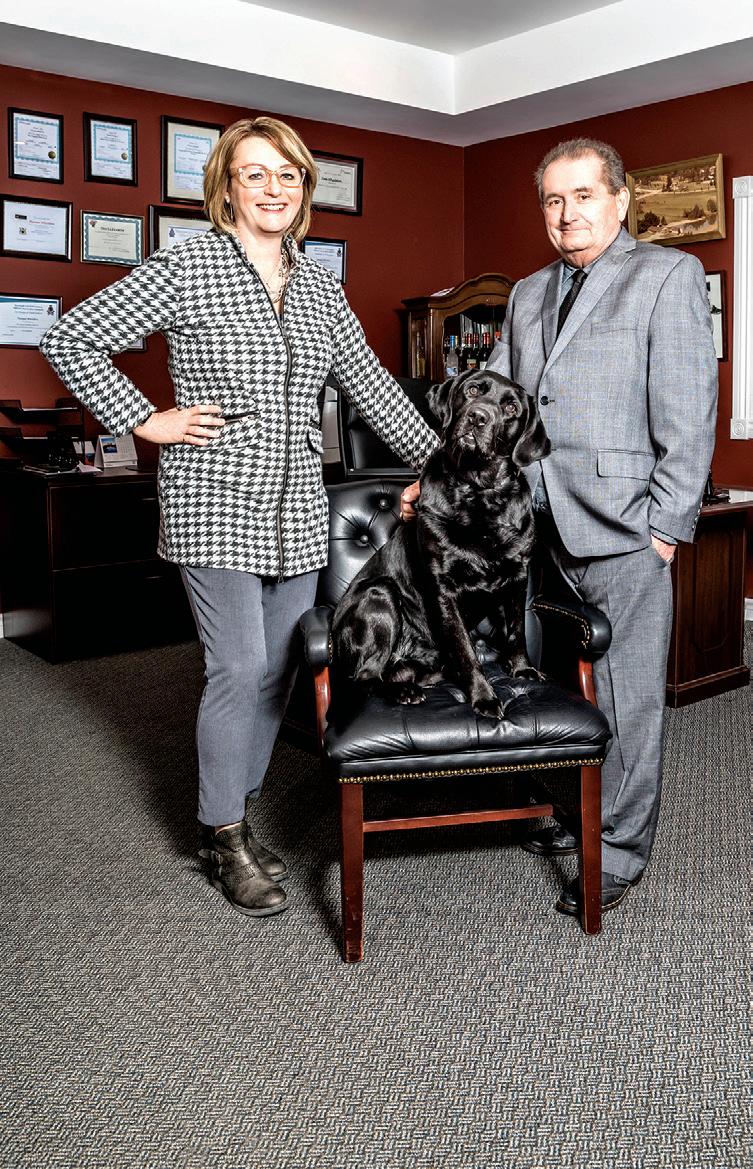







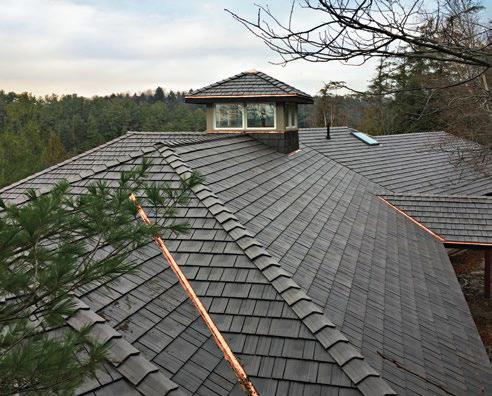


















Aluzy is a leader in the aluminum window and door manufacturing sector that have developed a unique European product dedicated to the Canadian market.


The Glass Place utilizes its experience and licensed glaziers to install and service the system that is complementary to its existing services.
































































































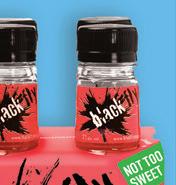







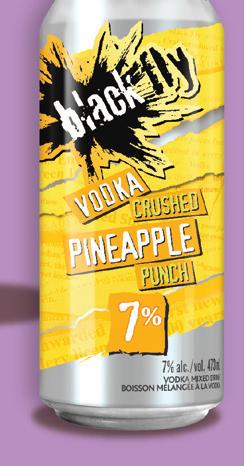














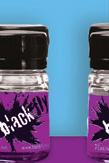



Windfall has partnered with RBC Royal Bank to offer an exclusive 3.99%, fixed-rate mortgage to help you secure your dream home. Explore extensive trails, hit the slopes, and sail on the shimmering waters of Georgian Bay. You’ll also enjoy luxurious spa-like amenities in your own backyard, exclusively for the residents of Windfall. This is everything you want Blue Mountain living to be.



Contact



This autumn marks a significant milestone for Escarpment Magazine—twenty-five years since my mother, Deena Dolan, acquired a small, black and white publication called Collingwood Condo & Chalet (original owners Joanne and Gerry Baker published the first issue in 1986). Back then, Deena embarked on a journey without knowing what lay ahead, and who could have predicted where this would eventually lead?
while acknowledging the path that brought us all here.

Along the way, there have been times when uncertainty made us question our pursuit, but we’ve stayed the course—remained an independent, locally-owned publication, with an eye on Deena’s original goals: to celebrate style, culture, and recreation in Simcoe, Grey, and Bruce.
Cara Williams Editor-In-Chief cara@escarpmentmagazine.ca
Even though I was on the far west coast at the time, she asked me to contribute a story for that very first issue. I had been writing for a while, but, funny thing is, I wasn’t entirely sure of my own direction in life and when we lack a precise roadmap, it often boils down to simply using the tools at our disposal in order to build something meaningful.
Seven years ago, I took on the role of Editor-In-Chief, and when Deena retired, my brother Clay purchased the magazine. Together, Clay and I have celebrated victories and faced challenges—and while it’s true that we didn’t (and still don’t) possess all the answers, we’ve placed our trust in this remarkable community and in one another.
We’re proud to be a part of this tradition of delivering stories that enrich our connection with the landscapes and people of our region
In a world increasingly dominated by digital media, I’m pleased to say that here in our little corner of paradise, print magazines still hold their appeal. The tactile experience of turning each page, the stunning photography that comes to life, and the pleasure of getting lost in a good story— these are all hallmarks of Escarpment Magazine.
After thirty-seven years as a local family-owned enterprise we extend our gratitude to you, our readers, contributors, and advertising partners, for your continued support. Your engagement with our publication and your embrace of local businesses keep our communities vibrant and strong.
Now, as the crisp air descends upon us, we invite you to enjoy this Autumn/Early Winter issue and immerse yourself in the stories, insights, and inspirations that await you on—and along—the Escarpment.




Surrounded by spectacular scenery, highlighted by our award-winning Clubhouse, Osler Bluff Ski Club embodies the elegance and beauty of the Niagara Escarpment.

Osler Bluff Ski Club provides access to our historic and romantic spaces, delivering an awe-inspiring experience. Whether at the foot of the mountain or on top of the escarpment at our unique oasis, the Upper Chalet, we can accommodate large weddings of up to 300 guests or provide an elegant and intimate experience.
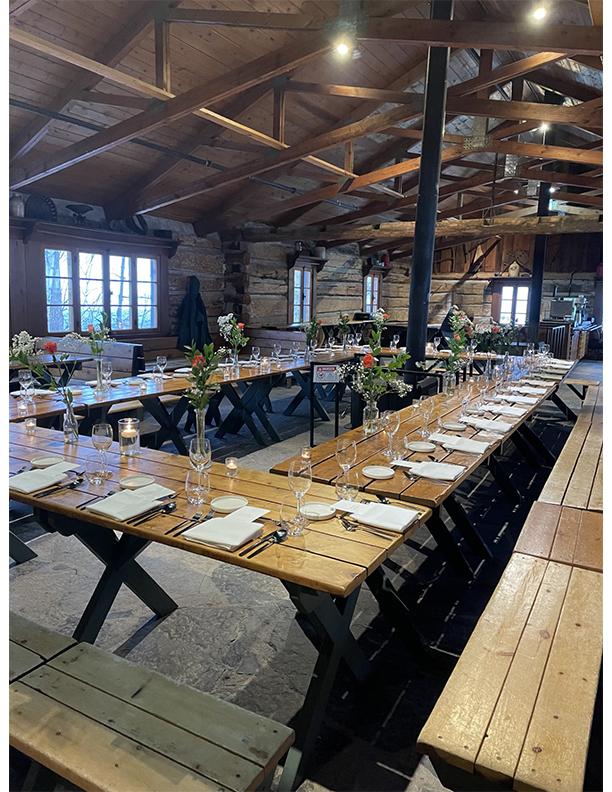
We look forward to hosting your special day.

OSLER BLUFF SKI CLUB
795534 The Blue Mountain Clearview Townline Blue Mountains, Ontario 705-445-4507 info@oslerbluff.com
oslerbluff.com
PUBLISHER/OWNER
Clay Dolan clay@escarpmentmagazine.ca
EDITOR- IN - CHIEF
Cara Williams cara@escarpmentmagazine.ca
ART DIRECTOR
Bradley Reinhardt bradley@escarpmentmagazine.ca
GRAPHIC DESIGNER
Alyshia Laube alyshia@escarpmentmagazine.ca
CONTRIBUTORS
Sara Angelucci, Katie Ballantyne, Christan Bosley, Sylvain Champagne, Kevin Coulter, Deena Dolan, Bonnie Dorgelo, John Fearnall, Bill Elder, Heather Goldsworthy, Viveca Gravel, Dan Graham, Joel Gray, Hannah Harradine, Nick Hamilton, Tyler Hickling, Tierney Hill, Marc Huminilowycz, Kate MacLennan, Marcia Masino, Michelle McMillan, James Simon Mishibinijima, Chris Monette, Shannon Craig Morphew, Michael Morris, ,Jo Redman, Laurie Severn, William Tam, Aidan Ware, Jody Wilson, Shelby Worts
MARKETING & ADVERTISING
ADVERTISING DIRECTOR
Geoffrey Cameron 416.910.9649
geoff@escarpmentmagazine.ca
OWEN SOUND / GREATER GREY & BRUCE Paul Evans 519.372.7766
paul@escarpmentmagazine.ca
info@escarpmentmagazine.ca
OFFICE 519.599.7545
Escarpment® is published four times a year by Georgian Bay Living— Escarpment® Magazine Inc. 25,000 copies. Distributed free of charge to hotels, shops, clubs, businesses and services all throughout Simcoe, Grey & Bruce Counties.
Paid Subscription holders have guaranteed mail delivery. Attention Postmaster: Please direct post office returns and changes of address to GBL—Escarpment® Magazine Inc., 183 Marsh Street, Unit 4, PO Box 107, Clarksburg, ON, N0H 1J0
Subscription rates: 4 issues (one year), $14.50 HST incl. or 8 issues, (two years), $28.00 HST incl.
No part or portions of this publication may be reproduced without written permission of the Editor. Opinions and statements written by contributors of Escarpment® and that appear in this issue or others are entirely their own responsibility and do not necessarily reflect the opinions of the owner of GBL—Escarpment® Magazine Inc.
Georgian Bay Living—Escarpment Magazine® and Escarpment® is a registered trademark of Georgian Bay Living— Escarpment® Magazine Inc. ©2022 All rights reserved. Escarpment is printed in a Canadian facility that operates in strict compliance to environmental concerns.
escarpmentmagazine.ca
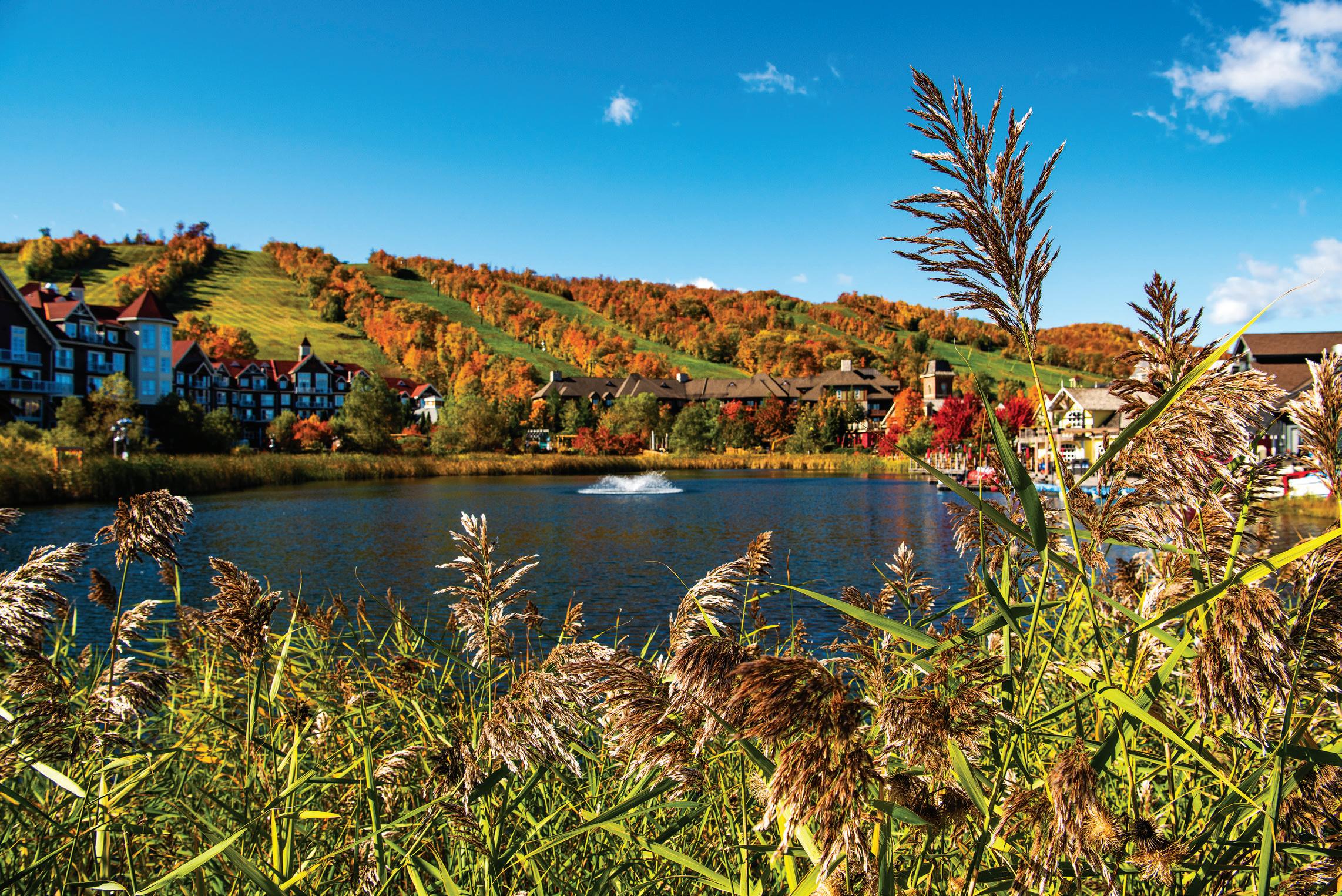


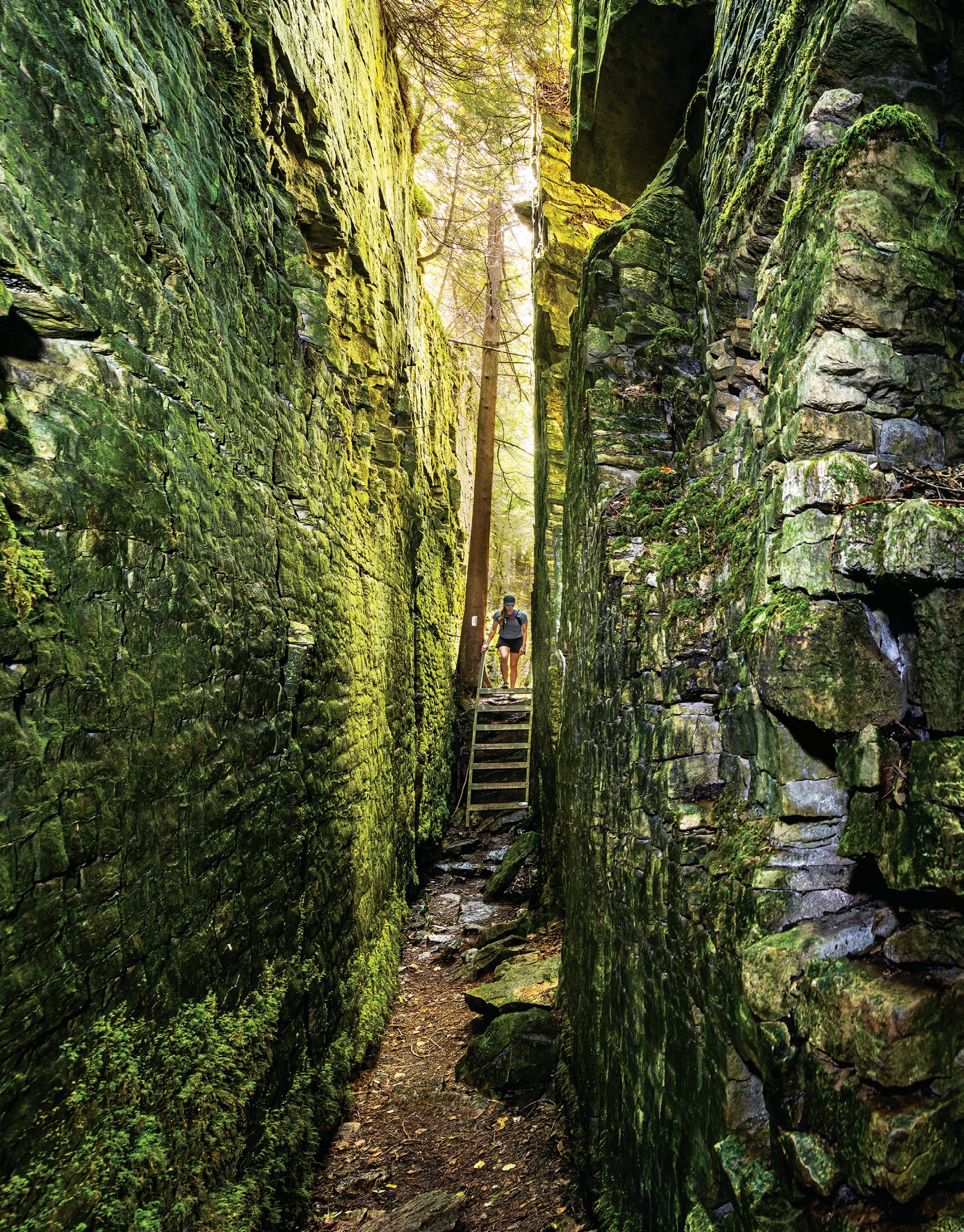
If you’ve explored the Niagara Escarpment in Simcoe, Grey and Bruce, you’ve likely encountered a cave or two. With a variety of options, from beginner to expert, now is the perfect time to explore the unique geological wonders that abound here.
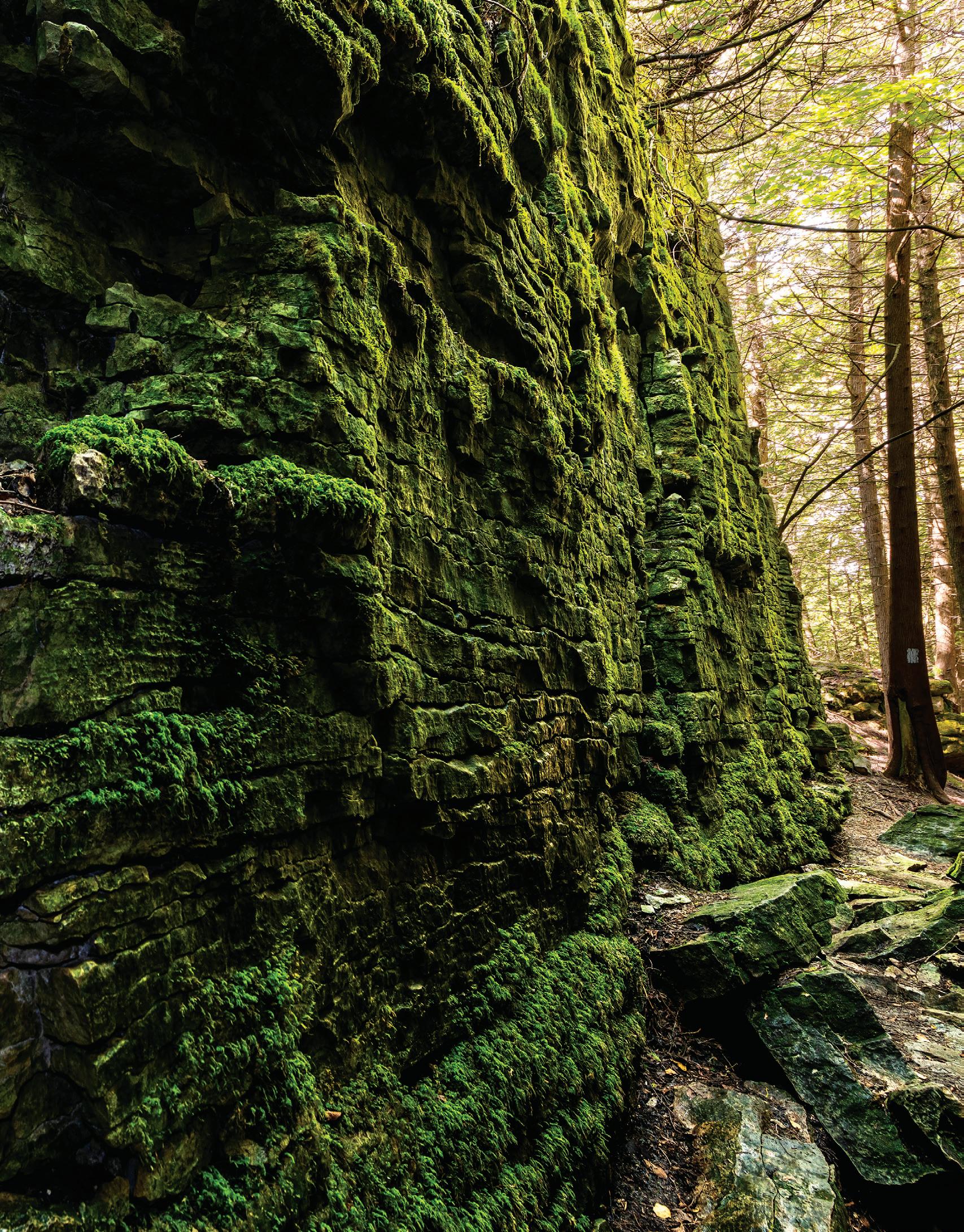 by Marc Huminilowycz | photography by Clay Dolan
by Marc Huminilowycz | photography by Clay Dolan
Iremember my first hike to the top of Metcalfe Rock in the Beaver Valley. As I ventured along the short trail, I encountered deep, seemingly bottomless cracks in the rock face, providing a tantalizing glimpse of what lay ahead. Continuing on, the path led me through a narrow canyon, enveloped on both sides by towering rock faces. While peering into caves along the way, I was greeted by invigorating bursts of cool air, a reminder that ice could linger deep within these caverns throughout the year.
With an abundance of caves, crevices, cliffs, and boulders scattered throughout the Niagara Escarpment, it’s no wonder that “spelunking” (cave exploration) is a popular activity in our region. Stretching 750 kilometres in Ontario from the Niagara River to Tobermory, the Escarpment was formally recognized in 1990 as a UNESCO World Biosphere Reserve, putting it in distinguished company with such exotic global locales as Africa’s Serengeti Plains, the Galapagos Islands, the Central Amazon, the Florida Everglades, and British Columbia’s Clayoquot Sound.
The formation of the Escarpment began 450 million years ago during the Ordovician Era when an ancient coral sea covering the land began to recede, eroding softer shales under harder dolostone rock. This caused large blocks of caprock to break off, creating magnificent cliff faces. Additional erosion from glaciers in the last two million years sculpted the countryside and moved huge rocks and boulders throughout the land. The forces of nature continued to shape the Escarpment long after the glaciers receded, as the expansion and chemical action of water dissolved the rock, carving out many caves and crevices.
The spelunking highlight of Metcalfe Rock is the “Ice Cave,” in which the temperature hovers around -2ºC in summertime
with rock covered by muddy ice but is actually warmer inside than outside in the winter. A local cave tour operator described it as, “A network of dark, damp, and eerily majestic ‘rooms’ accessible only by crawling, climbing, and squeezing yourself through a bottleneck in between the rooms.”
In addition to its spectacular caverns, fissures, and spectacular Beaver Valley views, Metcalfe Rock reveals another secret, with ancient eastern white cedars 500 to 1,000 years old clinging to the edges of the cliffs, still standing today only because they were inaccessible to logging. You can access Metcalfe Rock and its caves via a short side section of the Bruce Trail located by a parking area off the 10th Line in The Blue Mountains. Beyond Metcalfe Rock is the magnificent 50-kilometre Kolapore Wilderness Trail, which offers more caves and crevices to explore, as well as challenging mountain biking and cross-country skiing.
Established back in 1932, Scenic Caves is probably the granddaddy of all public cave sites on the Escarpment. The privately-owned 370-acre property at the top of Blue Mountain



features 15 kilometres of trails meandering through a naturally beautiful landscape, including a descent into a crevice, where you can explore a labyrinth of caves and caverns twenty-one metres below the surface. It also offers Southern Ontario’s longest suspension footbridge and groomed Nordic ski and snowshoe trails.
Scenic Caves also has a fascinating indigenous history. Around 1600, as many as 8,000 aboriginal people of the Wyandot nation – Huron and Petun (“tobacco people,” as named by the French) – inhabited nine villages along the Escarpment from Creemore to Craigleith. One of the most significant among them was Ekarenniondi, meaning “where the rock stands out,” named after a sacred rock that served as a marker on the path to
the “Village of the Souls” (the afterlife).
Jean de Brébeuf, a Jesuit missionary, documented Ekarenniondi in his writings. Within this narrative, he mentioned a spirit known as Oscotarach, or “Pierce-Head,” whose role was to erase the memories of the departed to prevent them from yearning for their past lives. During his time in the area, de Brébeuf also encountered a local shaman named Onditachiaè. This shaman would perch atop the rock, gazing out over Georgian Bay, and exhibited the ability to influence the weather. For the Chippewas of Rama, this particular rock holds a special significance as the nest of the Thunderbird, a spirit attributed with various powers, including the control of weather.
Named after the Petun people, Petun Conservation Area is located near Scenic Caves on the 2nd Line in The Blue Mountains. It boasts one of the highest elevations on the Niagara Escarpment and the 100-acre site offers visitors the opportunity to hike the 5.5-kilometre Petun Trail that winds its way through a myriad of rock faces, cliffs, and crevices.
Located in Duncan Escarpment Provincial Park, Duncan Crevice Caves is a 10-kilometre Bruce Trail loop near Ravenna just off Sideroad 9. It features a series of rocky tunnels, caves, nooks, an old-growth forest filled with ancient white cedars, and a stunning cliffside lookout.
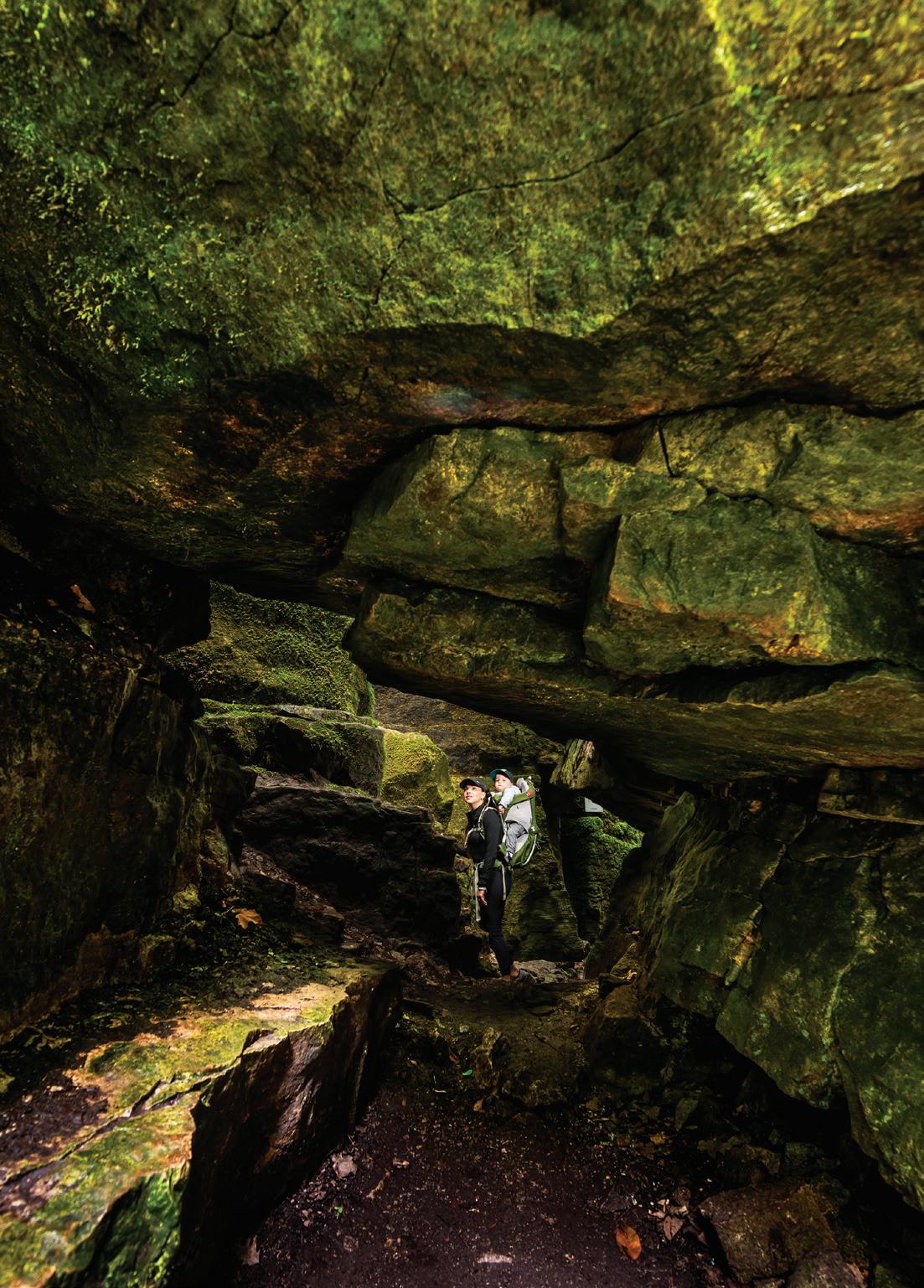
Situated in the Nottawasaga
Lookout Provincial Nature Preserve near Duntroon is a 1.9-kilometre loop trail that leads to the Singhampton Caves and Standing Rock detour. This trail is a great family hike featuring the giant Standing Rock pillar and many little side caves to check out and scramble through. It also takes you through rock formations that require some crouching and sliding down through openings, with some steep sections. It leads to the Standing Rock Lookout with a spectacular view of the Pretty River Valley.
Boyd Crevices is an in-and-out trail located on Sideroad 10 just east of Owen Sound and is considered a hidden spelunking gem, with a labyrinth of mini-canyons, caves, and fissures. It’s a magical, other-worldly place that takes you into a giant crevice with towering rock walls on both sides. A ladder at the end of the crevice takes you to the top, where several caves can be explored.



Boyd Crevices is a hidden gem... it’s a magical, other-worldly place that takes you into a giant crevice with towering rock walls on both sides.

Another out-andback, is the Keyhole Trail.
This 2.7-kilometre Bruce side-trail, located within the Nottawasaga Bluffs
Conservation Area near Glen Huron, offers a captivating journey. It guides you along a path that ascends a slope, meandering through substantial rock boulders, navigating narrow crevices, and culminating in a thrilling passage through a small rock “keyhole” (In case it’s a tight fit, there’s an alternative route available). When you rejoin the main trail, you can continue on to Freedom Rock and Best Caves.
Northeast of Wiarton, near the hamlet of Oxenden on Colpoy’s Bay, you’ll find a captivating assembly of sea caves. These remarkable geological formations took shape around 7,000 to 8,000 years ago, sculpted by the relentless wave action of post-glacial Lake Algonquin. Bruce’s Caves Conservation Area includes a 2.9-kilometre loop trail through a beautiful hardwood forest with mossy rocks and a wooded swamp. It culminates in a spectacular display of shore caves that feature beautiful hourglass columns, deep caverns and hidden back entrances for more adventurous spelunkers to explore.
If shore caves are your passion, venture further north on the Bruce Peninsula near Lion’s Head to Grieg’s Caves, a privatelyowned and operated attraction that offers self-guided explorations of ten impressive limestone sea caves. A rugged trail on the property ninety-one meters above the water, where scenes for the movies Quest for Fire and Against the Wind were filmed, offers breathtaking views of the crystal waters of Georgian Bay.
When you’re out there exploring the many caves and crevices in the Niagara Escarpment, remember that you’re entering a primeval realm—the very core of ancient rocky formations shaped and sculpted over eons by the forces of nature. Happy spelunking! E
Most of the trails leading to caves and crevices described here are classified as moderately challenging, so a certain level of fitness and the right hiking gear are required. Spelunking doesn’t require any fancy equipment, just a good pair of shoes or boots, warm clothing (be prepared to get dirty), and steady legs because it can be cold and cave rock is often slick and unstable.
Caving can be spectacular, but it can also be claustrophobic. That’s why it’s important to bring two reliable flashlights—and never explore alone. If you’re hiking with family on a trail with deep fissures nearby, like at Metcalfe Rock, always keep kids safe and your dog on a leash.
Consider packing a guide book such as the Bruce Trail Reference Guide or download the Bruce Trail App, which includes parking information, trail maps and other useful information.
Please exercise extreme caution when hiking and caving; wear proper footwear; stick to the marked trails; do not trespass; check the weather before you go; obey all warnings posted at the trailhead, along paths and at caves; pack out what you pack in.

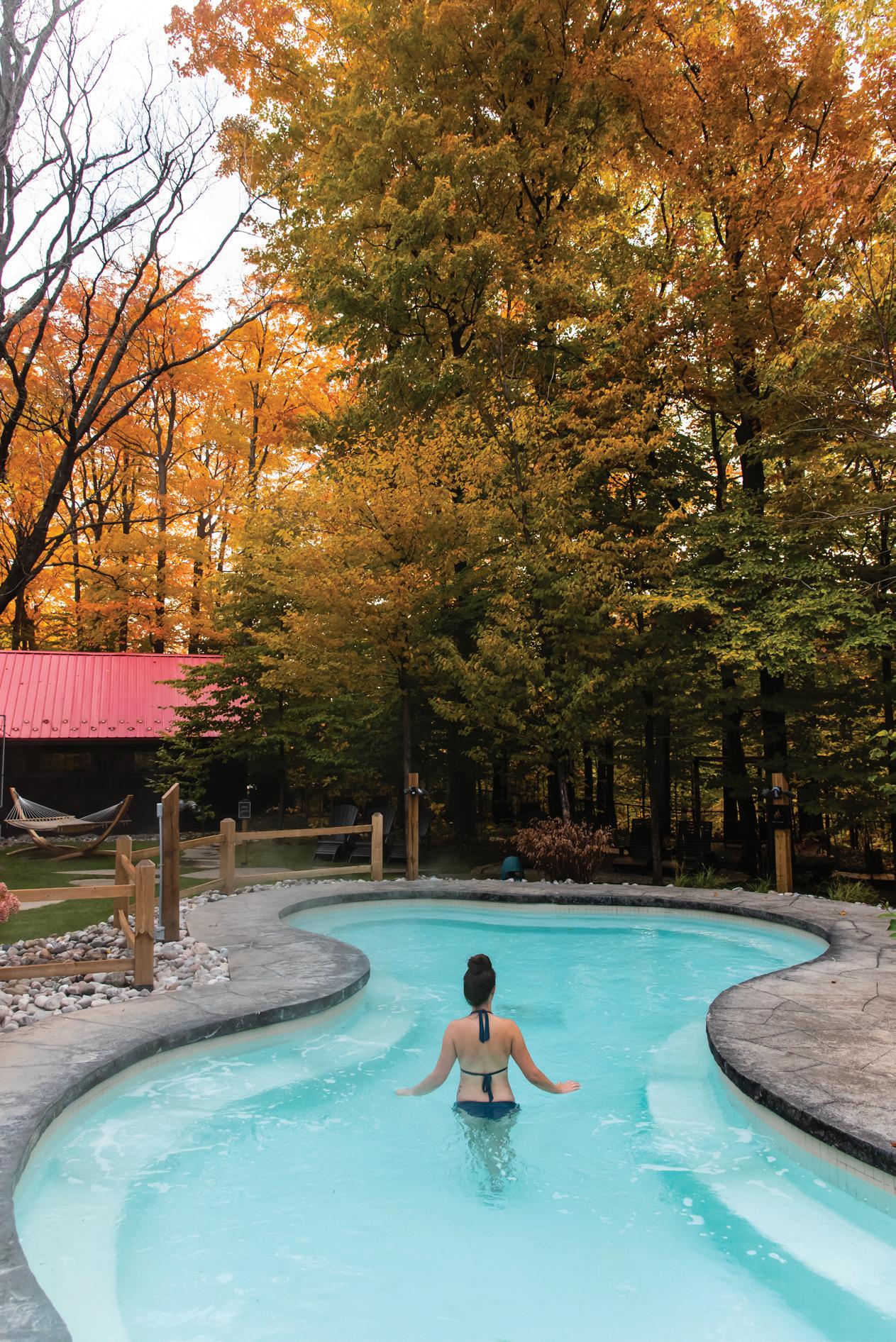







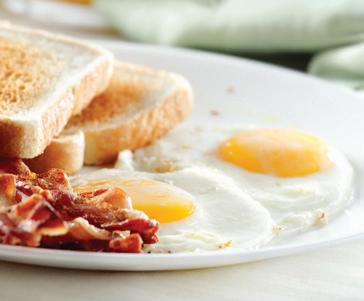

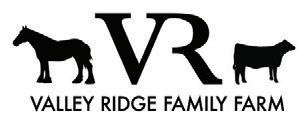





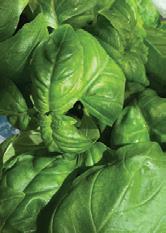
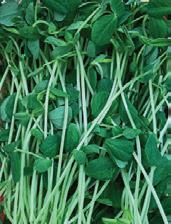










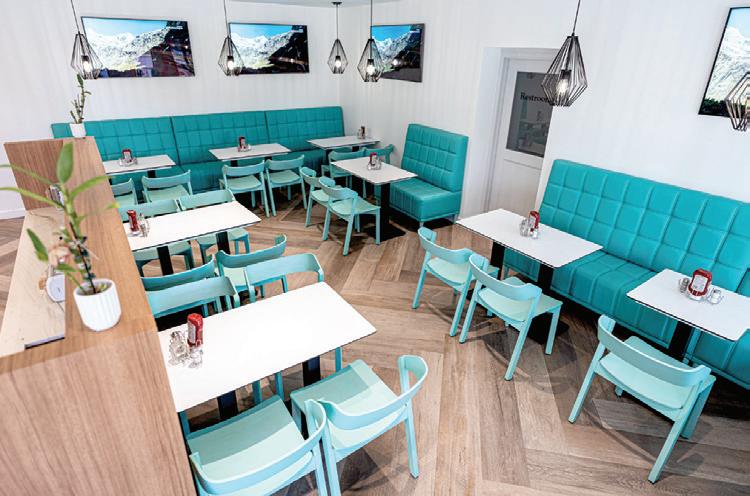


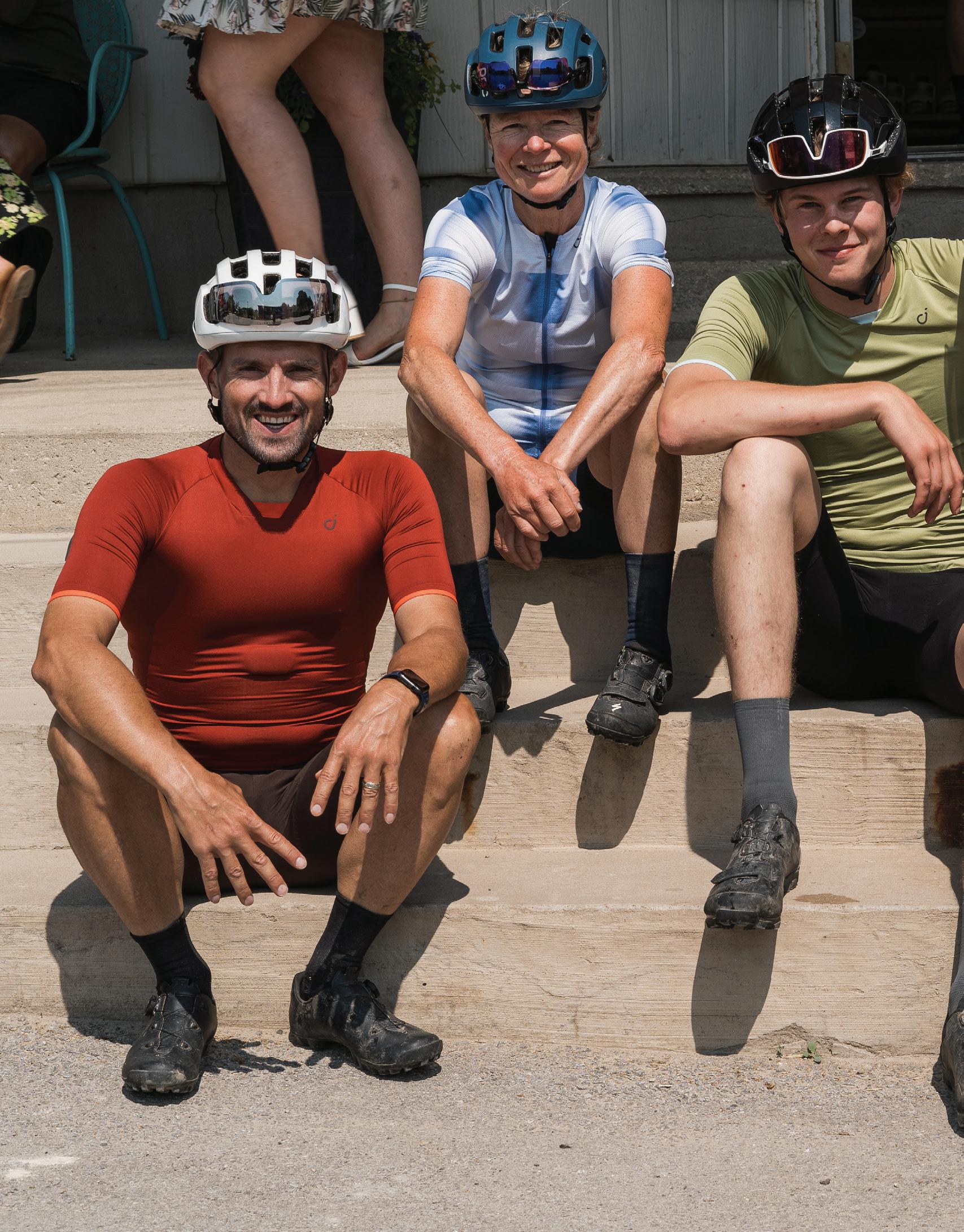

A diverse group of cyclists face challenges, conquer fears and discover the power of unity on an epic ride through the No Winter Maintenance bikepacking route.
We met before dawn, just outside of Collingwood, on a cool morning. The moon was still looming overhead as our lights guided us towards each other. The other four riders were local to Collingwood and were good friends, while I was from Guelph, a few hours away, and had known only Jody Wilson, the hub of the group and a fellow Velocio ambassador. We were a diverse group. Jody was a fixture in the Collingwood bike scene, a seasoned rider, recently back from Spain where he had raced in the 360-kilometre route of the Girona Traka, and the founder of The Gravel Society cycling group. Neil Gold was a national sales manager for Cannondale; he loved challenging, technical riding and was not afraid of getting dirty, as he did recently at Ghost of the Gravel race in Water Valley, Alberta. Hannah Rydlo and Pryer Hollin were both university students and talented cyclists. Hannah recently raced the UCI gravel Fondo in Collingwood, coming 6th in her age group, while Pryer was an exceptional downhill rider, racing for Kamikaze Bike’s team and putting in some impressive results at races like The Sea Otter Canada Air DH and the Horseshoe Triple Showdown. At 58, I was the elder stateswoman by a few years, and though I had a strong background in bikepacking and other endurance sports, I was glad that it was only afterward that I learned the pedigree of the other cyclists in the group.
The idea for the ride had begun many months ago when Matt Kadey, organizer of the No Winter Maintenance route (NWM), had proposed that the grand depart for the NWM be a memorial ride for Kevin Walsh, a pedestrian who was tragically killed by a
hit-and-run driver in July of 2022. Kevin had been a passionate and talented cyclist, a community volunteer who served on the board of the Kolapore Wilderness Trails Association, and an avid explorer of local bikepacking routes. Kevin’s partner, Lisa Pottier, explained, “Kev loved the sense of a community carrying out meaningful projects together. Ultimately, he always wanted to make things better for a wider community; he was excellent at doing so and mastered a ‘working hard, playing hard’ life balance.”
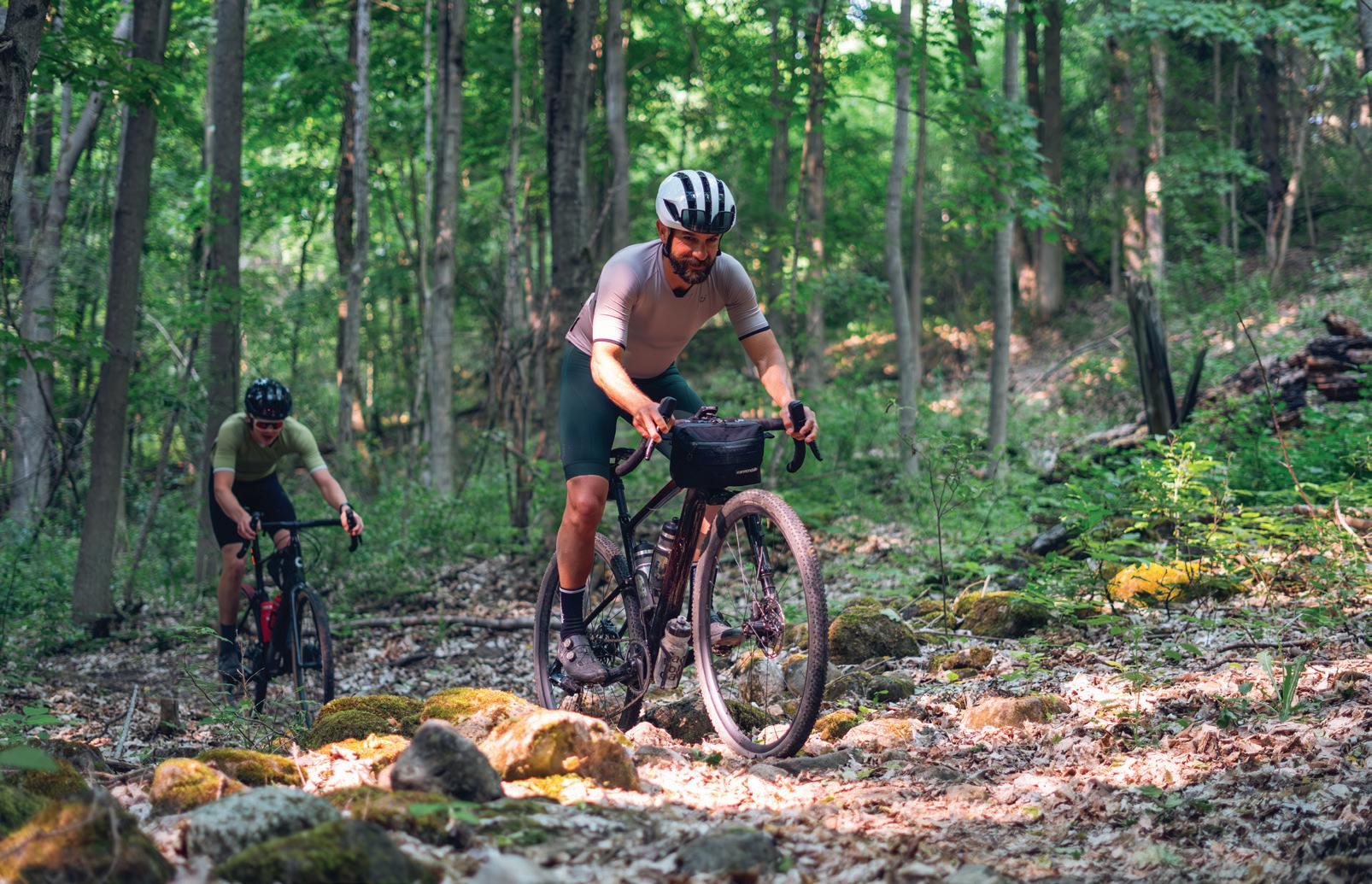
Jody and Kevin became friends through The Gravel Society, exchanging stories and laughter each Tuesday night on a different route. Jody spoke of the weight of Kevin’s absence: “This past year, Kev has been greatly missed by myself and our little gravel group. I keep his spirit alive by remembering a few of the crazy moments we shared descending specific trails or racing up certain climbs. I love to tell people about Kev and his wonderful spirit on the bike; he will always be with us on Tuesday nights.” As a tribute to Kevin, Jody had mapped out a route that would take us on the northern loop of the NWM, including some of the trails that Kevin had explored and loved.
Even before our group of five met for the first time, we were connected, in a sense, by our shared trepidation. I had been worrying for days about whether I would be able to handle the single-track portions or the steep climbs. Neil told me that he, too, had a litany of concerns: “How much do I eat before? Am I bringing enough food? Where will I fill my bottles if it really warms up? Is my bike ready? What to wear?” Finally, Hannah had her fears: “In the days leading up to the ride, I had been too

preoccupied with work and prep to give myself a chance to think. But now, facing the cold nighttime air, a wave of self-doubt rushed through me. I tried my best to push these anxious thoughts away, but I also had to acknowledge it was valid that I was nervous; after all, this was going to be my longest ride by about 60 kilometres. I didn’t want to hold the group up. I worried I hadn’t packed enough food or that I would get hurt or that I would get too tired and would have to turn back.”
Though each of us may have started off with our private worries, one of the benefits of cycling in a group is that it takes you outside of yourself and away from your own preoccupations. As Hannah said, “as soon as I got on my bike, most of those fears fell away. Something about the simple act of pedaling let my mind calm, and I just focused on the tire in front of me.” As we started into the first climb, with the gravel crunching beneath us, our voices were threaded together in conversation, and the world slowly materialized out of the darkness. The drop-in temperature was a clear indication we were climbing the Niagara Escarpment, and we all shivered with a collective chill.
Descending into the valley, we rode through a marshy area, pausing on a small wooden bridge as the rising sun turned the world and ourselves a golden hue. It felt like a gift to be so immersed in the world, free of daily distractions, with the space and time to sit and marvel at this silent and pristine place.
Of course, one cannot marvel forever, and after Jody scrambled back from the reedy marshes where he had ventured to capture the moment, we started into some rocky, rooty, and muddy sections, which is where I took my only tumble of the day, leaping
up relatively unscathed and moving on with the group, my focus outwards. Thus, the aches that I might have obsessed over while riding alone became more muted, and only later did I notice my bruised state.
It was while we were climbing one particularly intense pitch that the day took a potentially disastrous turn for Neil: “just as the difficulty level increased and we were climbing up a techy rock section of the Escarpment, where my bike and strengths should shine, I pushed with almost maximum effort attempting to clean the line with no dabs. And, crack! Out of nowhere, a branch jumped into my rear wheel and derailleur, spinning the hanger and derailleur into a contorted position that no one’s bike should ever be in. I stopped pedaling and jumped off immediately to prevent damaging anything further. To say the least, I was crushed. I didn’t have a spare derailleur hanger with me (lesson learned!). Pryer and I attempted triage. After a few thousand mosquito bites, we had the bike upside down and were able to salvage three or four gears and get the bike rolling to complete the day.”
While we watched Neil and Pryer fix the wounded bicycle, other cyclists appeared out of a ghostly dawn, packed up on a wide range of bicycles, and beginning their second day on the NWM route. There was a sense of camaraderie amongst them that was almost palpable, and I felt the warmth of it as they greeted us and inquired about Neil’s bike.
Once the repairs were complete, we tackled the first big descent (down Sideroad 7B), which offered lots of fresh gravel. Knowing the road well, Neil warned me that I could not just let it rip. I thought, there’s no danger of my doing so—in fact, my




Though each of us may have started off with our private worries, one of the benefits of cycling in a group is that it takes you outside of yourself and away from your own preoccupations.

greatest concern was that I might actually wear out my brake pads before I reached the bottom of the hill, and I confess I used the brakes quite liberally all the way down.
The reward for getting down the hill safely was the Kimberley General Store, which was buzzing with the energy of a dozen riders sipping on fresh coffee and feasting on fresh butter tarts and quiches, all made in-house by the very kind owners who had opened early to accommodate the cyclists. I consumed a coffee and tart with abandon, not realizing the steep climb up ahead on Sideroad 7A. I was grateful we were traveling with no packs, as we passed several cyclists whose load forced them to walk their bikes up the steepest pitches of 15%. Pryer, in contrast, managed to do a wheelie as he rode, but I am chalking that up to youthfulness, and told him I would be truly impressed if he could repeat such a feat when he is in his 50s, which he will no doubt manage to do.
There were so many beautiful moments on the single-track sections, but by far the most moving one was reaching the trailhead for Kev’s Way, a new trail that had been developed by the Kolapore Wilderness Trails Association and named in honor of Kevin Walsh. I wish I had had the privilege of knowing Kevin, who had clearly been a vibrant and generous member of the cycling community and who is deeply missed by his friends and family.

As we were winding our way up one particularly steep section of rocky trail, my confidence faltered, and instantly I lost momentum and had to clip out and walk, as did Hannah who was just ahead of me. We grumbled a bit about walking when we should be riding, and then, with the next pitch looming, we got back on our bikes. I watched Hannah pick her line and drive up to the top, and I was determined to do the same. With Jody encouraging me from behind, I surged up the steep pitch, focusing on my path, keeping my front wheel down. I was elated when I reached the top, knowing that had I been by myself, I would have walked up that section, and that only the faith and energy of the group had compelled me to keep going.
While it might be easy for a group to be unified at the beginning of a ride, when spirits are high and everyone is eager for adventure, what is more telling is the final part of the journey, when legs are tired, the day is growing cold, and the wind is kicking up. That is where the strength of our group really shone through. We continued to pull each other along, with Jody shepherding us and stopping for brief fuel breaks when necessary. Near the end of the ride, he could hear me behind him, a crazed animal tearing through the wrapper of my final bar, and he drifted back to make sure I could sit on his wheel while I frantically gnawed away. With ease, he pulled us back to the other three who had raced down the last hill with joyful abandon.
Part of what made the day special was not that our fears never came to pass, but rather that they did, and we conquered them. As Hannah recounted, “I got stung by two bees just as we were heading up a steep and technical climb. At 90 kilometres, I started to bonk. Somehow, though, over the course of the ride, I became confident that I could overcome the obstacles I had been so worried about. I fought through the pain of the bee stings and was able to eat an entire bag of chips while riding to combat my bonk. As we passed the point of my longest ride, I no longer felt the fear I had felt in the morning, but in its place, I felt excited at my new accomplishment, and immensely proud.” I felt a pride similar to Hannah’s. I had feared the technical parts of the route, but had surmounted them. Sure, I crashed once, and had to unclip a few times, but as I kept going my confidence grew. Finally, Neil had worried about whether or not his bike was ready to go, never imagining that a close encounter with a stick would do such harm, and yet in the end he crushed the ride despite such damage. We had worked as a unit, facing the challenges and enjoying the gifts that the day offered, and as we reached Collingwood and prepared to go our separate ways, our weariness was eclipsed by euphoria and gratitude. E





As autumn paints the landscape with vibrant hues, the Escarpment becomes an inviting playground for both locals and visitors to discover. While you likely have a few autumn traditions of your own, we have a few fall bucket list items to add to your slate.
 Hoggs Falls
by Cara Williams | photography by Clay Dolan
Hoggs Falls
by Cara Williams | photography by Clay Dolan
What better way to embrace the autumn season than by traversing an extensive trail network. This autumn marks the 50th anniversary of the Kolapore Wilderness Trails. Originally organized by a cohort of University of Toronto students in 1973, today the Kolapore Wilderness Trails Association manages a 50-kilometre network of trails in the Kolapore Uplands. The shifting foliage adds an extra layer of picturesque beauty to your ride, run or hike. For trail maps, membership, details, and upcoming events, visit kolaporetrails.org

Stretching a magnificent 420 feet in length, the suspension footbridge at Scenic Caves in the Blue Mountains proudly claims the title of southern Ontario’s longest, offering unparalleled vistas of Georgian Bay and its breathtaking surroundings. Suspended at a remarkable height of 82 feet above the forest floor, it creates a surreal sensation of floating among the ancient forest canopy. The bridge grants you a full 360-degree panorama, and thanks to the chain-link fence along its length, not a single view is obscured. It’s an invitation to fully immerse yourself in the embrace of nature, challenge your comfort with heights, and revel in the sheer beauty that envelops you from every angle.
embark on an upstream migration from the Great Lakes, seeking the shallows to lay their eggs before the onset of winter. An iconic feature of the town, the Thornbury Fishway (also known as “the fish ladder”) was designed to mimic nature, assisting fish as they swim upstream to spawn. Every autumn, crowds gather to witness jumping Chinook salmon as they fight the battle of their lives, attempting to make their way up the ladder and into the Beaver River to find suitable spawning areas in gravel beds. In Owen Sound, walk the trail from Harrison Park to Inglis Falls Conservation Area and see Salmon migrate up the Mill Dam and fish ladder. Ensuring unimpeded access to suitable spawning grounds is vital for the survival of rainbow trout and Chinook salmon populations— thanks to these fishways, migratory fish gain entry to several kilometres of pristine cold-water streams.

Fernwood Farms and Market in Stayner, T&K Ferri Farms in The Blue Mountains and Grandma Lambe’s in Meaford. It’s worth noting that Simcoe, Grey, and Bruce counties boast an abundance of wonderful farm markets, with countless more waiting to be explored!
With the cooling temperatures, Pacific salmon species like Coho and Chinook
Fall wouldn’t be complete without taking a trip to one of our local orchards and farm markets for the season’s crowned jewel—apples. Once you pick the freshest and crispest of the bunch, check out what other family-friendly activities are offered; you’re likely to find corn mazes, pumpkin painting parties, hayrides, and more. Among our top recommendations are the Farmer’s Pantry in Clarksburg, Goldsmiths Market in Thornbury,
Explore the beauty of a waterfall hike this autumn—the stunning foliage will add a colourful touch to your adventure. It’s hard to narrow down our favourites, but Eugenia Falls Conservation Area, located in the charming Village of Eugenia, is the highest Grey County waterfall. Here, water plummets 30 metres, over the Niagara Escarpment, into the steepsided Cuckoo Valley gorge. Hoggs Falls is often called one of Grey County’s best-kept secrets—the falls are surrounded by lush, green cedars and ferns. Both waterfalls are notable stops on the Grey County Waterfalls Tour, where you can experience the serene beauty of nature and witness the impressive waterfalls amidst the vibrant colors of autumn. For more information and a list of waterfalls, go to visitgrey.ca
Paddle the Beaver River
Meandering gently from Simcoe County through the Grey Highlands, the Beaver River carves a picturesque path through the Beaver Valley, ultimately reaching Thornbury and Lake Huron. This broad,







leisurely flowing river presents a unique vantage point, and the calm waters and scenic views are especially enchanting in the fall. The Beaver River Canoe Route begins north of Kimberley, and winds its way through open areas and wooded stretches, with several views of the Niagara Escarpment, ending at the village of Heathcote. Wildlife viewing opportunities are excellent, as is fishing. Short portages may be required to bypass log jams. Head over to visitgrey.ca for routes and more information.
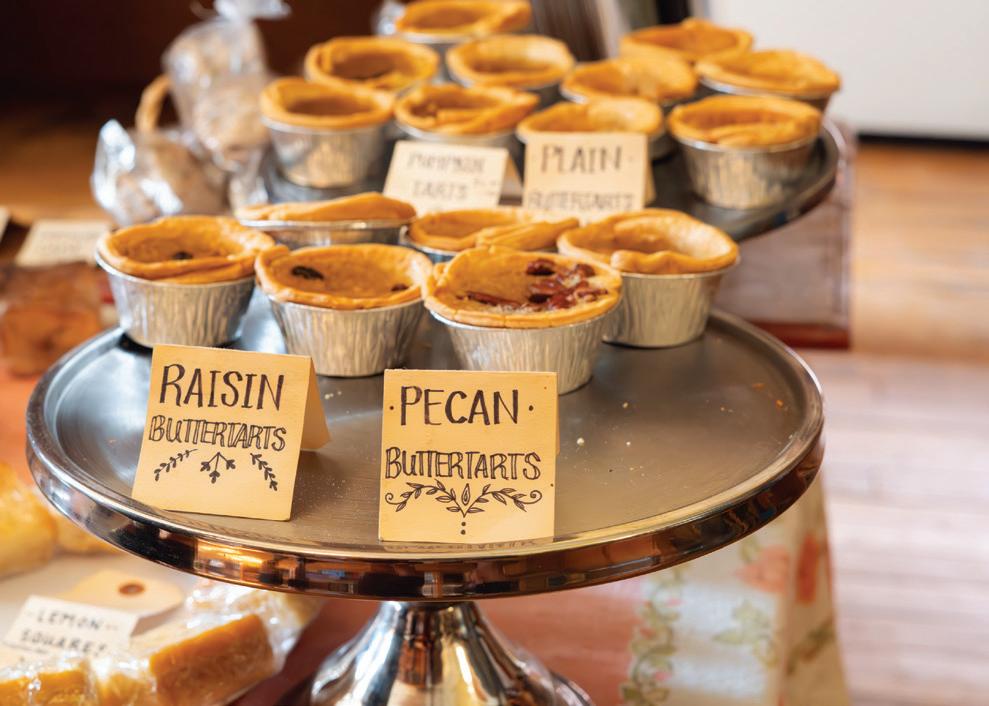
With nearly 30 distinct stops promising enjoyment for the entire family, the Apple Pie Trail is an essential autumn experience. Explore Southern Georgian Bay, touring Meaford, Thornbury, the Blue Mountains, Beaver Valley, and beyond. This apple-inspired self-guided trail offers a delightful journey where you can uncover seasonal menus filled with delicious offerings, sample award-winning local ciders, and indulge in tempting apple tarts and treats at restaurants, cafes, wineries, cider houses, shops, and farmer’s markets. Embark on an adventure through the Trail’s numerous orchards and breweries, immerse yourself in apple-themed art, partake in outdoor activities, and delve into the rich history of apple country. Experience the passion that drives our local farmers, business owners, distillers, and artisans as they wholeheartedly embrace the world of
apples. You can easily start your adventure by downloading the app or picking up a self-guided map at applepietrail.ca!
Grab your binoculars and head to the Bruce Peninsula for an unforgettable experience. Located on a major northern migration route, the Bruce Peninsula is a birdwatcher’s paradise. Here you can spot some of Ontario’s rarest birds, such as the Bald Eagle, Golden Eagle, Whippoor-will, Great Blue Heron, Snowy Owl, Plover, Hawk and many more species. Cabot Head is an important stopover site for migratory birds. Many species gather here in globally significant concentrations
during their fall migrations. Cabot Head is also home to Bruce Peninsula Bird Observatory and is designated an IBA (Important Bird Area)
Exploring the vibrant towns of Creemore, Collingwood, Kimberley, Thornbury, Meaford, and Owen Sound is a delightful journey into the heart of locally owned retail shops and restaurants. Each of these charming communities (and everywhere in-between) offers a unique blend of character, culture, and culinary delights. Wander through the quaint streets to discover boutique stores filled with artisanal crafts, one-of-a-kind fashion, and exquisite home decor. Then, treat your taste buds to an array of flavours at cozy, locally owned restaurants that serve up farm-to-table dishes and regional specialties. These towns encapsulate the essence of community spirit, making every visit a warm and welcoming experience that celebrates the creativity and culinary expertise of their passionate entrepreneurs.
Enjoy checking off these autumn activities while embracing the beauty of the Escarpment fall season! E


















Superbike racer Ben Young has once again etched his name in the history books by securing an unprecedented third consecutive Bridgestone Canadian Superbike Championship.

 by Cara Williams |
by Cara Williams |
photography by Sylvain Champagne
A STORYBOOK ENDING, it all came down to the last lap—the culmination of a thrilling season of superbike racing for Blue Mountains local Ben Young. In the final weekend of the Bridgestone Canadian Superbike Championship (CSBK) at Shannonville Motorsport Park in mid-September, Ben was locked in a heated battle with rival Alex Dumas, sitting just five points behind in the overall standings going into the weekend. After crashing the day before, Alex managed to get the holeshot and maintained his lead throughout the race. But as the final laps unfurled, Ben’s pace increased, and the gap between him and Alex dwindled. On the final lap, Ben overtook the leader as they entered turn four—the very spot where Alex had suffered a crash just a day earlier. He then held off not one but two retaliation attempts, ultimately clinching his fifth consecutive victory and, in the process, securing his third overall Canadian Superbike Championship.
Born in Scotland, Ben moved to the Blue Mountains at the age of 14 with parents Lynn and Scott and older sister Robyn. From the beginning, family played a significant role in Ben’s racing. “It seems like every year it just keeps getting better and
better,” says Ben. “My family is still very involved. My mom cooks all the food for the guys, and my dad helps with the tire changes and the fuel, which is nice because it’s important to have people around you that you trust.”
Ben’s journey to becoming a three-time Canadian Superbike Champion was not without its challenges. He started his racing career in the competitive world of amateur racing, working tirelessly to hone his skills and gain recognition. His natural talent and dedication quickly caught the eye of sponsors and racing teams, paving the way for him to enter the professional circuit. In 2014, Ben Young made his debut in the CSBK, competing in the Pro Sport Bike class. His performance was nothing short of spectacular, earning him the “Rookie of the Year” title.
When we first wrote about Ben back in 2019, he spoke about the monetary cost of superbike racing: “Not having the money to invest in it was frustrating. At the end of 2018, we decided to go all-in and put our money into the bike. We won a race and came second in the next race by just 0.1 of a second, so it really shows what advances to the bike can do.”
Ben secured his first CSBK Championship in 2019, at which point the Ben Young Racing team went all out, raising funds and securing vital sponsorships. The 2020 season was put on hold due







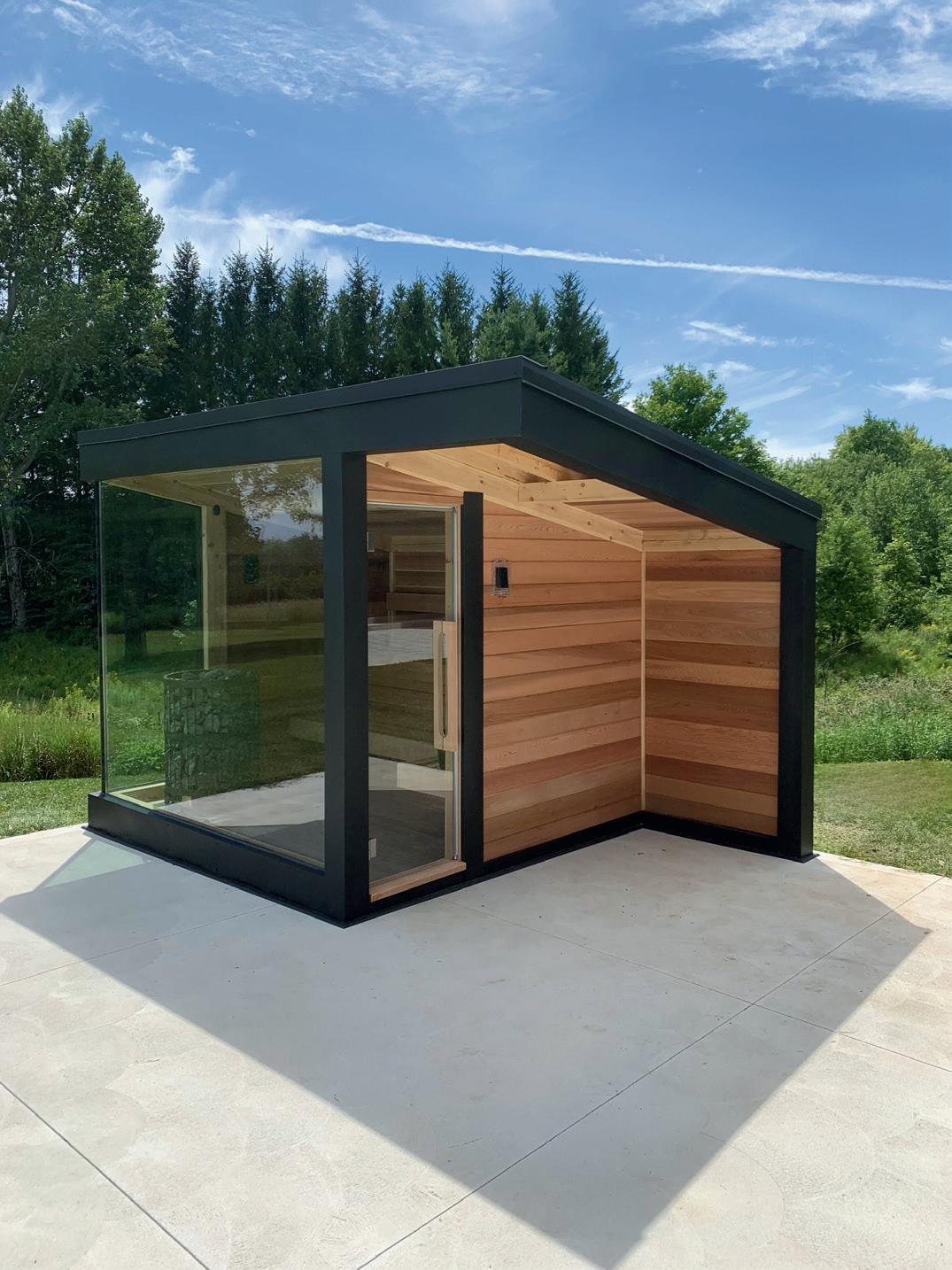
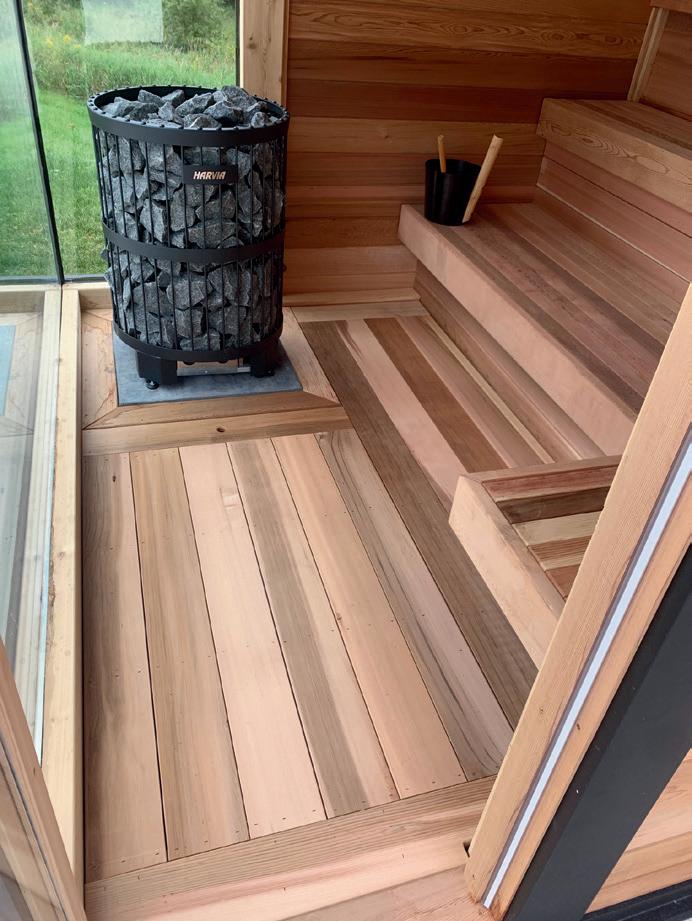
to the pandemic, but once racing resumed, Ben clinched his second consecutive title in 2021. Ben’s outstanding results, combined with his ability to handle the bike with precision and finesse, attracted even more attention from sponsors. His partners for the 2023 season include BMW Motorrad Canada, Van Dolder’s Home Team, Scot-Build Developments Inc, Parts Canada, HJC Helmets, Alpinestars, Hindle Exhaust, Clearlite, Primitive Patterns, DP Brakes, alphaRacing, Vass Performance Cycle, Cartier Racing, and Bickle Racing.
“Thankfully, I am now able to make a living at this,” says Ben, who can be seen overseeing various custom home projects across Collingwood and the Blue Mountains with Scot-Build Developments Inc, a family-run custom home builder renowned for their Scottish longhouses. “I still work with my dad, because I love it, and what else am I going to do during the weeks and winter. In terms of racing, this year has been a really big year for us. CSBK changed the tire supplier from Dunlop to Bridgestone,
and Bridgestone is very involved in motorsports, so we were able to race at Daytona thanks to them— they’ve opened a lot of doors. So that’s helping us. And it also helps when you have really good weekends like last weekend.”
What truly sets Ben apart is his consistency in the sport—winning a championship is challenging, but defending it is even more so. Looking ahead to the future, Ben notes, “I’m now 30, and my partner and I want to have kids in the future. It’s tough to make a plan, but I’d like to keep racing and push to the top.”
Whether he continues to dominate the superbike racing scene or explores new avenues within the sport, one thing is certain: Ben Young’s legacy as a three-time Superbike Champion will endure for generations of racing enthusiasts to come. E
To stay up-to-date on Ben Young throughout the year, visit www. BenYoungRacing.com, www.facebook.com/BenYoungRacing, and on Twitter and Instagram: @benyoung_86.

What truly sets Ben apart is his consistency in the sport—winning a championship is challenging, but defending it is even more so.
Clear View Electric Ltd has developed a reputation in the custom home and renovation market in Simcoe & Grey Counties. Whether we are involved in custom homes, extensive renovations, or providing maintenance or upgrades to homes or businesses, each is an important task for Clear View Electric Ltd. Each member of our team is dedicated to providing safe and professional services to ensure the beauty and function of your home or business meet the highest possible standards.

705.627.8103 clearviewelectric.ca

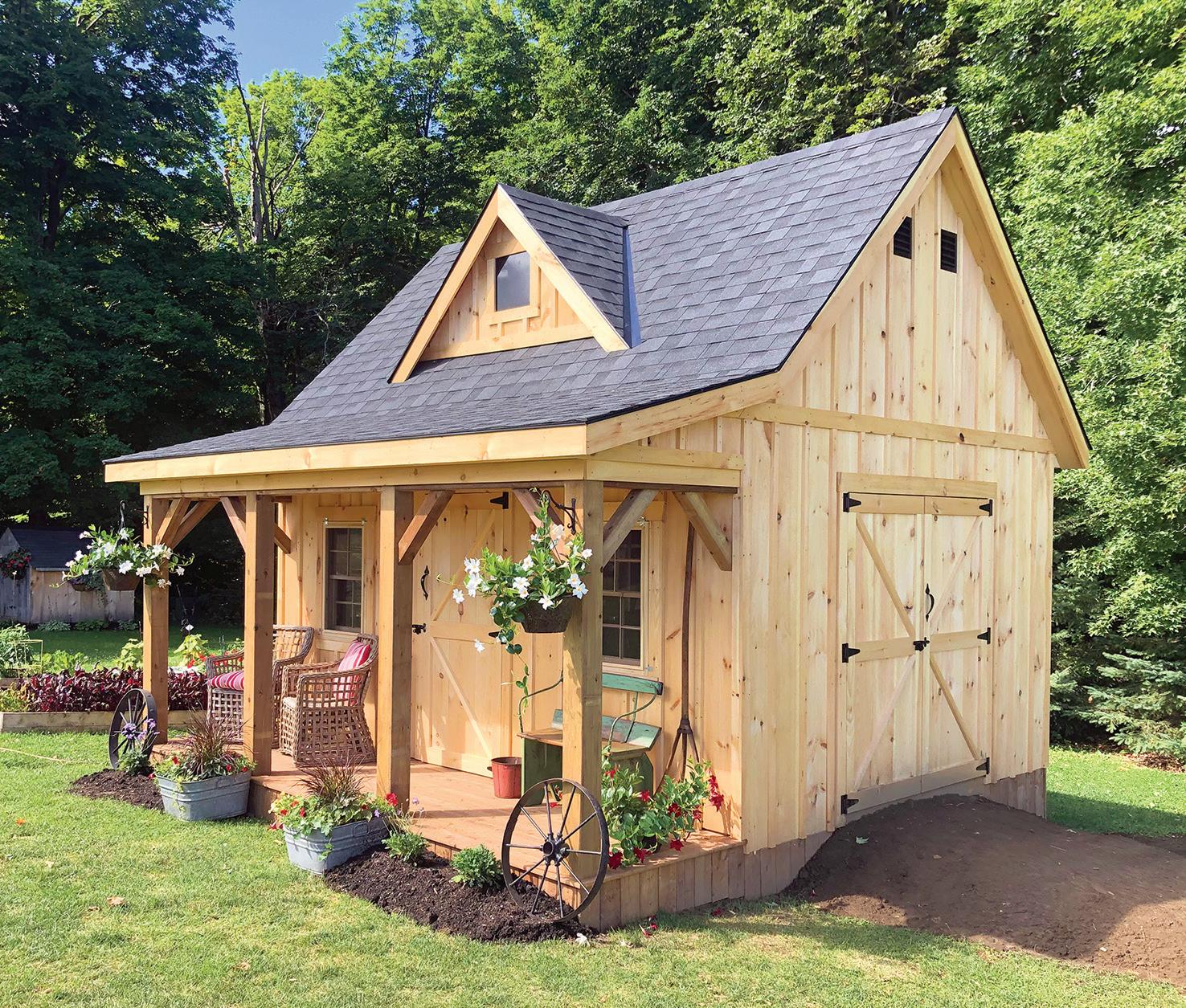

WHEN YOU THINK ABOUT BLUE MOUNTAIN , you probably conjure images of traversing the 364 acres of skiable terrain—weaving through scenic woodland glades—or hitting a rail in one of their ever-growing terrain parks. With each season new improvements seem to materialise just in time for the chairlifts first start turning. And while Blue Mountain boasts one of the most extensive snowmaking operations in North America, this year’s snowmaking upgrades continue this tradition.
Since the 1970s, Blue has consistently led the charge in adopting cutting-edge snowmaking technologies, ranking snowmaking investments as a top priority. And as the chill of the new season draws near, Blue Mountain Resort is ushering in a new era—one that promises to reshape the snowy landscape for skiers and snowboarders alike. With a multi-million-dollar investment spanning the next five years, one of the most significant aspects of this snowmaking overhaul is the update to the resort’s automation system. This modernization enables Blue to ramp up its snowmaking process more rapidly, taking full advantage of snowmaking windows.

With a multi-million-dollar investment spanning the next five years, Blue Mountain Resort is introducing state-of-the art snowmaking upgrades, including 42 high-temperature snow guns, capable of producing snow in temperatures as warm as -2°C.

Matt Baird, head of Snowmaking Operations at Blue Mountain Resort, highlights the urgency behind these innovations: “With the realization that winter seasons are becoming shorter, it’s imperative to maximize snowmaking potential by concentrating on how many snow guns can be activated within the available cold weather windows. We really wanted to capitalize on opportunities to make snow with higher-temperature snow guns. We also now have a faster-on, more effective, easier-to-use system.”
Matt goes on to explain that while Blue currently boasts one of the larger operational systems in North America, with age comes the need for upgrades in nearly every facet of snowmaking. “The resort is replacing its automation system and modernizing on-hill control mechanisms, valves, and piping. A key improvement is the reduction of spacing between snow guns, from an average of 50 meters (sometimes even further apart) to a mere 25 meters—this change not only enhances snow production but also expedites the grooming process, as machines won’t have to push the snow as far.”
Phase one of the multi-million-dollar investment began during the summer and fall, with an initial $1.2 million investment. Key areas, such as Starting Gate and Rabbit in


the north, Smart Alec and Tranquility in the village pod, and Sunrise in the south pod, have already benefited from these enhancements. This phase included the construction of three new valve houses on-mountain, the renovation of six existing valve houses, installation of new automation systems and the installation of new snow guns—these new additions join the existing fleet of approximately 750 snow guns scattered across the resort. In the spring, Blue plans to continue the upgrades by focusing on Cruiser and Dr. Doug, as part of a three to five-year plan to fully realize the potential of these improvements.
Already known for an extensive trail system and record number of days open, Blue is on a mission to elevate its snowmaking capabilities to unprecedented heights. The goal is clear: make more snow, more efficiently, and with a strong focus on adapting to the changing climate. With their forward-thinking snowmaking upgrades, they’re poised to create a more efficient and enjoyable skiing and snowboarding experience for visitors, no matter what Mother Nature has in store. This season, the game has changed, and Blue Mountain Resort is leading the way. E



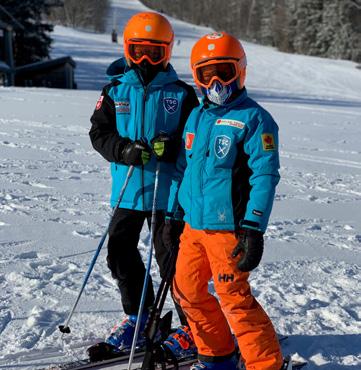

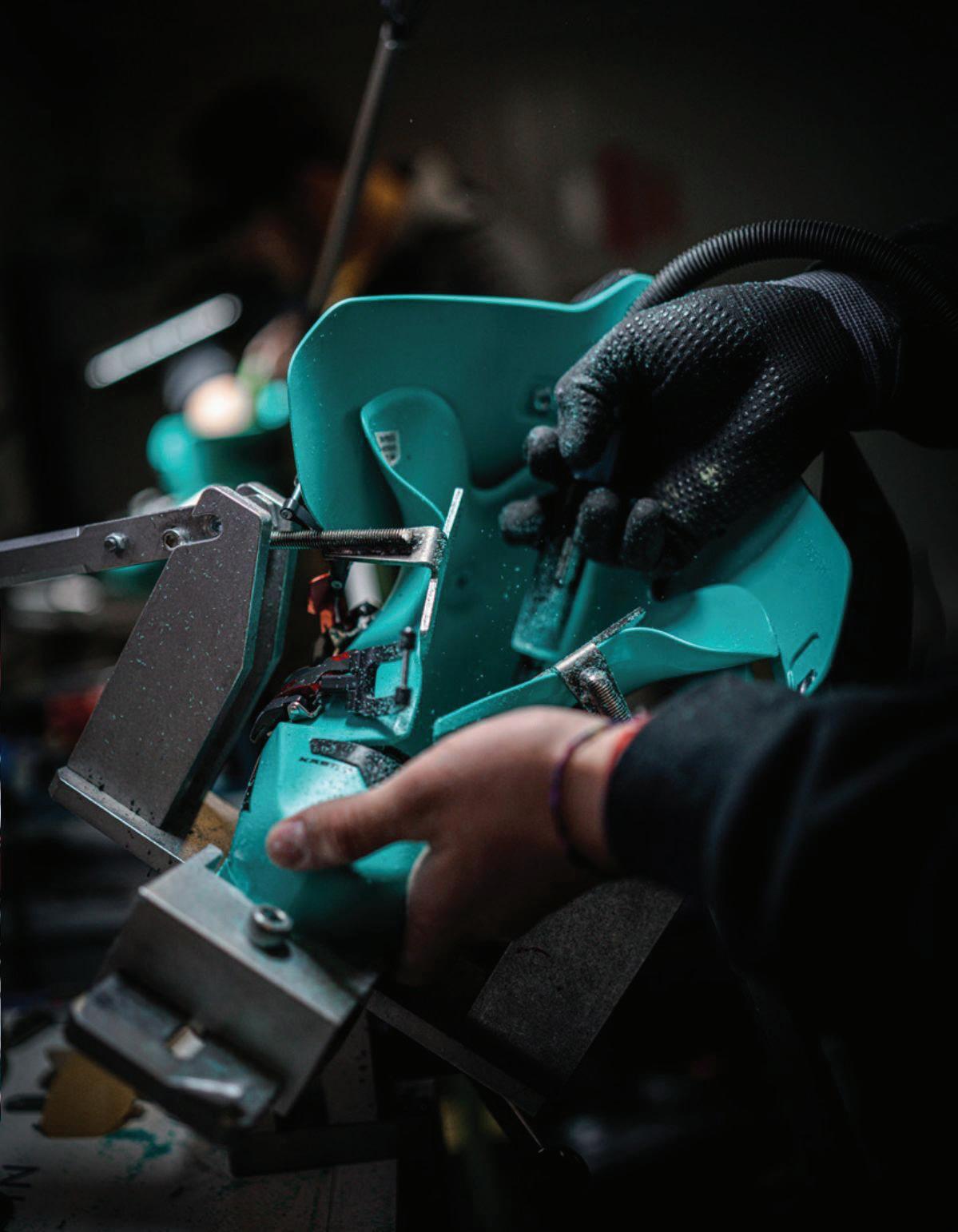





Marked by grit, determination and an unwavering commitment to both athletic and academic pursuits, Canadian Ski Team member Ali Nullmeyer’s journey is nothing short of extraordinary.
Interview by Cara Williams

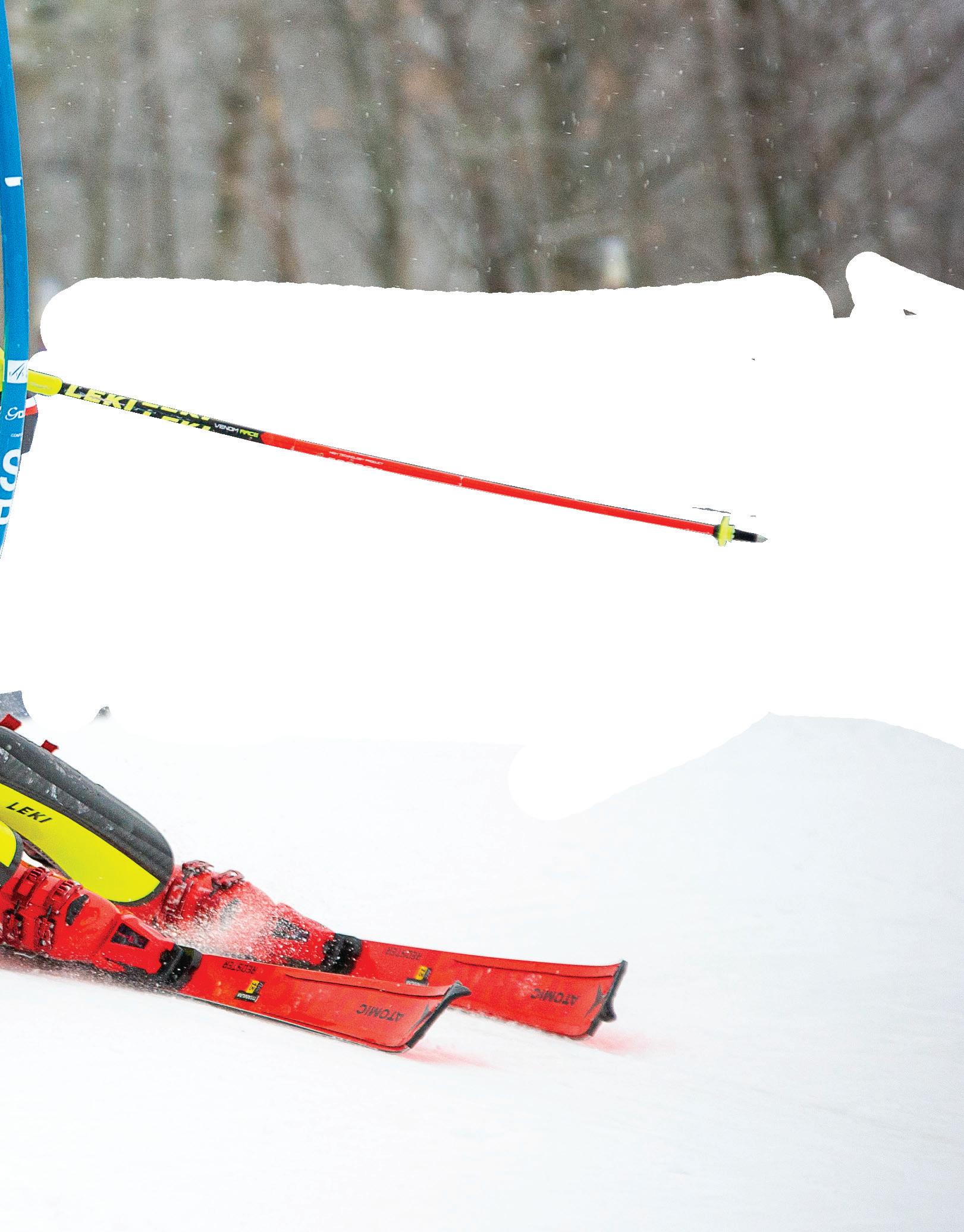
BEGINNING HER JUNIOR SKI RACING CAREER at Georgian Peaks, Ali Nullmeyer’s early promise was evident when she won a silver medal in slalom at the Youth Winter Olympic Games. By the time she graduated from high school in 2016, she had already competed in the World Junior Championships (her first of three) and was on the Canadian Development Ski Team. Her upward trajectory continued with the Nor-Am slalom and overall titles in 2016/17, which secured her a coveted World Cup start for the following season. However, just two days prior to the season opener in Soelden, Austria, Ali suffered a crash that marked the beginning of an arduous journey back.

Despite her early accomplishments, pursuing higher education was always part of the plan. After taking a year to rehab and another year to return to competition, Ali accepted a spot at Middlebury College—a transition that brought a fresh chapter to her skiing career. Here, Ali expertly managed the highest level of academics and ski racing—simultaneously competing on both the NCAA and World Cup tours. Now, with a couple of top-ten World Cup finishes under her belt and a university degree (she graduated with a 3.5 GPA and All-American Honors), Ali has an unobstructed view of the future.
We caught up with Ali just before the start of the 2023/24 World Cup season. In this, our first In Conversation feature with Ali, she talks candidly about the moments that define her journey: the highs, the challenges, and the unwavering passion that has turned her into a remarkable athlete.
Ali’s story is an inspiration—a story of resilience, triumph, and the unstoppable quest for greatness.
CARA WILLIAMS: Your junior ski racing results were exemplary— at the 2016 Winter Youth Olympic Games you won a silver medal in slalom and placed fifth in the giant slalom. You also finished fourth in the mixed team parallel event alongside fellow Peaks athlete Justin Alkier. You won silver at the 2017 Junior Worlds and clinched the overall Nor-Am Cup title in 2016/17. Can you reflect on the significance of these achievements and how they shaped your confidence and approach as a competitive skier?
ALI NULLMEYER: Achieving success as a young skier was both helpful and challenging in terms of the growth of my career. The Youth Olympic and World Junior events were really important to me as a young athlete because they were one of the first times that I competed on an international stage. These results showed me where I sat internationally against the best skiers in the world at the age, and it reinforced that I could reach my goal of racing World Cups one day if I kept working hard. While these results helped encourage me, they also made it hard when I struggled to find success on the World Cup circuit after my knee injuries. It was really challenging for me when I came back from my injury and was nowhere near the girls that I was competing with as a younger skier. This was a whole new mental battle for me, especially in my first and second season back from my injury while I was struggling to gain my confidence back.
CW: Just two days before you were set to make your World Cup debut in 2017, you crashed, tearing your ACL and lateral meniscus in both knees—that must have felt like a tremendous setback after years of hard work. Could you walk us through your path to recovery and ultimately how you were able to make it back both mentally and physically?
AN: My knee injuries were the first major setback I had endured as an athlete, and it came at a very important time in my career. I was set to start in all the World Cup races for that season after winning the overall Nor-Am title, so at the time, I was really devastated. I remember deleting social media apps off my phone for a period of time because it was too hard for me to watch the season or even see skiing on a daily basis. I also felt like I hadn’t made my mark yet—I hadn’t skied World Cups or scored World Cup points. I felt like I not only had to get back to where I was before I got hurt, but I had to improve beyond that, which at the time felt extremely overwhelming. After having surgery on the first knee, we waited eight weeks to have surgery on my other knee which allowed just enough time to stand on the first knee without crutches. Each knee felt like a rehab of its own with its own challenges. After 11 months of continuous rehab and
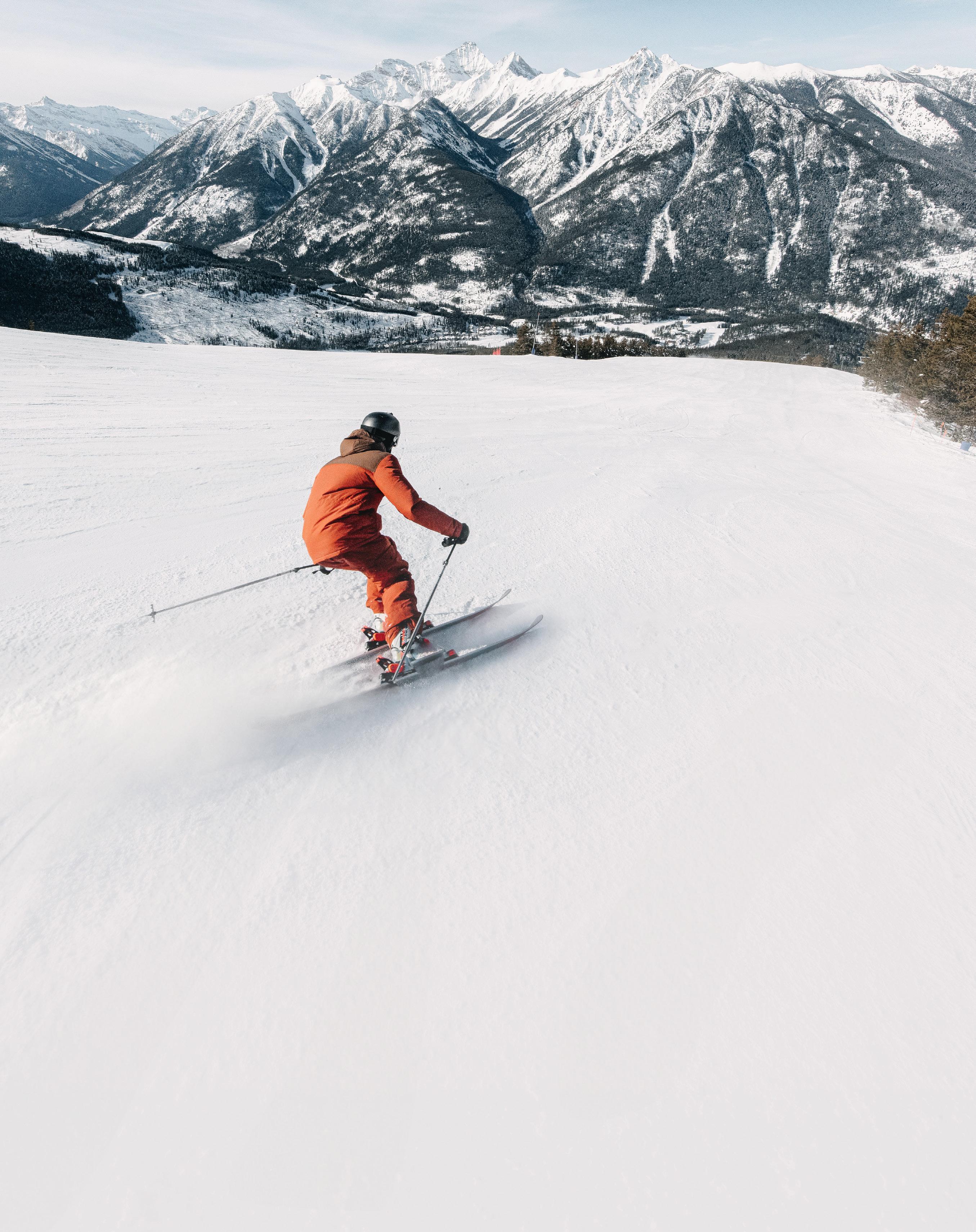


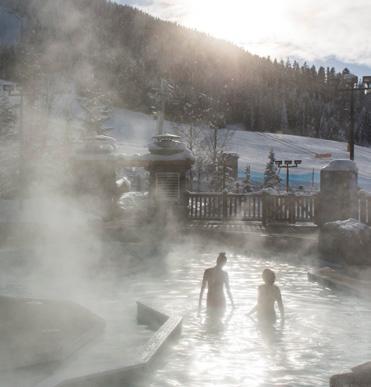

training and one more surgery, I finally got back on snow. At first, I thought the hardest part was over, but I underestimated the time it would take to get back the strength and confidence in my knees. When I made it back to racing, I felt like I’d lost so much time and like I wasn’t where I wanted to be at that point in my career. It took me almost a full season to rediscover my love for the sport and realize why I wanted to go out every day. Once I realized this, it helped me tackle that last mental hurdle relating to my injury. I’m really grateful that I had such a great team to help me through the different stages of challenges and my family to help me, especially through those first few early months when the injury was so fresh.
CW: Since your recovery, your upwards trajectory on the World Cup has been remarkable. What’s even more impressive is that for the past several years you have been juggling a full academic workload at Middlebury College (where you maintained a GPA over 3.5 –enough to earn you All-American Honours). How did you manage to excel both in your athletic pursuits and academic commitments, and how did you balance these demanding responsibilities?
AN: Thank you! My injury is a big part of why I decided to start college in the fall of 2019. I knew since graduating high school that I would eventually attend Middlebury College, but I wasn’t sure exactly when. As I mentioned, I was struggling to find my love for the sport in the season coming back from my knee injuries. At the time, school was a perfect escape for me to share my focus with another endeavour. I was able to take some of the stress off skiing while also recapture my love for the sport through the Middlebury and NCAA team environment. Middlebury is a challenging school and while I was able to manage my classes, many of the professors didn’t always understand what I was doing or how it could work with missing the classes for training camps and races. Luckily, I was able to build strong relationships with professors that allowed me to tackle work on the road and keep up from afar and make up work when I returned. Although it was not easy—there were a few times that I had to run from races to take tests or skip multiple movie nights on the road to study—it was truly what I needed to help free my mind for skiing.
CW: During your time at university, you were also a part of the ski racing team at Middlebury College. NCAA ski racing is different from the more conventional pathway, which often entails progressing from a provincial team to a development team, and eventually onto the national team. Can you tell me a little about why you choose this route?
AN: I always knew I wanted to attend school because I always felt like there were more sides to me than just my athletics. I am entirely committed to ski racing and maintain that drive to be the best in the world, but I wanted to explore other avenues so that after my ski racing career, I have the opportunities to explore beyond me as an athlete. This was a huge reason why I decided to go this route and my injury offered a perfect time to transition. When I decided to go to school, I was returning from my knee
injury and didn’t have the results needed to be on the national team. While the national team allowed me to attend camps and certain races, I was not on a full-time program with them which allowed me the perfect opportunity to get the best of both worlds. I could train with both the competitive national team environment and the also competitive, but more team-oriented environment at school. Since NCAA races are an accumulation of team points, it was the first time I had experienced skiing as a team sport and not just on an individual level. This really opened my eyes to what a team can be and much it can propel you and others in this sport.
CW: During the 2021/22 season you finished fifth at the slalom World Cup in Zagreb, Croatia—at the same race last season, you posted the fifth fastest first run but in a cruel twist of fate, missed a gate on your second run. When faced with such setbacks, how do you manage to shift your perspective and overcome disappointment? Moreover, what strategies do you employ to maintain a resilient mindset, consistently giving your all week after week, month after month throughout the rigorous World Cup season?
AN: Last season was another mentally challenging season for me. After my best season yet in the 2021/22, I was training really fast leading into the 2022/23 season, however, was unable to show this speed throughout the season. I’m learning that every season brings its own challenges and will continue to no matter how my goals shift. After an average start to my season, I was very disappointed to have straddled in the second run in Zagreb and







was ready to give it my all for the next race the day after, which was unfortunately cancelled the next morning. The biggest thing I learned from this experience and this past season is to not let these tough days weigh on me too much and to use them to build resilience for the future. Skiing is a hard sport. Sometimes your day can be over if your foot in half an inch too far left or right. Sometimes things go wrong or you make a mistake. I am trying to use these mistakes to learn from them rather them let them discourage me. It is definitely easier some days than others, and is something I continue to work on, but I try to tell myself that if I can do it once, I can do it again as long as I show up excited and ready to give it my all.
support we have coming from our Canadian ski racing community even when we are normally racing so far from home! I’m really hoping this season will bring me back to Collingwood for some Nor-Am’s if it works into our World Cup calendars!
CW: Canadian women had a banner season last year. Valérie Grenier achieved two World Cup giant slalom podiums, winning gold in Slovenia and bronze in Andorra and Laurence St. Germain won a historic slalom gold medal at the World Championships. When reflecting on the accomplishments of your teammates, how do you perceive their successes influencing the team’s overall culture and motivation?
CW: Last winter you returned to Ontario to race the Women’s Nor-Am Cup, winning the slalom at Osler and finishing 12th in the giant slalom at Georgian Peaks. Racing on familiar terrain must have held unique significance – what was it like racing at home on the Escarpment and can we expect to see you at any local races in 2023/24?
AN: I always love racing at home! Between seeing family and friends and racing on familiar hills, it’s a fun and humbling experience to come back to where I began my ski career. My favorite part of racing at home is seeing familiar faces that are always supporting us from afar. I always find it so cool to talk to people I haven’t seen in a while and realize how much love and
AN: Watching Val and Lau’s success last year was really inspiring for our whole team. I think their results last season really reflects what we are capable of and where we are headed as a team. We have a lot of speed and drive to succeed and as these girls showed, it’s just a matter of time before our whole team shows this. We are able to push each other every day in training while also supporting each other in the tough moments. Even if we don’t each show our best in every race, the pace we have in training helps us every day to be successful as a team. I’m excited to see what we can achieve as a team this coming season! We just had our first on snow camp in El Colorado and Valle Nevado, Chile and there is a lot of excitement and energy amongst us as we gear up for the World Cup season!
THE PATH TO THE PODIUM is a community-led fundraising campaign aimed at providing direct funding to both the women and men of the Canadian Alpine Ski Team. It is a volunteer-led effort designed to empower ski communities to support our athletes and celebrate Canada’s success on the world stage.
Being a ski racer from Canada comes with many challenges, given the proximity to the Euro-centric World Cup circuit and the funding limitations our teams face. Competing with the best in the world, such as the Austrian or Swiss teams, is a daunting task, especially considering their robust team infrastructure and generous funding. Yet, despite these long-term challenges, Canada has managed to become a formidable competitor, challenging the best globally. This is somewhat of a Canadian legacy—producing racers who can beat the best in the world with fewer resources than the big European powerhouses in the sport.
Corporate and government donors play a role, and individual athletes now also raise funds for their team fees. However, the communities that support these racers can play an important role. For three years, the Path to the Podium Team has raised funds to fill gaps at the program level for the men’s team. In fact, 100% of the raised funds were allocated directly to the team based on the advice of the coaches.
This year, the Path to the Podium campaign is expanding to include the women’s team and aims to tackle the broader challenge of improving the resources available to both Canadian ski teams. The main event for this year will be a dinner gala at Georgian Peaks on November 18th, featuring a star-studded cast of Canadian Alpine Ski Team alumni discussing Canada’s unbelievable success at the 2023 World Championships. Indeed, Canada can reach the top step of the podium, but to stay there, our racers need our support. Join us on November 18th for The Path to The Podium!
APPS OFF MY PHONE FOR A PERIOD OF TIME BECAUSE IT WAS TOO HARD FOR ME TO WATCH… I HADN’T MADE MY MARK YET – I HADN’T SKIED WORLD CUPS OR SCORED WORLD CUP POINTS.


















CW: The removal of Lake Louise races from the World Cup calendar was undoubtedly disheartening for North American skiers, however this fall Mont Tremblant, Quebec will host our first ever women’s World Cup giant slalom (two races are scheduled for December 2nd and 3rd, 2023). How significant is it to have World Cup races outside of Europe, and Canada in particular?
AN: It is really exciting for the women’s technical circuit to have these upcoming Mont Tremblant races! These races are important to build excitement around ski racing in Canada and continue to inspire younger generations of skiers to see the best skiers in the world come all the way to Canada to compete. I remember going to watch World Cups in Europe when I was younger and I was always in such awe of the athletes. To be able to bring that to our backyard means so much to those of us Canadians competing in these races as well as the whole Canadian ski racing community! Especially that we now have back-to-back race weekend in Killington, Vermont followed by Quebec, this really shows that North America wants to support the World Cup. For Canadians, having these races and being able to see friends, family and connect with local fans means so much to us as athletes who in general don’t get to train or race much at home.
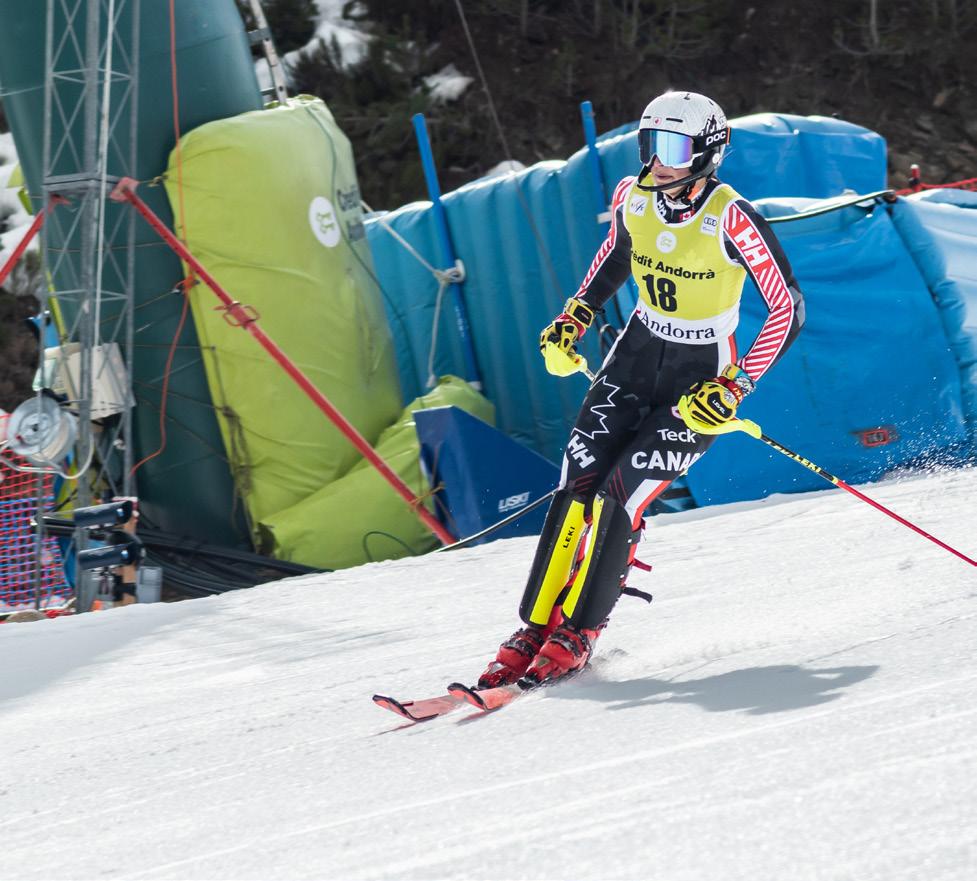
CW: With your university graduation behind you, the prospect of fewer distractions must be appealing. How do you anticipate this change will impact your training, travel and overall World Cup competition schedule? And by chance to you plan to participate in any giant slalom (GS) events?
AN: While school was definitely a massive time commitment, I was always very conscious to not let it impact my dedication to skiing to the best of my ability. So, my on and off hill routine will remain quite similar to before, however, I am looking forward to having more time to just relax and decompress from long, hard training and race days. During the past four years, I haven’t had much time to reset after races without throwing myself right into school work so I am excited to be able to take it a little slower in that sense. I am also working hard towards rebuilding my GS after talking some time to focus on slalom. I have always loved training and competing in GS so it is a big goal of mine to build in training this year and race some Nor-Ams this season with hopes of starting some GS World Cups in the near future.
CW: Having grown up ski racing at Georgian Peaks, Escarpment clubs have produced countless top ski racers despite the fact that our hills lack vertical and our season is short-lived—why do you
think this is, and in your experience, what can other regions learn from us?
AN: The Escarpment has produced a number of former and current World Cup athletes and I think something that has allowed that to happen is the love of skiing in the area. I fell in love with skiing even though we have smaller hills or sometimes brutal weather conditions and I feel the community played a big part in instilling that unwavering joy in the sport. As a community, the Escarpment builds a resilience through training hard, even if the conditions aren’t great—if it’s raining, icy, cold, slushy. When I was younger our coaches would make us go out and be productive whether or not it was the perfect training day. I also felt that we really took advantage of number of runs. Even though our hills aren’t the longest, I always remember maximizing number of runs and making every run count. I think these are qualities that helped to propel me as an athlete especially on days when conditions are tough on training or race days.
CW: As the ski season approaches, our best wishes are with you, and it’s safe to say that Canadians, myself included, will be enthusiastically cheering you on. Looking back on your journey, what advice would you offer to a young aspiring ski racer from Ontario who has dreams of competing at the World Cup level?
AN: My best advice would be to work hard and really enjoy what you are doing. Skiing can be such a challenging sport between conditions, injuries, and results that it can get really tiring and mentally hard to stay motivated if you don’t understand why you are out there every day. If you love the sport and that’s why you’re doing it, then work hard to keep it fun and lighthearted when you can because that will make the journey so much more enjoyable and rewarding! E
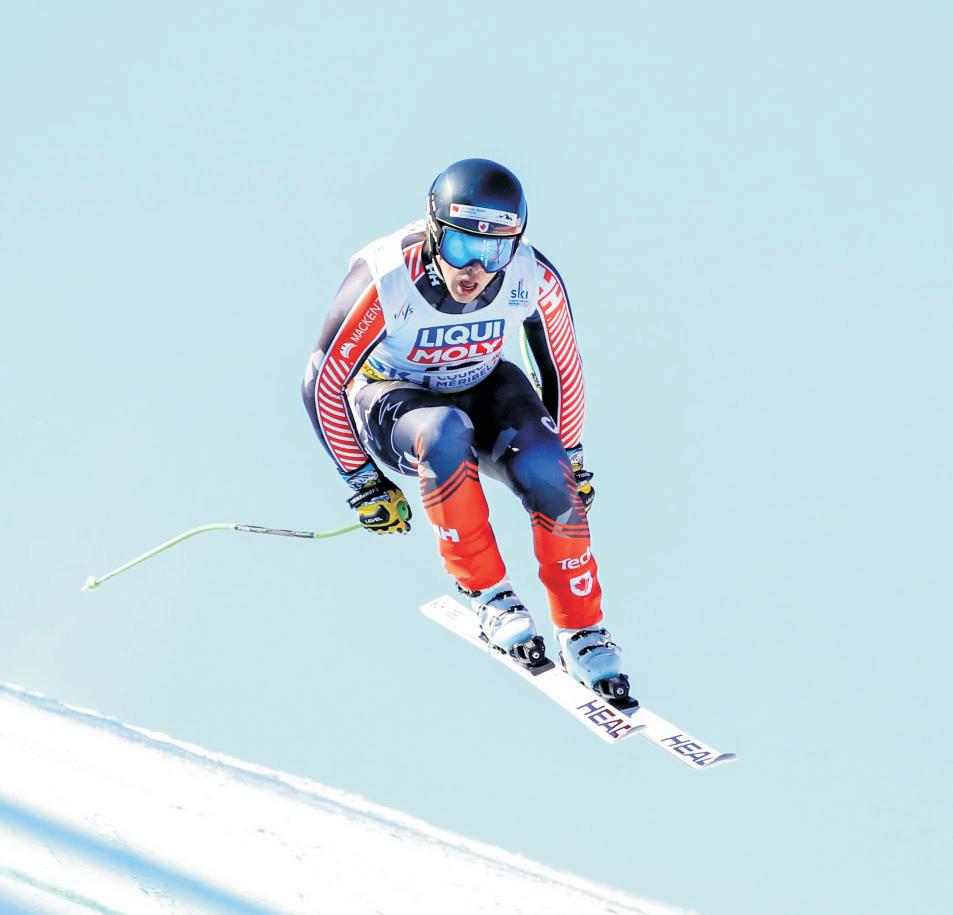












If you or someone you know is looking for employment that offers...
FREE skiing and snowboarding | 50% off attractions tickets

30% off shopping including cool brands like Burton & The North Face
40% off select food and beverage | Accommodation discounts | Referral bonuses | Tuition assistance and more
For a full list of current job openings and more information, visit: BlueMountain.ca/Jobs | BlueMountain.ca/WhyBlue
Are
 by Kate MacLennan | photography by Clay Dolan
by Kate MacLennan | photography by Clay Dolan
Cathy Mullaly has been downhill skiing for more than 60 years, which she says makes her seem old, though she’s quick to confirm that she isn’t yet. An advanced skier, last season she got 25 days, many thanks to a holiday at Whitewater in B.C. with her youngest son—a trip that became the last hurrah her most favourite ski boots ever. “They were kind of breaking down after 12 or 13 seasons, and I had put quite a bit of duct tape on the hinge point so they wouldn’t rip my ski pants at the bottom. After just two fittings they had been perfect for so many years, always so comfortable and so warm,” she recalls fondly. Comfort and warmth—the two most coveted sensations when it comes to ski boots, and also the most elusive. Boots that are too tight, too loose, too hard to get on, impossible to get off, that pinch, rub, cut off circulation, cause bunions and bone spurs (we could go on) have been blamed for the start of the end of many skiing love affairs. But when we consulted skiers, fitters, and industry experts, they all said: don’t be so quick to blame the boots.
your feet not sharing the same passion for skiing as you are? We’ve consulted with experts in ski boots to uncover the secrets to a more enjoyable day on the slopes.

Here’s their insider advice for getting your perfect pair whether you’re trying to get into, stay in, or rediscover your love for skiing.
Technology in ski boots has come a long way, but there’s still not truly a one-size-fits-all solution out there, regardless of your ability.

Dak Williams, Ontario territory manager for Tecnica and Nordica, advises that buying boots from a shop that has little or no boot fitting experience is an error you don’t want to make right out of the gate. “I also feel strongly that everyone buying a ski boot should buy some sort of footbed to support their foot properly. There are simple and very effective cut-and-fit options, and custom options. This will help to ensure you get the best ski experience from your boot no matter what age or level of skier you are,” he says, then adds, “of course, this will be a non-issue if you don’t make the first mistake I listed, as any reputable will shop will suggest that you get a footbed.”
Sean Lasseter, a hardgoods manager at Corbetts Ski and Snowboards says, “A mistake a lot of people make is they react to the out-of-the-box initial fit. They don’t understand the ability to dramatically alter and improve the fit in the store even before you go skiing, how much it will change after a day or two of skiing, and how much we can adjust or modify the boot for even further improvement once we get more feedback from them on the snow.”
The most common buyer error? “They buy boots that are too big!” says Leslie Baker-Brown, a threetime All American and 1982 US Giant Slalom National Champion, and the Global Women 2 Women Program Leader for Tecnica Group USA, a program focused on building better ski products for women.
“It’s incredibly easy to buy and to sell a boot that’s too big,” echoes Kai Palkeinen, of Stance Performance Fitting, a new venture, opening its doors this winter in Collingwood. “Not only in size as it relates to length, but also size as it relates to volume. This is not just reserved for your recreational skier, we see it all the time, even at a high-end or professional level.”
While all feet are anatomically similar, everybody’s are totally unique. Getting your most comfortable ski boot comes down to looking for unique solutions to common problems.
It’s critical to get the support just right for you, explains Thor Verdonk, Technical Product Director at Rossignol Group. “Our feet are our connection to our brain as to where we are in space. The boot gives information back to our brain—am I moving fast, off balance, is the snow hard or soft—and we want that communication to be clear. So, while feet are structurally the same, everyone has their own anomalies and going up a size to address
those isn’t the best solution to take care of it.”
“My analogy is a foot is like a three-legged table looking for a fourth leg,” says Cam Powell, a passionate winter sport enthusiast and professional boot fitter at Squire John’s in the Blue Mountains. “When you stand, the mobility of the foot changes, and that where most of your troubles start and the foot complains. When you transfer your weight to roll your skis your foot typically will get longer in length and wider in width, so we’re always trying to support that from underneath to provide more dexterity and mobility, and getting that balance is different for everyone.”

“Your boots are the most important piece of equipment in your toolkit,” says John Brown, an expert skier and former instructor who’s been skiing for 36 years. “The foot is the first and last thing to move in a ski turn, so it best react when you need it to. A goodfitting boot versus a great-fitting boot is the difference maker on your ski trip.”
Williams agrees, “They’re the most important piece of equipment that you own.”
This in mind, embrace the idea of investing time in perfecting your new boots. Verdonk says, “People will buy boots that are ultra-comfy in the shop, but things are going to settle. Like your favourite sneakers, it takes time to break a boot in.”
BOOK BY NOV. 15
SAVE UP TO 40% OFF


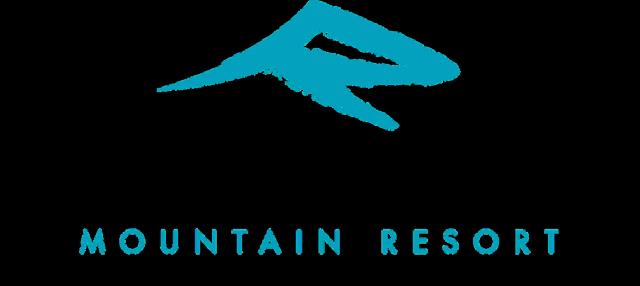

Bootboard (also called by its Italian name, a zeppa): the removeable floor of the boot shell that the liner sits atop, and that positions the liner in a sort of ramp angle.
Buckles: pretty self-explanatory, but the pros think of them as having three parts: the lever, the bail, and the catch (or ladder).
Cuff: the upper portion of the exterior ski boot, attached at hinge points to either side of the ankle. Cuff size varies significantly between men and women, who tend to have narrower calves. A tip from Baker-Brown: “If you are a female with a larger calf that sits lower on your leg, make sure the boot has a cuff adjustment that can be fitted to your lower leg.”
Flex: the level of resistance the boot provides at the cuff when you bend at your ankle. The flex index generally varies between 60 and 140—the lower the number the more the flex. Lasseter says, “Our men’s offerings typically start as low as a 90 for super recreational stuff and go up to 130. If we had a brand-new skier who’s a big dude at a fit 220 pounds, we’d probably put him into a stiffer boot simply because he’s a recreational skier who’s strong.
Women’s we go 70 or 80 to 110, because women typically weigh less. Racing is a whole unique world at 140 and 150.”
Footbed (sometimes called the insole): a layer of material under your foot that provides additional comfort and support, helping distribute pressure evenly over the entire foot to enhance your comfort, and quicken your response.
GripWalk: a proprietary technology for softer, ribbed foot surfaces on the bottom of a ski boot, in addition to a raised front plate that more closely resembles wearing street shoes for easier walking.
Last: the shape of the inside of the ski boot, which is measured by widths. A 100mL last is considered average.
Liner: the piece of foam between your skin and the plastic shell of your boot. Boots come with stock liners, but many people choose custom liners for enhanced performance and fit.
Shell: the plastic exterior part of the boot, usually made of two components, the cuff and the lower.
Time spent in the shop is as critical as time on the mountain. “Consider calling ahead to make an appointment. A good fitter will do a full assessment of your foot and lower leg to determine size, volume, and any anomalies your foot has that may need some custom fitting,” says Baker-Brown.
Lasseter says he doesn’t even like to ask a customer how the boot is fitting the first time they put it on—he just tries to tell them it’s going to change. “The reaction is like ‘this is tight’ or ‘I don’t like this’ and it’s up to us to make them understand that it only gets better, that this is the tightest it’s ever going to be. Then A, B, C and D are going to happen that day and in the coming weeks to make it feel different than it does on the first try-on.”
“We know statistically that 90 percent of skiers could get a higher degree of comfort, or a higher degree of performance through better fitting boots than they are currently in,” says Palkeinen.

Ski boot fitting is an art form, and a good fitter is essentially creating a sculptural dedication to your feet. Yet, it’s also a science, and good fitters study feet and boots extensively to do it well. Guys like Powell are consulted by the biggest ski boot companies in the world as they endeavour to perfect their products.
“You’re not buying a slipper, you’re buying a technical shoe to help you perform on show,” says Verdonk. “Balancing performance and comfort for your ability is the key, and as the consumer it’s in your best interest to be part of the conversation with the fitter and articulate what you’re feeling.”
Lasseter says the most important elements to consider

from a fitter’s perspective are foot and leg shape. “The first thing we do is a thorough foot analysis—height of instep, volume of foot and heel. After that it’s about the skier’s general size and weight, their frequency of skiing and their ability all play a factor, tied into the foot shape conversation. We try to match the shape of the foot and lower leg with the different shapes offered by the different suppliers, then we have the ability to put the entire boot—the shell and the liner—into the oven as a great way to improve the fit in the store even before you go skiing.”
Powell says that 2D and 3D foot scanners have made a huge difference in a fitter’s ability to get information about feet—like length, step, instep, and height—quickly and accurately, but there’s certain questions that should be always asked up front. “You have to fit what you see and have in front of you, and that’s the customer taking their sock off, bending and flexing to see their range of motion. It’s asking if their feet get cold, if they’ve had injuries, how their circulation is, where’s the best place they’ve skied. Would they ski in the rain? On a cloudy day? You have to give the person in front of you honour because you’re probably spending an hour and a half with them.”
Heat-Molding “The biggest advancement in boots in recent years is probably the ability to improve the fit in the store by heat-molding the liner and the shell,” says Lasseter. “This has made people’s first couple days skiing more enjoyable and increased the likelihood of coming back only for more typical adjustments like punching, grinding, stretching, etc.” While it may seem contrarian, once your boots are fitted hot air is the enemy of future comfort. Plunking your hair dryer in them or putting them on a radiator will undo all the good a fitter did by heat molding the plastic shell and custom insole. By the same rationale, boots should be stored in a cool, dry place.
Rear-Entry Boots “The technology isn’t new and it doesn’t really have any performance attributes, but we’re seeing it come back,” says Powell. “This is where the hinge mechanism is located back a

bit, making it easier to step into. I think it boils down to an aging demographic. Now skiers who are aging are putting in booster straps and heaters and that means they can go skiing with their grandkids. Rear-entry is kind of like an e-Bike, it allows you to get out and do their thing.”
BOA Fit System This proprietary technology was designed to replace boot lacing systems or buckles with a thin dial connected to thin wire cabling that enables more precise tightening or loosening—and it has industry pundits watching with interest. “It is year one for BOA in the world of ski boots, but I think it’s here to stay. The selling point is that you get a more precise fit, but the challenge this year will be you’ll pay a bit of a premium for it,” says Lasseter. Baker-Brown believes that “the verdict is still out” on how effective BOA will be in improving the comfort and performance of ski boots, while Powell ruminates, “If people have a hard time getting into their boots I wish they’d put the BOA on the upper part of the shell, and left buckles on the lower.” Pelkeinen’s take: “Will it solve a problem of a well-fitted boot? Potentially, but in my humble opinion the fewer moving parts on the boot, the better.” Says Williams, “I think they could be useful in certain categories of boots. Time will tell.”
Williams: “Make sure your boots are dry prior to every use. Find a quality ski sock that you really like and buy plenty of them. If you travel, plan for your boots to feel a bit off as your feet will swell during flights and long travel days—compression socks can really help and make your first day of your vacation a great day of skiing.”
Baker-Brown: “Definitely one pair of quality, wicking, thin ski socks. And I put my ski socks on immediately before putting my ski boots on—I do not wear them to the mountain or they can get sweaty and wet on the way. Custom footbeds (highly recommend). Don’t tuck anything into the cuff of your boot (pants etc.).”
Lasseter: “A good quality sock is such a small price tag compared to the price of the boots, and putting on a fresh, dry pair of socks in the middle of the day is a really great way to stay warm as well.”
Pelkeinen: “If you’re a skier purchasing boots off the shelf and perhaps only ski a few times a year, the quality of the stock liner is an absolute in terms of elements to consider.”
Powell: “You don’t want the liner to be compromised by the sock, so when I find a liner that complements my foot, I’m going to stick to a thin sock to wick moisture from my foot into the liner. The layer closest to my foot has to remain dry—you see people complicating this with heaters. If your foot sweats, the sock gest saturated, and you won’t stay dry and warm if you’re freezing and warming your feet over and over.
Verdonk: “Date your skis, marry your boots. When you find a brand or model that works, stick with it.” E





Helping local startups navigate and make connections, Georgian Bay Accelerator’s network of experienced professionals propel local businesses, providing guidance and mentorship for rapid growth.

 by Cara Williams
by Cara Williams

IN THE HEART OF THE PICTURESQUE SOUTHERN
Georgian Bay region lies the GB Accelerator, a catalyst for innovation and economic growth. Founded with a vision to cultivate a thriving startup network, the Accelerator brings together passionate entrepreneurs, successful mentors and a supportive community. A not-for-profit endeavour, their mission is to create an environment where businesses flourish, talent is retained, and collaboration is paramount.
Their core offering is a four-month Startup Growth Program, which is specifically tailored to meet the unique requirements of startups. Within this program, participants collaborate closely with Accelerator mentors to craft strategic plans, attract funding and scale their businesses rapidly.
“Do you ever wonder why you do what you do?” asks GB Accelerator Lead Coach, Alexander Schwertner. “Our why, is that we believe great things happen when the right people come together to collaborate and support each other. That is what the GB Accelerator is here to make happen in the Southern Georgian Bay region.”
Founding Director Peter Heinke believes that the energy driving the entrepreneurial spirit in the region originates from its natural beauty and the people it attracts. “One of our partners in the early days of building the Accelerator commented that there must be something in the water,” says Peter. “Certainly, entrepreneurship is thriving as Collingwood, one of the
communities of Southern Georgian Bay, is rated as the number one entrepreneurial community in Ontario according to the Canadian Federation of Independent Business. The Town of The Blue Mountains is also the second fastest growing municipality in Canada according to the latest census.”

The Accelerator’s impact is tangible through success stories like Impossible Metals (impossiblemetals.com), Youthfully (youthfully.com), and Active Reader (theactivereader.com), a company that recently completed its first shipment to the retailer Mastermind Toys. One key aspect of the program is its mentorship program. Mentors are carefully paired with entrepreneurs based on their needs. Hannah Parish, a seasoned mentor with a diverse background, believes a mentor’s value lies in their ability to offer multifaceted insights and perspectives, creating a nurturing space for startups to thrive. With experience spanning marketing, software and hardware, operations, and leadership roles at renowned Silicon Valley startups Lyft and Oura, as well as Specialized Bicycles and General Motors, Hannah’s superpower is her talent for connecting seemingly unrelated concepts. She notes, “You’re thinking about this thing over here, but have you also thought about this over there? A mentor should have the ability to look across different areas of expertise, provide options and different perspectives in a safe environment that allows startups to flourish.”
Having called Collingwood home for the past decade, Hannah



finds inspiration in the town’s abundant offerings as well as the unique work-life blend. She believes that this environment is ideal for startups, enabling them to recruit talent globally while enjoying the area’s natural beauty and community spirit.


Born and raised in Meaford, Alex Smith and Max BairMarshall sought a flexible business that could be operated remotely. Drawing from their e-commerce background, they created an impressive solar energy product line, Shop Solar Kits. In their debut month, they achieved sales surpassing $20,000. As growth surged, they enlisted the help of GB Accelerator who facilitated an immersive business assessment, support and practical advice. “The guidance we received from the Georgian Bay Accelerator helped change our processes, corporate structure, discover new opportunities and improve how we manage our business,” says Max Bair-Marshall, Shop Solar Kits Co-Founder.
Since joining the program in May 2021, Shop Solar Kits’ revenue has grown 174%. “Anyone thinking of joining the GB Accelerator should know it’s a great experience,” says Max. “You’ll get a wealth of knowledge, and unbelievable value from seasoned entrepreneurs looking at your business.”
Through a rigorous selection process, candidates are chosen not solely based on their ideas but on their coachability. This ensures that mentorship can have a meaningful impact on their journey. “After submitting our online application for the program, Alex [Schwertner] and I will meet with the candidates to discuss their business proposition,” says Peter. “For us the idea or concept is secondary to the passion that the individual has for the idea. The biggest factor for making a successful candidate, is their
coachability. If they think they have everything figured out they really don’t need us or the mentoring. If we feel they are coachable, we will then determine what their major needs are and have them present to our selection committee, which are made up of individuals that have sector and ‘been there, done that’ type of experience. The selection committee provides us with an objective viewpoint of the company and the candidate and ultimately decides on acceptance.”
With a wealth of entrepreneurs in the area who are still active in their businesses but are now operating remotely or residing in the area more often, GB Accelerator companies have also benefited from some great supportive services that these entrepreneurs own. Shane Skillen, whose company Hotspex has provided valuable research information to test the market viability for some of the companies, and Rappid Design, which benefited through the Accelerator with a large contract to provide tech support to the film industry during Covid, now support Accelerator companies with Tech Evaluation services in our ecosystem. “You are now seeing the benefits of an innovation ecosystem starting among companies in the area, and I believe we are only in the early stages of what can be achieved,” says Peter.
With a foundation built on collaboration, innovation, and community support, the GB Accelerator is fostering a dynamic startup ecosystem in Southern Georgian Bay. As the region continues to attract founders and innovative ideas, the accelerator stands as a beacon of growth, embodying the belief that extraordinary things happen when the right people come together to drive change. E










In the deadliest event in the history of Great Lakes Navigation, a four-day storm, referred to as the “White Hurricane”, struck with relentless force in November 1913. Wind gusts reached over 140 km/h, and waves measured over 11 metres high. The storm left in its wake 19 vessels lost and an estimated 248 sailors killed. The exact number will never be known.
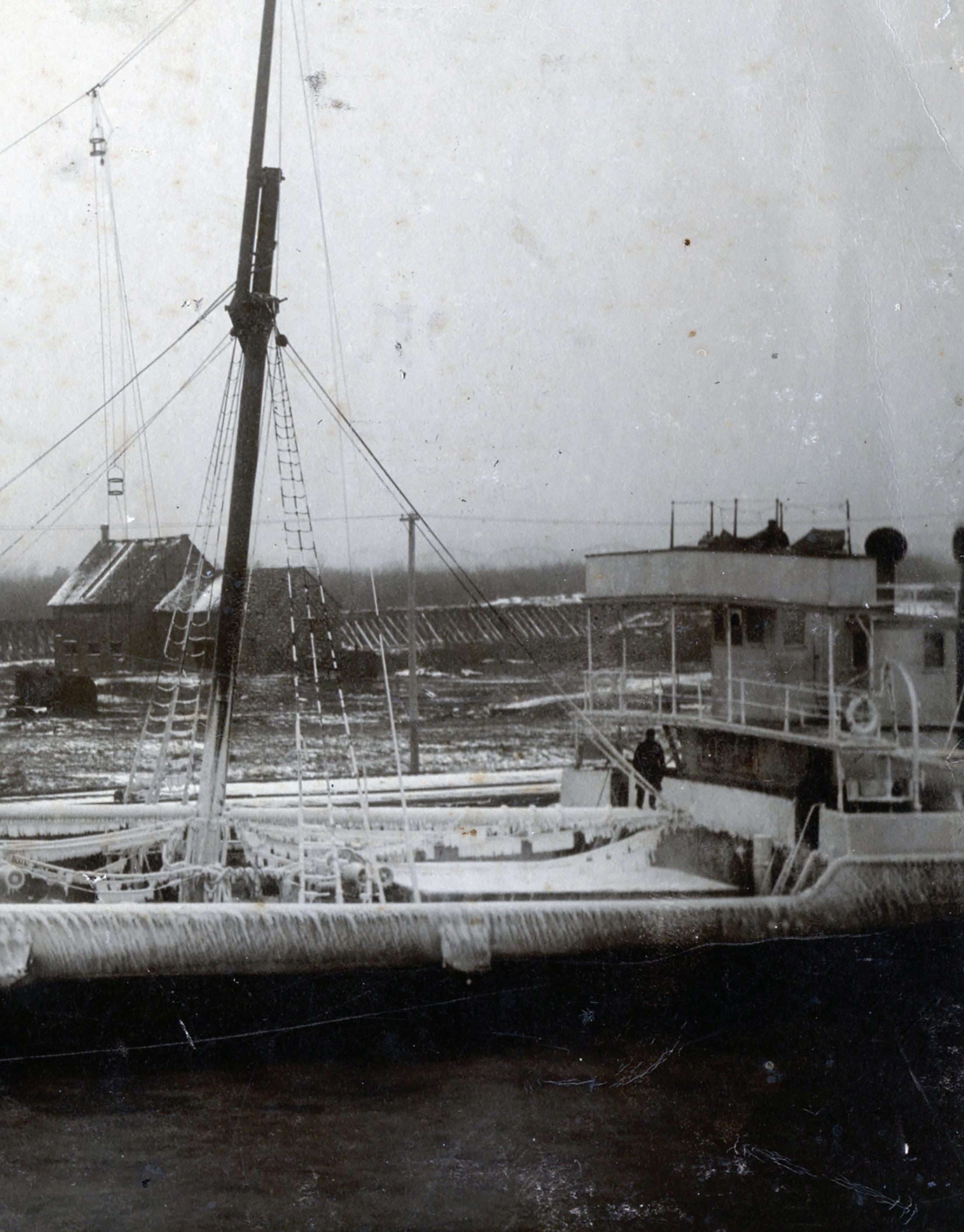 Script by Ken Maher, Stories from Another Day, a Collingwood Museum Podcast. Historical photos courtesy of the Collingwood Museum
Script by Ken Maher, Stories from Another Day, a Collingwood Museum Podcast. Historical photos courtesy of the Collingwood Museum
W“E BREAK AWAY from our regularly scheduled programming to bring you the following news bulletin: The SS James Carruthers, the ‘Pride of the Lakes,’ launched only five months earlier from the Collingwood shipyards, has sunk off of Goderich. Now confirmed, twenty-four men lost, two from Collingwood: Watchman Bob Stone and Wheelsman Joe Simpson. Stay tuned to this station for more news as it becomes available”.
The day is Wednesday, November 12th, and the news is finally confirmed by the Canadian Press—news that would prove relentless in its grief and loss, as the full weight of the tragedy became known. The Great Lakes Storm of 1913, historically referred to as the “Big Blow” the “Freshwater Fury” or the “White Hurricane”, among other names, was a blizzard with hurricane-force winds that devastated the Great Lakes Basin from
November 7 through November 10, 1913. The storm was most powerful on November 9, battering and overturning ships on four of the five Great Lakes, but Lake Huron was particularly hard hit.
“This just in, it is now confirmed the SS Regina wrecked at Point Edward. Twenty

lives lost, including Second Mate Tom Doyle of Collingwood.”
So, what on earth had happened?
As the USGenNet Great Lakes Maritime History website describes, on Sunday, November 9, after two days of fierce storms, the low-pressure system was receding from the lakes, and in numerous areas, the snowfall had ceased while the barometric pressure was on the rise. Ships departed from the safety of the ports, guided by captains who likely thought the storm had mostly dissipated, understanding that profits couldn’t be made by staying in port when the weather took a minor turn for the worse. Little did they know that they were on the brink of facing the deadliest storm ever recorded in the history of Great Lakes navigation.
“Sources this afternoon are reporting the SS Wexford foundered and sunk off St. Joseph Island, taking Captain Bruce Cameron

Whether




Sailed the lakes when the storm began They fought the wind
And the mountain waves
But never came home again
These good ships torn
By the claws of the storm
And the white foam smothered the crew
And the wreckage washed On the shores of the lakes
(a local hockey hero) and seven other Collingwood mariners with her. Among them Chief Engineer Jim Scott, Watchman Orrin Gordon, Second Mate Archie Brooks, Steward George Wilmott, and his wife Stewardess Grace Wilmott.”
The USGenNet Great Lakes Maritime History website goes on to say that what wasn’t known at the time the Great Lakes shipping resumed was, “A second low-pressure system had formed overnight to the south and was missed by the morning weather report. By the time the evening weather report was sent the storm had almost a full day to build strength. Barometers plummeted as the storm intensified to hurricane proportions, its counter-clockwise winds shrieking as the monster pounced, raking its icy claws the length of Lake Huron. Hurricane strength winds of 90 mph drove blinding snow and sleet,
piling waves into roaring black 40-foot mountains that mauled vessels and shorelines. Giant freighters were coated
with sheets of ice; hurled against rocks and land as though nothing more than children’s bathtub toys by deafening winds that screamed from one direction while mountain sized waves smashed at them from another. The greatest devastation of all was felt when twelve vessels lost their battle with the storm, going to the bottom with every soul aboard.”
“The SS Leafield was also lost just outside of the Soo—17 Collingwood men were listed among the dead. Captain Charlie Baker, Chief Engineer Andy Kerr, First Mate Alf Northcote, Assistant Engineer Tom Bowie, Second Mate Fred Begley, Stewards Robert and Lorne Sheffield (brothers), Firemen Charlie Brown and John Munro, Wheelsman John Barrett, Watchman Bob Robinson and George Pierce, deckhands Billy Shakespeare, Bob Whitelaw, Ovilia Peteau, and Mike Tierney.”

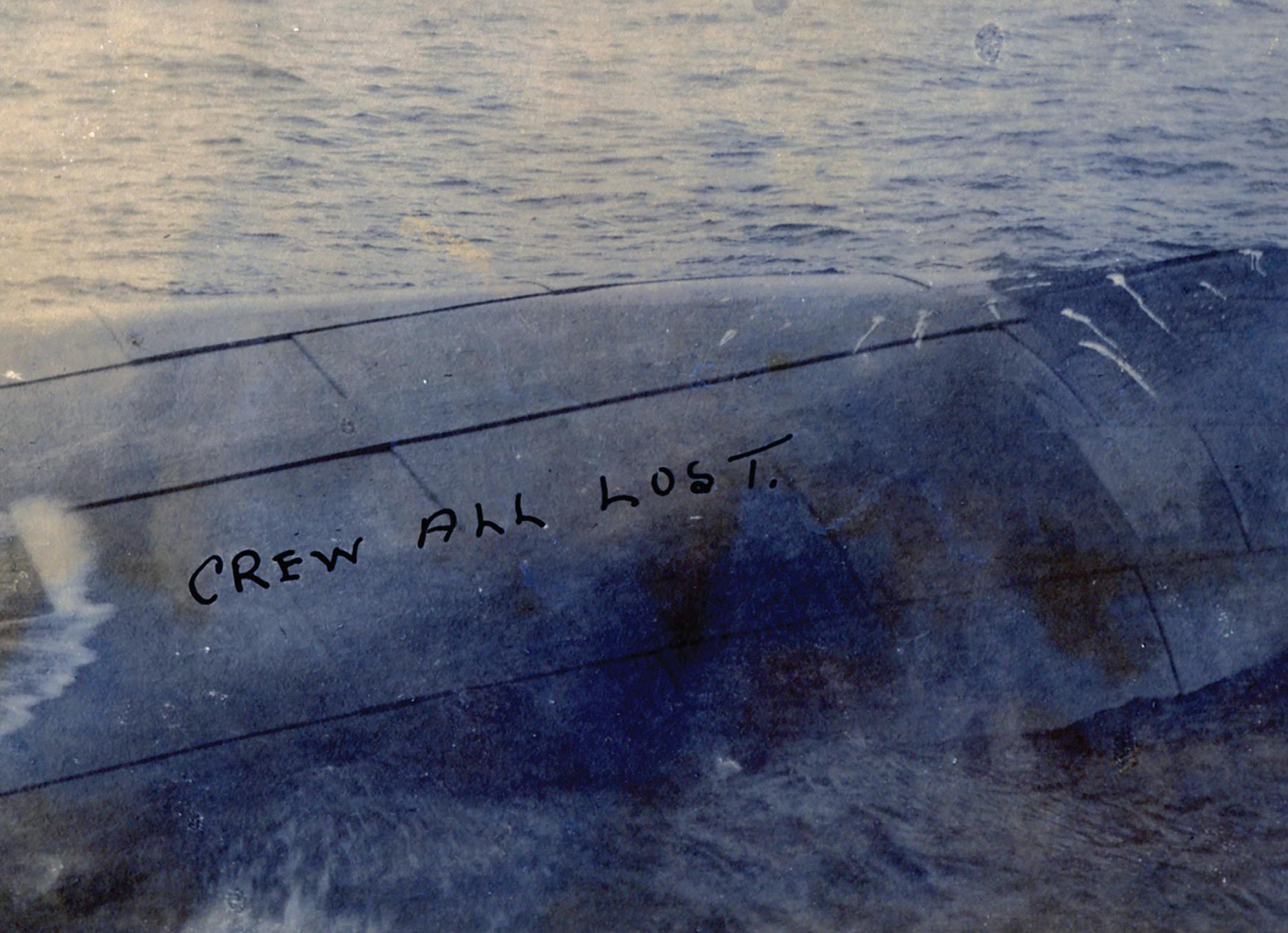
When the deadly gale was through Gale of 1913 - It’s Quiet Where They Sleep by David O. Norris & Dan Hall
We have it all at Meaford Hall!


October 14 - A Night in Vegas
October 19 - André-Philippe Gagnon
October 20 - Tommy Youngsteen
Fleetwood Mac Rumours
October 21 - A Tribute to Gordon Lightfoot Classic Lightfoot Live
October 28 - Simply Queen
October 29 - Shaun Majumder - The Love Tour

November 2 - 100 Years From Now theatre / musical
November 3 - Shane Cook & The Woodchippers

Canadian and US National fiddle champion
November 11 - Sound of Remembrance
The Trews and Graham Trude, The Singing Solider
November 22 - Hunter Brothers
November 23 - Danny Michel & Steve Poltz

November 24 - Matt Dusk sings Sinatra
December 7 - Forever Seger
December 9 - Susan Aglukark’s Upinnaq Christmas


December 13 - A Lunch At Allen’s Christmas
December 15 - Skydiggers Christmas


Known as the “Pride of the Great Lakes”, the SS James Carruthers launched from Collingwood only five short months before she went down in the Great Storm. Her loss was certainly a tough blow to those who had built and invested in her, but the real pride of the lakes was the hard-working men and women who made their living in these often-dangerous conditions. And it was because of that pride that those who lost their lives were memorialized in a very special window that is still, to this day, available to be seen in All Saints’ Anglican Church on Elgin St in Collingwood. If you join them for their worship one Sunday you will be able to have a look or if you call them up and nicely ask, I am sure they would welcome the opportunity to show you.

After being lost for 87 years, the SS Wexford was finally discovered on August 25th, 2000, resting intact and upright in 75 feet of water off the shores of Grand Bend, Lake Huron. This steel-hulled, propeller-driven cargo ship, which was constructed in 1883, has varying accounts of the crew lost, with numbers ranging from 17 to 24. At the time of its sinking, the ship was carrying a cargo of 96,000 bushels of wheat. To honor the crew on the 100th Anniversary of The Great Storm of 1913, a copper wreath was placed on the wreck.
Argus
Charles S. Price
Henry. B. Smith
Howard M. Hanna Jr.
Halstead
Henry B. Smith
Hydrus
Isaac M. Scott
James Carruthers
John A. McGean
L.C. Waldo
Leafield
Lightship No. 82
Major Matoa
Plymouth
Regina Turret Chief Wexford
And so, the terrible news kept coming, again and again... pounding in and shattering homes and families as sure as the waves had devastated all those vessels. Yet even in the overwhelming grief, there was some good news. Captain WC Jordan of Collingwood drove his ship, the SS Franz, into the teeth of the storm and somehow managed to pull into Collingwood’s harbor two days overdue and badly battered. But he was still afloat, and all the crew was accounted for. Jim McCutcheon, the first mate on the Wexford, was onshore in Detroit sending a money order home when he was delayed and late in getting to the ship, which left port without him. This delay would save his life.
Analysis of the storm and its impact helped lead to better forecasting and faster responses to storm warnings, stronger construction (especially of marine vessels), and improved preparedness among the destructive natural disaster to hit the lakes in recorded history, the Great Lakes Storm of 1913, killed more than 250 people, destroyed 19 ships, and stranded 19 others. The financial loss in vessels alone was nearly $5 million. This included about $1 million in lost cargo totaling over 68,300 tonnes. No other in recorded history has been so terrific in force, covered such an extended area or continued with sustained high wind velocity for such length of time.
But ask anyone in Collingwood what the real loss was, and they could give you name after name after name. Of the 27 Collingwood men lost, only five bodies were ever recovered to be laid to rest here at home. The others were taken by the waters they had worked on. Schools, stores, and factories closed down for the mass funerals held a week after the storm. And the cost this town would bear meant that it would be a long time before any family here in Collingwood could look at the water or listen to the howling of a winter storm in the same way again. E















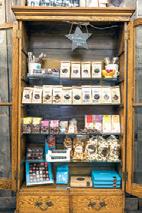
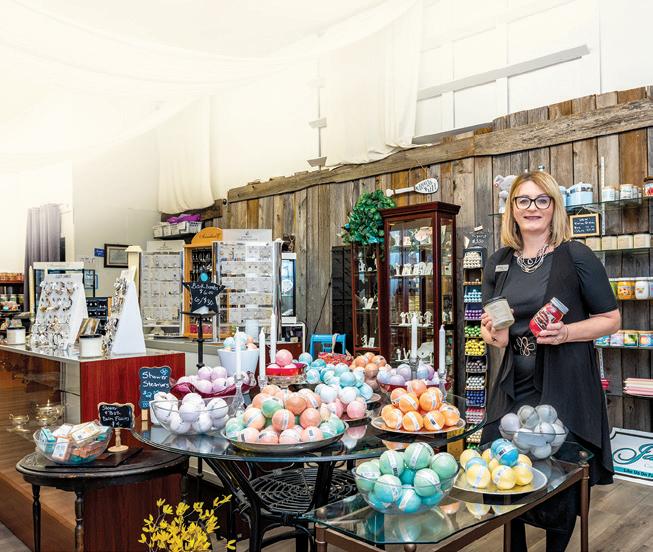

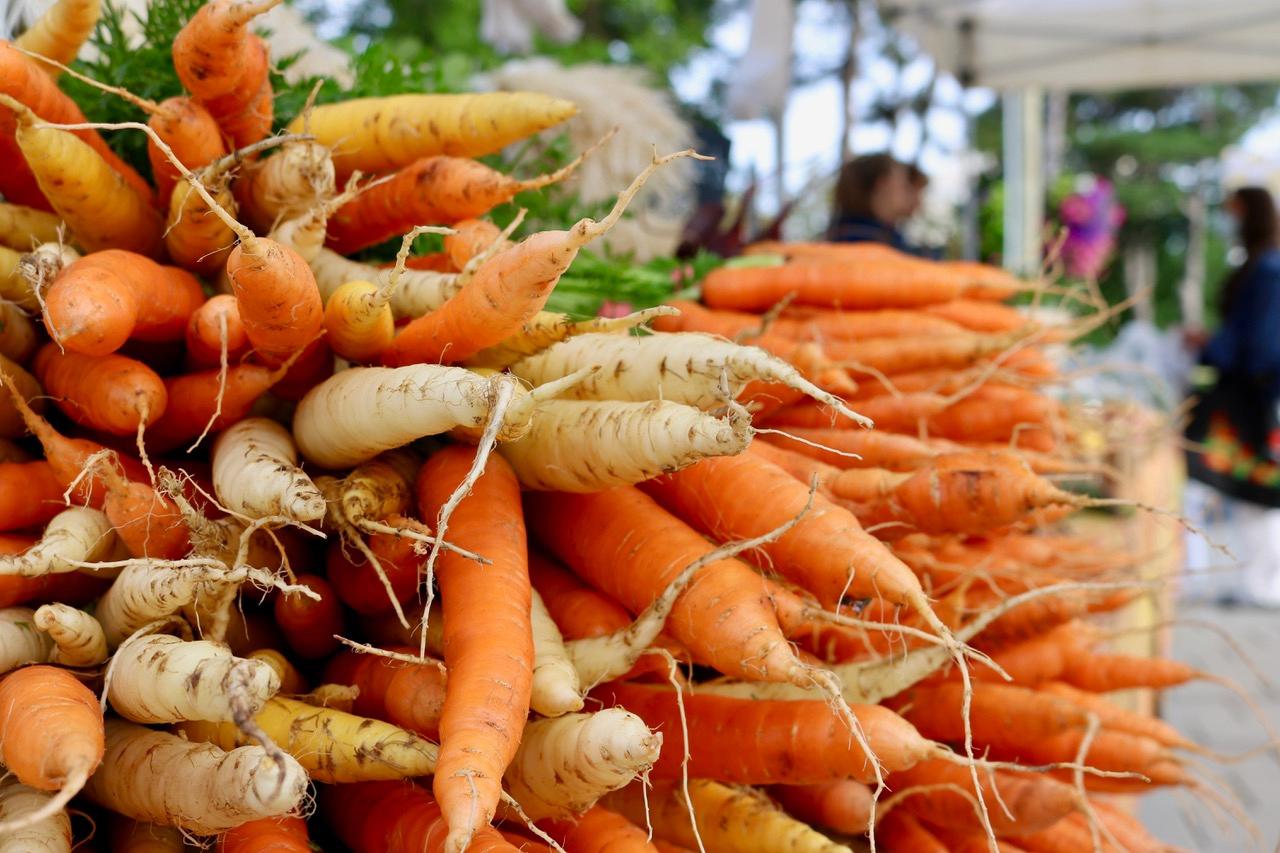

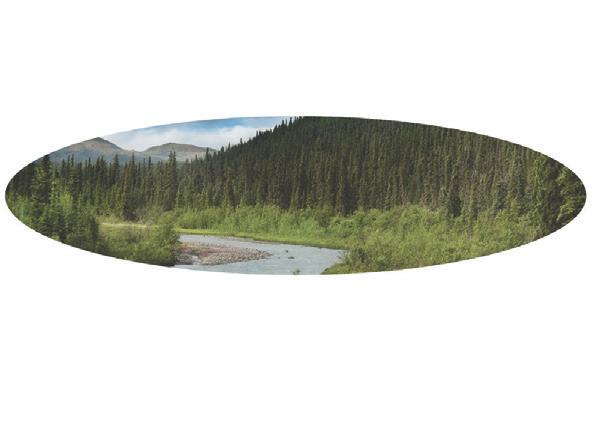









AS THE FIRST
at Blue Mountain Village, Copper Blues has remained a premiere dining experience since 2002. Best known for perfectly cooked steaks, seafood, pasta and wine, their menu has evolved over the years, but certain dishes have remained unchanged, cherished by their patrons.
With a terrace and mountain views, Copper Blues offers a front-row seat to autumn’s splendour, as trees ignite in vibrant colours. “This season brings with it the call for traditional ingredients,” says co-owner Dustin Lashambe. “Abundant apples, heartier meats and a sweet ending to every meal.”
To celebrate the season, Copper Blues' chef Kevin Coulter shares a few of his favourite autumn dishes, paired with homegrown beer and cider from Thornbury Craft Co. “Please enjoy the following recipes and the wonderful beverages they are paired with—and if you want to compare notes please come visit us this fall, or anytime!”
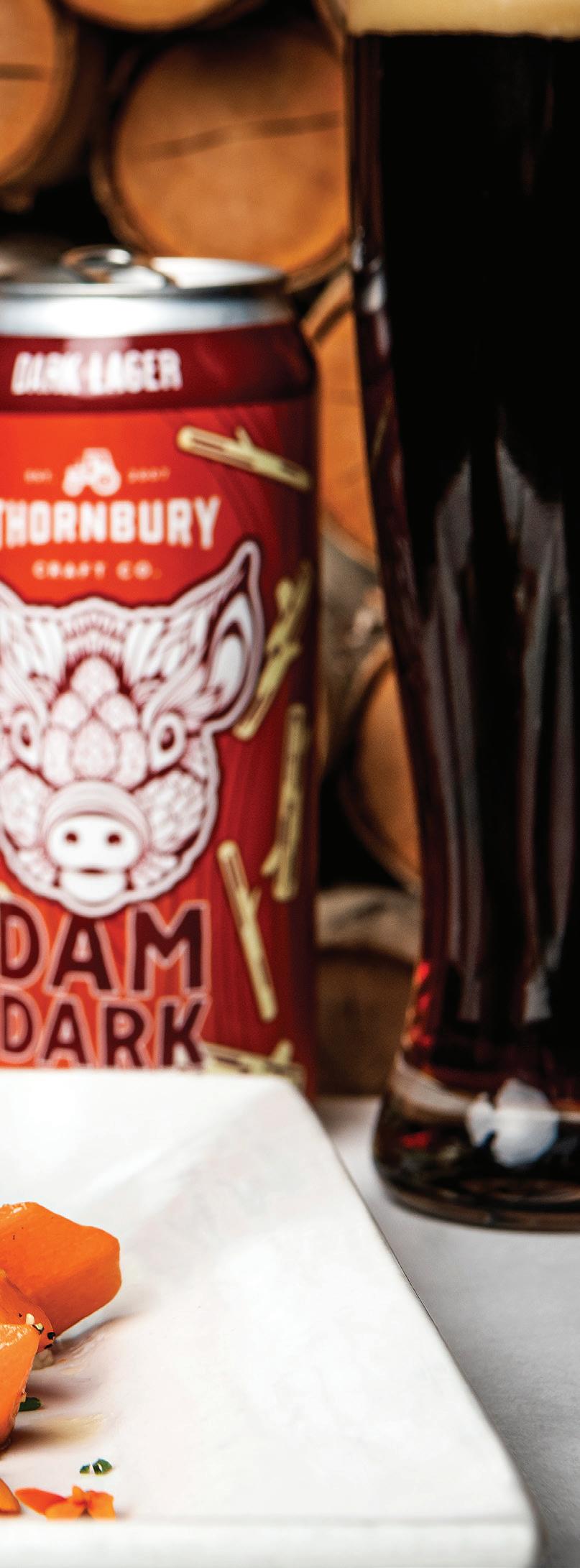
“I’ve always believed in the beauty of simplicity when it comes to salads. There’s no need to overcomplicate what accompanies your greens, and this salad perfectly embodies that philosophy. Local apples take center stage, harmonizing beautifully with the blue cheese, adding just the right amount of sharpness. The finishing touch of sorrel sprouts provides a delightful contrast in texture, nestled between the creamy cheese and the crisp apples.”
Dressing
½ cup extra virgin olive oil
3 tablespoons white balsamic vinegar
2 tbsp honey
1 medium garlic clove (minced)
½ tsp kosher salt
pinch of black pepper
In a medium-sized jar with a secure lid, combine all the dressing ingredients. Shake the jar vigorously, and remember to give it another good shake before drizzling it over the salad.
Salad
1 ½ cups sliced apple
4 ounces toasted walnuts
1/3 cup blue cheese
small handful sorrel sprouts (washed)
In a wooden bowl, combine all the ingredients, and for a finishing touch, garnish with sprouts.
PAIRING: Blue Mountain Light Lager

Blue Mountain Light Lager is a crisp, dry, and invigorating craft lager that draws inspiration from the morning sun rising over Georgian Bay. With a moderately grainy malt flavor and a perfectly balanced, dry, and crisp finish, it’s the ideal choice to quench your thirst.
“It’s hard to express just how much I adore this dish. I often challenge restaurant-goers to give it a try, especially those who claim not to be fans of lamb, and it never fails to impress. While many see it as a hearty autumn meal, and it certainly is, I believe you can pair it with lighter sides and savor it year-round. Preparing it from scratch may not be everyone’s cup of tea, but those who embrace the process will relish the delicious results. For those who prefer to skip the hours in the kitchen, you can always join us at the restaurant, where this dish has become a menu staple.”
4-6 lamb shanks (trimmed of excess fat)
2 tbsp extra virgin olive oil (divided)
1 large white onion (diced)
6 garlic cloves (minced)
2 large carrots (thickly sliced)
¼ cup flour
2 cups lamb or beef stock
1 ½ cups red wine
14 0z (400 g) passata (tomato puree)
2 tbsp tomato paste
2 bouillon cubes
1 tsp fresh rosemary
2 tbsp fresh parsley
2 bay leaves
pinch of salt and pepper
METHOD
1. Preheat the oven to 350°F.
2. Begin by thoroughly washing and patting dry the lamb shanks. In a heavybased pot, heat oil over medium-high heat.
3. Sear the lamb shanks in the hot oil until they achieve a rich, brown color on all sides. You may need to sear them in batches (2-3 at a time). Once browned, transfer the shanks to a plate and tent them
with foil to keep warm. Leave all the juices in the pot.
4. In the same pot, sauté the carrots and diced onion until they become softened. Then, add the garlic and continue to cook for another minute.
5. Return the seared lamb shanks to the pot. Season them with coarse salt and pepper, and sprinkle with flour. Toss everything together well and cook for an additional 4-5 minutes to brown the flour.
6. Add the stock, wine, tomato paste, bouillon, and herbs to the pot. Bring the mixture to a simmer.
7. Cover the pot and transfer it to the lower part of the preheated oven. Let it cook for about 2 ½ hours or until the meat is tender enough to fall apart. Make sure
to adjust the heat to maintain a very slow simmer.
8. Carefully transfer the shanks to a plate and tent them to keep warm. Remove the bay leaves from the sauce and place the pot back on the stove. Continue to simmer the sauce over medium heat until it thickens to your desired consistency. Optionally, skim off any excess fat that rises to the surface.
9. You should have approximately 3 cups of sauce. Taste and adjust the seasoning with salt and pepper as needed. Return the lamb shanks to the pot.
10. Garnish the dish with fresh parsley and serve it alongside your choice of mashed potatoes, rice, pasta, or seasonal root vegetables.





PAIRING: Thornbury Dam Dark Lager
This authentic Munich-style Dunkel presents a deep mahogany hue, delivering a rich and intricate flavor profile that remains remarkably light and refreshing. On the palate, you’ll discover delicate notes of dark chocolate, culminating in a dry and crisp finish.
“I can’t help but smile when asked to describe why we’ve chosen an apple cheesecake with salted caramel. To me, it’s the epitome of a perfectly balanced dessert. Its layered presentation adds a touch of whimsy, and the fact that you can savor each element individually or combine them is what makes it a delightful crowd-pleaser to conclude a wonderful meal shared with family and friends.”
Base
½ cup flour
1 ½ cup maple syrup
1 ½ tbsp coconut oil
¼ tsp cinnamon
¼ tsp salt
Cheesecake filling
¾ cup (1 hour soaked in hot water)
cashews
2 tbsp coconut oil
¼ cup coconut cream
1 tsp vanilla extract
1 ½ tbsp lemon juice
1 ½ tbsp maple syrup
Salted caramel
1/3 cup maple syrup
½ cup coconut cream
¼ cup coconut oil
1 tsp vanilla extract
½ tsp flaked salt
2 tbsp pecans (roughly cut)
METHOD
Base
In a bowl, combine all the base ingredients and stir until well mixed. Divide the mixture equally among four cups and firmly press it down to form the base.
Filling
Using a food processor, blend all the filling ingredients until you achieve a completely smooth texture. Taste the filling and adjust the flavors to your liking.
Caramel
1. In a saucepan over medium heat, melt the syrup, coconut cream, and coconut oil.
2. Once melted, bring the mixture to a gentle boil.
3. Reduce the heat and let it simmer for 10 minutes, stirring regularly.
4. Stir in the vanilla extract, salt, and pecans.
5. Allow the caramel mixture to cool to room temperature.
6. Evenly distribute the caramel among the four cups.
7. Place the cups in the fridge and let them cool for an hour to allow the caramel to firm up completely.
PAIRING: Thornbury Blackberry Yuzu

Lemonade Apple Cider
This aromatic cider showcases alluring scents of ripe blackberries and citrus. Its velvety and smooth texture offers an initial burst of blackberry, followed by invigorating yuzu lemon notes, and concluding with zesty lemonade, intertwined with the essence of blackberries. E





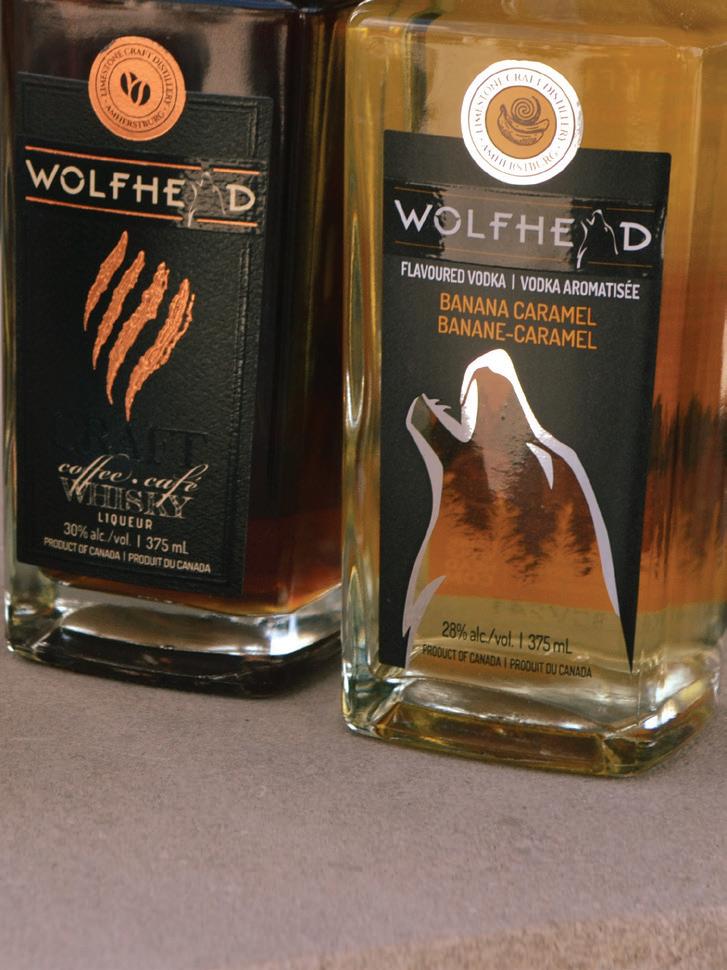
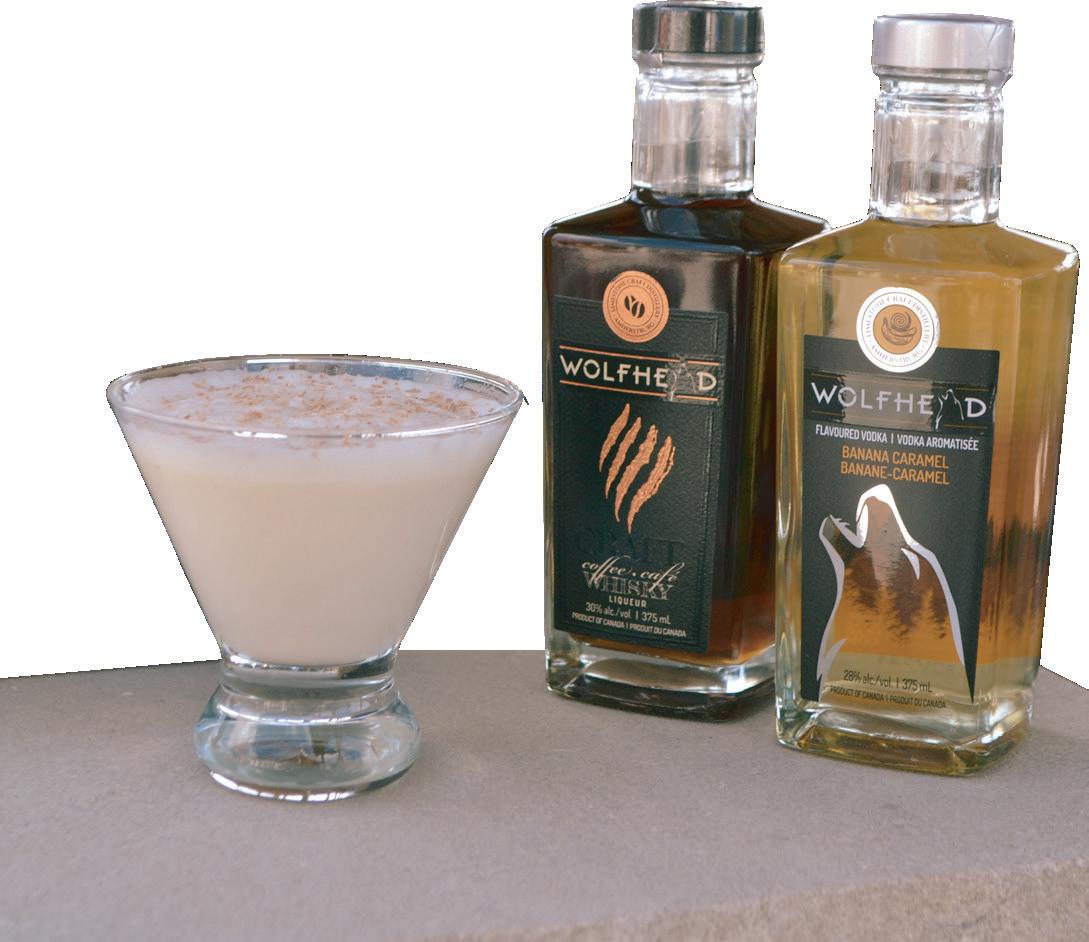



•
•
•
•
“My Dad’s doctor asked if we were happy with Right at Home. I told him we were ecstatic with your service, professionalism, communication, and how caring your team is. My Dad said ‘I just love them, I’m very happy with Trisha and everyone I meet.’ Dad’s overall demeanor has really improved and perked up since we started with Right at Home. You make such a good impression on him, despite his dementia. Thanks again for the great job you all do for families and the peace of mind you give me and my sisters.” Pia





















I’m



WOMEN (or people with ovaries) can notice many changes in their bodies as they progress through their 40s and 50s. These changes may include weight gain (resistant to habit changes of decades past), hot flashes, disrupted sleep, increased body pains, changes to their menstrual cycle, mood swings, and more. While hormonal shifts during this time may be expected, the undesired symptoms need not be. There are solutions.

When symptoms begin to be experienced, the common thought is, “My estrogen must be low.” Sometimes this is the case, but not always or necessarily independent of other factors. Estrogen is just one piece of what I consider ‘an orchestra’ of hormones and neurotransmitters that influence each other and impact how you feel. Some of your habits may also be impacting these compounds.
Here are a few things you can begin to experiment with—whether for your own information or to report them to your Naturopathic Doctor (ND) so they can better understand your symptoms and provide next-step advice:
Hot flashes can be triggered by things you consume, such as alcohol, wheat, and sugar, and/or stress. Begin to pay attention to what might trigger yours.
Night sweats can be associated with sugar and carbohydrate intake in the evening (this includes wine) — even men can experience these! Your body can regulate temperature best when you sleep naked, use 100% natural fiber linens, and cover yourself simply with a sheet and light blanket. Keep the room as cool as possible—ideally 65 degrees Fahrenheit (this can help with weight management too).
Weight management requires more effort as you age, such as increasing the intensity and frequency of your physical activity, including strength training, and being more mindful of your alcohol and sugar intake. Food sensitivities can contribute to inflammation that presents as fluid retention—if your weight fluctuates by more than 1-2 lb from dayto-day, you may want to explore this with your ND.
Mood changes can be associated with the hormone progesterone, particularly too little of it. Track your experiences of anxiety, depression, and/or anger over a couple of months and see if you notice a cyclical pattern.
And what have I seen impact all of these symptoms? Stress and its impact on the body—most notably the adrenal glands. Adrenal glands are part of the endocrine (hormone) system of the body and primarily help your body adapt to and cope with stressors. There is a relationship between adrenal and ovarian function, so as the ovaries reduce their activity (producing less estrogens and progesterone), how robustly the adrenals are functioning really comes to light.
To explore your hormone levels, there are a couple of testing options available: blood and urine. Blood is standard testing and shows how much hormone your glands are secreting into the blood. Urine (dried urine specifically) shows how your body is metabolizing the hormones, which I find to be of great value, especially if you are considering hormone replacement therapy (whether bioidentical or conventional). Urine will also allow you to see how your adrenals are producing their primary stress hormone, cortisol, at four points throughout the day.
Remember that naturopathic medicine is complementary, not alternative. If you choose to have an ablation to stop heavy bleeding or elect for conventional hormone therapy, we will support you through the process.
There are many options for addressing and reducing your symptoms—let’s talk! E
Going through this transition can be smoother than you think









COSMETIC INJECTABLES
MEDICAL GRADE
FACIAL TREATMENTS
HYDRAFACIALS
BODY CONTOURING
Himalayan Hot Stone Body Scrub
Reveal your skin's fresh glow by indulging in one of our deep relaxing and regenerating body treatments! The ideal treatment during the change of seasons!

SKIN REMODELLING
LASER HAIR REMOVAL
WEIGHT LOSS & HEALTHY LIVING MANAGEMENT
PRP PLASMA TREATMENT
BODY TREATMENTS
Specialist Hand & Foot Rituals
An effective, relaxing and ritualistic treatment for the hands and feet to restore hydration, nourishment and soft polished skin. This is our take on your classic Mani/Pedi!

IPL TREATMENT
MANICURES & PEDICURES
BROW LAMINATION, WAX & TINT
LASH LIFT & TINT
CHEERS TO YOU!
Thank you to all of the beautiful people who attended Quaintrelles Annual Customer Appreciation Event!



James Simon Mishibinijima’s artwork weaves a rich array of deep themes stemming from an authentic Anishinaabe perspective—a treasury of wisdom that imparts sacred teachings distilled over countless ages. by Deena Dolan
ACCORDING TO ANISHINAABE ORIGIN stories, all parts of creation once lived in harmony.
Gitchi Manitou (the “Great Spirit”) gathered the four components of Mother Earth—fire, land, air, water—and infused them into a Sacred Megis Shell. Through the fusion of the Four Sacred Elements and Gitchi Manitou’s breath, humanity emerged. The Anishinaabe people sprung forth from this Original Man, shaped in the likeness of Gitchi Manitou, intricately connected with Mother Earth, dwelling in harmony alongside all life enveloping him.
Today, the Anishinaabe consists of three First Nations: the Algonquin, the Cree, and Ojibwe. For over 12,000 years, Anishinaabe artists and storytellers have cultivated a distinct culture of depicting the spiritual and social dimensions of human relations. Their connection to the natural and spiritual realms of the earth is deep and timeless. Everything possesses a spirit, resulting in intricate interconnectedness. Living a good life in the Anishinaabe/Ojibwe way entails embracing the Seven Grandfather Teachings of wisdom, love, respect, bravery, honesty, humility, and truth.
Born in the mid-1950s on Mnidoo Mnising (Manitoulin Island), James Simon Mishibinijima was inspired as a boy by generations of these long-respected Anishinaabe/Ojibwe stories, traditions, and experiences, emerging as one of Canada’s foremost artists. Mishibinijima means “Birchbark Silver Shield,” but missionaries who found his birth name difficult to pronounce changed it to James Alexander Simon. He has since reclaimed Mishibinijima.


His small but proud community of Wikwemikong, one of the few Unceded Territories in Canada, was tiny—just 34 houses—and steeped in the legends of the Ojibwe people. The territory’s website declares: “We have not relinquished any of our rights to any of the lands in the Great Lakes Basin to any Nation. We continue to govern the waters, air, and lands including Islands, as our ancestors have since time immemorial.”
James’s neighbor, artist Francis Kagige, encouraged James to begin painting as a child and to actively seek the knowledge of the elders. Kagige, one of the first generation of Manitoulin artists, became known as one of the new Woodland or legend-painting artists, following the lead of Norval







Morrisseau, who introduced Ojibwe art to the world. Ten years later, The Indian Group of Seven emerged, comprised of Morrisseau, Kagige, Jackson Beardy, Alex Janvier, Eddy Cobiness, Carl Ray, and Joe Sanches. The mainstream art world finally recognized the importance of First Nations artists.
Elders shared knowledge of the Anishinaabe concept of the universe and introduced James to ancient pictographs, stories, teachings, and traditions. His artistic ability became evident at an early age when even as a child, he would “see” an image as a vision that he would then translate using paint onto his canvas. These visions have resulted in a lifetime of artistic achievement. “He can describe his visions with words so clearly that one listening can understand it,” says long-time friend and business partner, Dan Graham. “It’s like a photographic slide in my mind,” adds James. “And one day, I’ll wake up and it has disappeared.” He can remain in a vision for days—or even months—while he is painting, and when the vision has dissipated, he knows the painting is complete.

As a young man, James’s works quickly became sought after by collectors, and he gave back to his birth community by teaching his craft to students in Wikwemikong, educating them about the importance of learning their heritage, language, and the Seven Teachings of the Grandfathers. When he was just
17, however, a serious single-car accident left James in a coma for three days. Thankfully, his physical recovery was quick, but interestingly, his connection to his spiritual surroundings became even stronger. He recalls the images he experienced—he went to “a place”—there was a foggy light, clicking sounds—and a voice that said, “Not yet.” Following that near-death incident, his visions became stronger, clearer, and more present, and his positive outlook on life has never wavered. DaVic Gallery of Native Canadian Arts notes, “Mishibinijima’s uplifting philosophy has struck a chord with people who seek solace in the midst of tragedy and meaning in a world that is often confused and frightening.”
Often described as belonging to Woodland art, James’s paintings explore relationships between spiritual energy and symbolism, blended with traditional legends and myths. His visions, when transcribed onto his canvases, contain multiple, complex details. One single work will contain images within images, formed by strategic applications of thousands upon thousands of acrylic hues. Filled with powerful meanings and deeply spiritual symbolism, his paintings relay an intricate story that envelops the viewer. The longer one looks, the more one will see. James’s works take time to produce—one painting might take a year to complete. “I believe that Woodland art can promote












healing and understanding amongst all of mankind. Colour, I believe, is a power that the creator gave us to communicate traditional values and teachings. Ojibwe culture is alive and well as long as we express it in a good way.”
James’s artistic journey embarked on a global trajectory when he was just 19 years old. The local Ojibwe Culture Association recognized his talent and included him as a member of a delegation sent to an international exhibition in Rome. At this prestigious event, nations were invited to present their finest artistic endeavors, and to the delight of the Ojibwe delegation, they were awarded first prize. Between 1988 and 2002, James journeyed to Germany, where he inaugurated the Moon House Gallery. Upon returning to North America, he primarily exhibited his work in galleries in the United States.
Two signature styles are attributed to James: the most celebrated is his iconic, sought-after Mishmountain series, which portrays various settings on and around Manitoulin Island. These captivating acrylic works meld humanity with nature, wherein his uplifting philosophy offers solace to those grappling with adversity. He extends hope and spiritual sustenance to a world often muddled and foreboding. Aligned with his Anishinaabe heritage, he implores us all to nurture our land, safeguard our natural environs, value our earth, and preserve it for our offspring. “His most common theme is painting islands and water because a human being is an island and his inner universe is made out of water; destroy one part of who he is, and it will mean he will destroy himself forever,” says Dan Graham.
A second personal style adapts ancient pictographic paintings that convey sacred teachings distilled over thousands of years using visual symbolism. This perspective is echoed by the DaVic Gallery of Native Canadian Arts: “These symbols communicate the legends of creation, man’s place in creation, the ethics of human behavior, the story of nomadic migrations, and the sacred poetry of the Anishinaabe language in graphic form. He remains true to the meaning of these forms and the knowledge of the rich spiritual iconography of the societies known as the Three Fires Confederacy of Manitoulin. Mishibinijima brings ancient teachings to the modern world and continues the role of the Anishinabek painters.”

“Any artist in the world will reflect their surroundings to paint their subjects, and how that artist delivers their message means success in what they do.”The Bear and the Sacred Staff, acrylic on canvas, 30" x 24"

When asked about artists whose work he admires, James’ immediate choice is Daphne Odjig (1919-2016), a highly accomplished Ojibwe artist also from Manitoulin Island. He knew her and appreciated her works that emphasized Native family life and relationships, the impact of colonialism on the Indigenous population, and human suffering.
Over the decades, James has been the recipient of many first and best-of-show awards at international art exhibitions. He also develops curriculum materials for First Nation schools and continues to amaze art collectors with the detail and intricacy of
his canvases. His work is found in galleries, museums, government, and corporate buildings in Canada and beyond. James has released three books: “Pictographs – The Graphic Art of James Simon Mishibinijima” (2017), “Indian Residential School Paintings” (2019), and recently he has collaborated with Dan Graham on a soon-tobe-released book: “Seven Grandfather Teachings – a journey to selfhealing,” which features stunning paintings based on the traditional Seven Grandfather Teachings. E
For more information on James Simon Mishibinijima, visit Mishart.ca




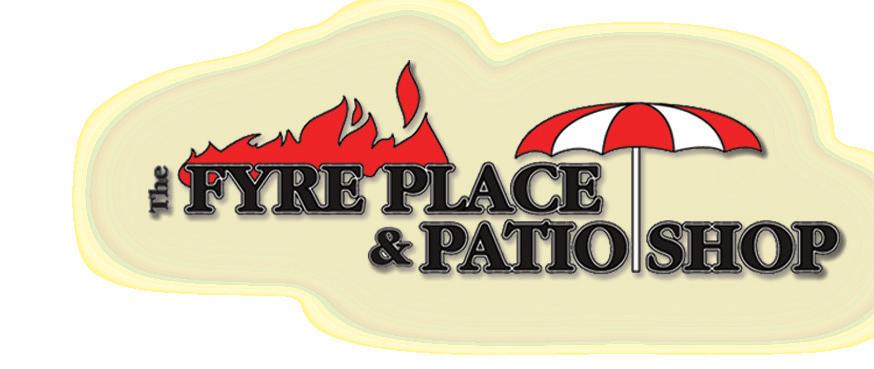
AT MARVIN, WE’RE DRIVEN BY THIS PURPOSE: TO IMAGINE AND CREATE BETTER WAYS OF LIVING. We recognize that our work isn’t just about building better windows and doors—it’s about opening new possibilities for how people live, work, think and feel inside their home. Since the day we opened our doors in 1912 as a family-owned and operated company, we’ve looked for ways to help people live better.
DESIGN FOR PEOPLE. We design for how people live and work. All our window and door products are made-to-order with premium materials that range from wood, wood-clad to fiberglass. Depending on the age and style of your home, we can customize the design, the finish, and the hardware to make sure it reflects your vision.
THOUGHTFUL DETAILS. Crafted with exceptional skill, our products deliver quality you can see, touch, and feel, beauty that brings joy, and performance that stands the test of time.
PUSHING BOUNDARIES. Rather than meeting expectations, we look for what we can do better — and then we design it. Whether we’re replicating historic millwork, engineering uninterrupted views, or improving energy performance with new glazing capabilities and low U-Values to maximize comfort in your home.




A retired couple with vision, lovingly transformed a 1900s Victorian home, adding special finishes, piece by piece.
 by Marc Huminilowycz | photography by Clay Dolan
by Marc Huminilowycz | photography by Clay Dolan
DRIVING DOWN A GRAVEL ROAD amid acres of farmland west of Stayner, a traditional Victorian red brick farmhouse stands, accompanied by a large barn behind that appears as though it has graced the landscape for centuries. Upon closer inspection while pulling into the driveway, it quickly becomes evident that someone invested a considerable amount of care and attention into meticulously restoring and modernizing the home for the 21st century.
In contrast to the opulent modern homes emerging in our region, which hold their own beauty, this project is an astonishing transformation. The original two-storey home, boasting a modest 750 square feet on each level, remains intact with its red brick expertly cleaned. A spacious board and batten addition now adorns the rear of the home, harmoniously blending with a wraparound covered porch, original rooflines, and sleek black energysaving windows adorned with new rock face sills.
The two-storey home dates back to 1900 when it sheltered a farming family on a 100-acre lot. In 1985, the four acres on which the house now stands were separated as a “farmers’
retirement lot,” while the remaining 96 acres were sold to a local farmer who tends the fields to this day. The current owners, a retired couple who once resided in a renovated cedar Pan Abode home at the base of Blue Mountain, concluded that the time had come to exchange the hustle and bustle of mountain living for a more serene rural lifestyle in the countryside.
“With the amount of development at the south end of Blue Mountain, the number of people at Blue and vehicles on the road increased,” says the owner. “It was loud, busy and some days, depending on the time, very difficult to pull out of our street. We now enjoy the peace and quiet here, not to mention far less traffic.” The couple still owns their Blue Mountain property, which their children and grandchildren use when they come to ski.
Besides offering the couple a place of tranquility, the renovated farmhouse was also designed as a family gathering place, expanded to approximately four thousand square feet including seven bedrooms and six bathrooms. “With our kids and grandkids living in Georgetown and Stouffville, within two hours



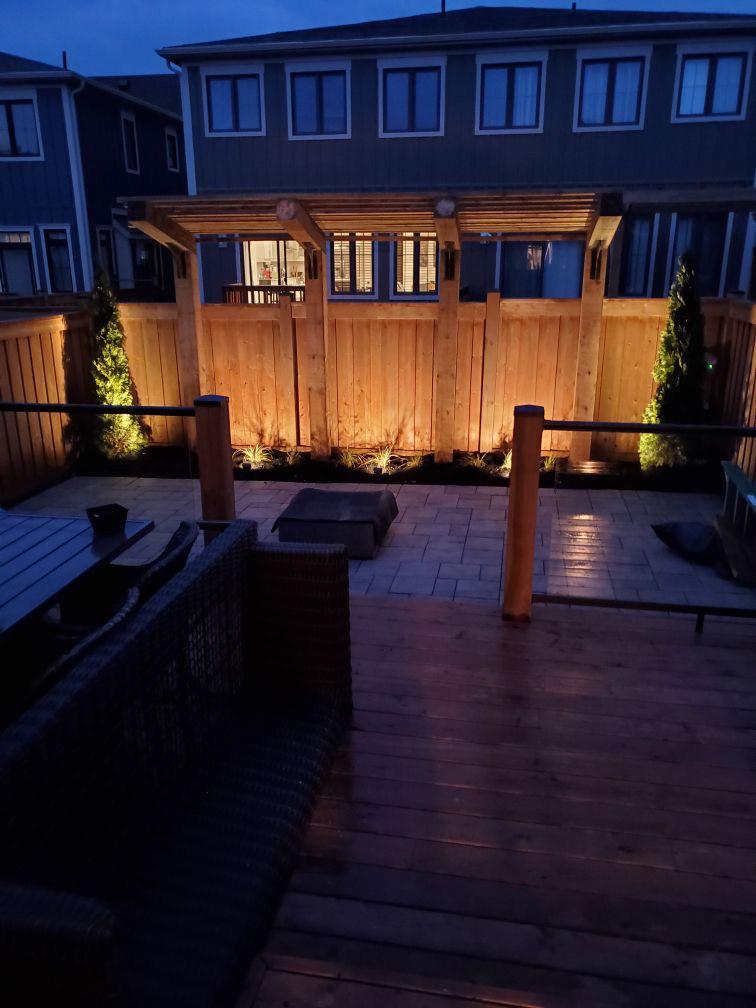

from here, our new home offers a comfortable space in which we can spend quality time together,” says the owner.
Beside the main entranceway on the east side of the home is a sign that bears its name, “The Orchard”, harkening to a time when apple orchards covered the property. Stepping inside the door, comfort and good taste are evident everywhere. In the foyer is a large walk-in closet with plenty of shelving. “When family comes, they can park all their stuff here.” To the right of this, occupying the entire main floor of the original home, is a spacious and light-filled kitchen/family room/dining room space dominated by an enormous eighteen-foot-long island with light Caesarstone countertop and seating for the whole family.
At first glance, the kitchen area isn’t obvious – no typical in-your-face appliances or wall cabinetry evident. “With all the windows in this area, there was no room for

Besides offering the couple a place of tranquility, the renovated farmhouse was also designed as a family gathering place, expanded to approximately four thousand square feet including seven bedrooms and six bathrooms.

any upper cabinets,” the owner explains. “Instead, we maximized space under the countertops and on all sides of the island for storage.” Adding to the clean look of the kitchen is a fridge tucked away discreetly but within easy reach, a cooktop and an oven and dishwasher below. Adjacent to the kitchen is a more formal dining room and a family seating area with fireplace.
On the same level within the new section of the house, you’ll find an office, a guest bathroom, and the couple’s master bedroom featuring an ensuite bathroom oriented towards the east to capture the captivating sunrise views. “Our home at Blue Mountain had three floors. I’ve had my knee replaced and my wife had her hip replaced, so it was important for us to build in one-floor living,” says the owner.

The upper level (comprising both the original house and the additional sections) accommodates the remaining six bedrooms. This includes two master bedrooms with attached ensuite bathrooms for sons and daughters-in-law, four bedrooms for grandchildren and guests, and two communal bathrooms. “We have three masters here,” the owner adds. “It’s great. Our kids come up, and they each have their own room with a king-size bed and ensuite – a place to do their own thing. The grandkids had a choice of their own bedrooms with two twin beds, one with an ensuite. When they came to see the house for the first time, our







ten-year-old granddaughter was thrilled to be able to pick her own room, and guess which one she chose: the one with the ensuite. They all have a great time splashing around in the tub!”
To accommodate the family’s needs, the upstairs bedroom area is wellappointed with good-size closets and plenty of builtins, including slide-out storage under the beds. Firm believers in shopping locally, the couple sourced all of the home’s furniture in Ontario versus overseas. “Our living room furniture, manufactured by Brentwood in Toronto and Palliser in Winnipeg, was bought from Macdonald’s in Meaford. The dining table, etc., and the bedroom furniture all came from Chatterson’s in Collingwood. It was manufactured in Ontario by Vokes Furniture in Durham and Crate Designs in Chesley, as well as Canadel in Quebec. During the home renovation, a crucial factor

Firm believers in shopping locally, the couple sourced all of the home’s furniture in Ontario versus overseas.


for the couple was to retain as many aspects of its heritage as they could. These details included exposed red brick on some interior walls, transom windows containing original glass above secondfloor doorways, and a refurbishment of the home’s original two-storey nook including windows, which now serve as cozy gathering areas between the bedrooms. Throughout the home, engineered oak hardwood floors and oversized solid oak doors stained to match the floors merge everything together.

Relaxing on a spacious new patio on the west side of the home overlooking a pool and cabana set among heritage apple trees, the couple’s builder, Gord Zeggil of Mountain Ridge Custom Homes, reflects on the challenges and opportunities of the project. “The original wood sills on the two-storey nook had some rot and subsequent water damage to the brick below, causing cracking in the brick and breakdown of the mortar joints,” he says. “Because this was such a beautiful architectural feature, the owners and I decided to replace and repair it from the







bottom up, utilizing reclaimed brick and the details that originally existed. It’s a great feature that blends well with the new design.”
The red brick on the house was soda blasted to restore its original look, then sealed to maintain its appearance for many years to come. Because homes of this vintage were typically built on a fieldstone foundation, it was an area that needed inspection. “It’s the first thing we look at when we’re dealing with red Victorians. Fortunately, the foundation of this home was in very good shape,” says Gord.
According to Gord, the only thing that needed to be done with the foundation was preventing water from seeping into the basement. This was accomplished by installing new internal
drains, weeping tiles, and a sump pump. To keep the entire home comfortable throughout the year, high-performance Jeld-Wen windows were installed, the entire home was insulated with spray foam insulation, and a generator was added to keep everything running in the event of a power failure. Combined with a modern heating, cooling and ventilation system, a dry, comfortable and energy-efficient home was created.
“As a small family company, we like to form close working relationships with our clients,” says Gord. “For us, it was important to have regular consultations with the owners of this home with collective input every step of the way, from establishing their primary need – a family gathering place – to initial design,











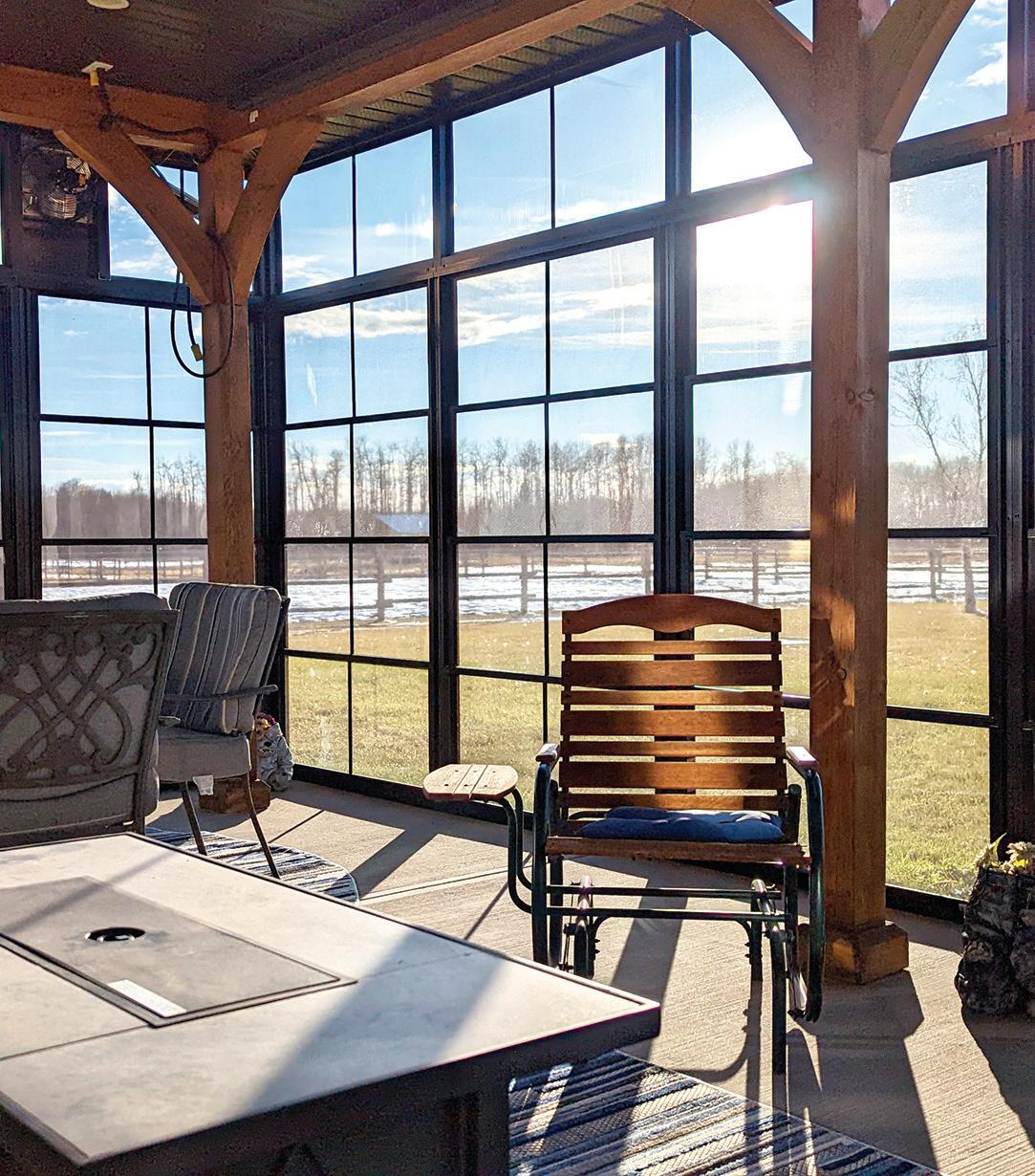
The original two-storey home, boasting a modest 750 square feet on each level, remains intact with its red brick expertly cleaned.



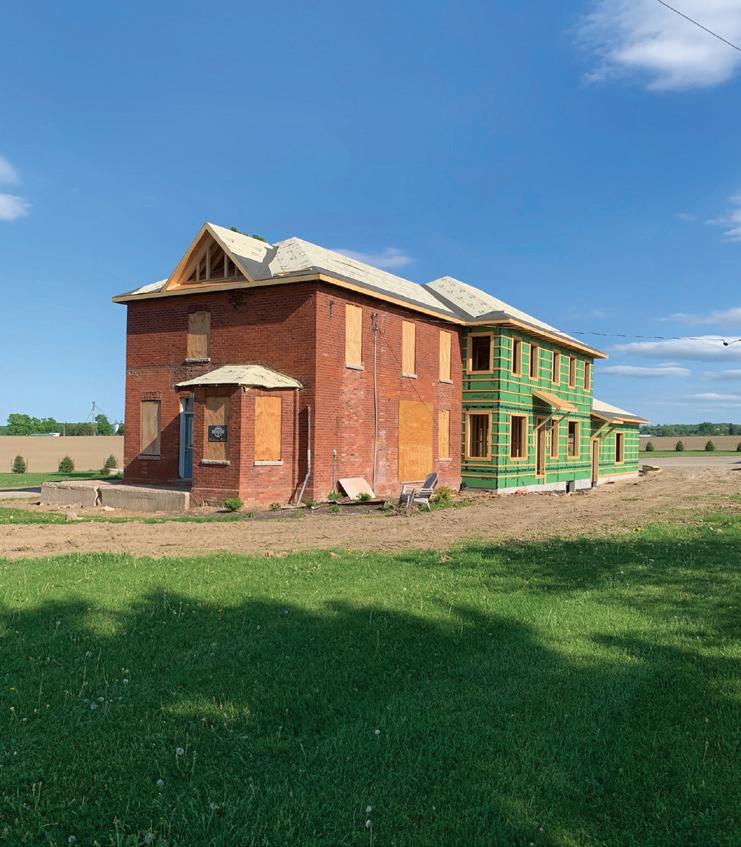

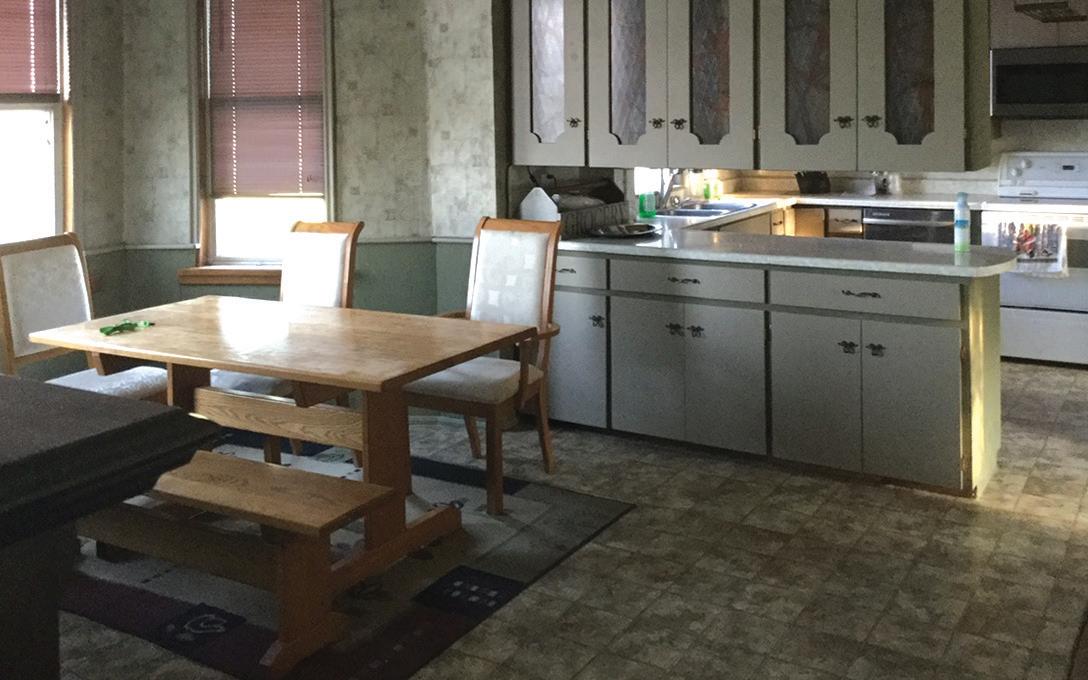
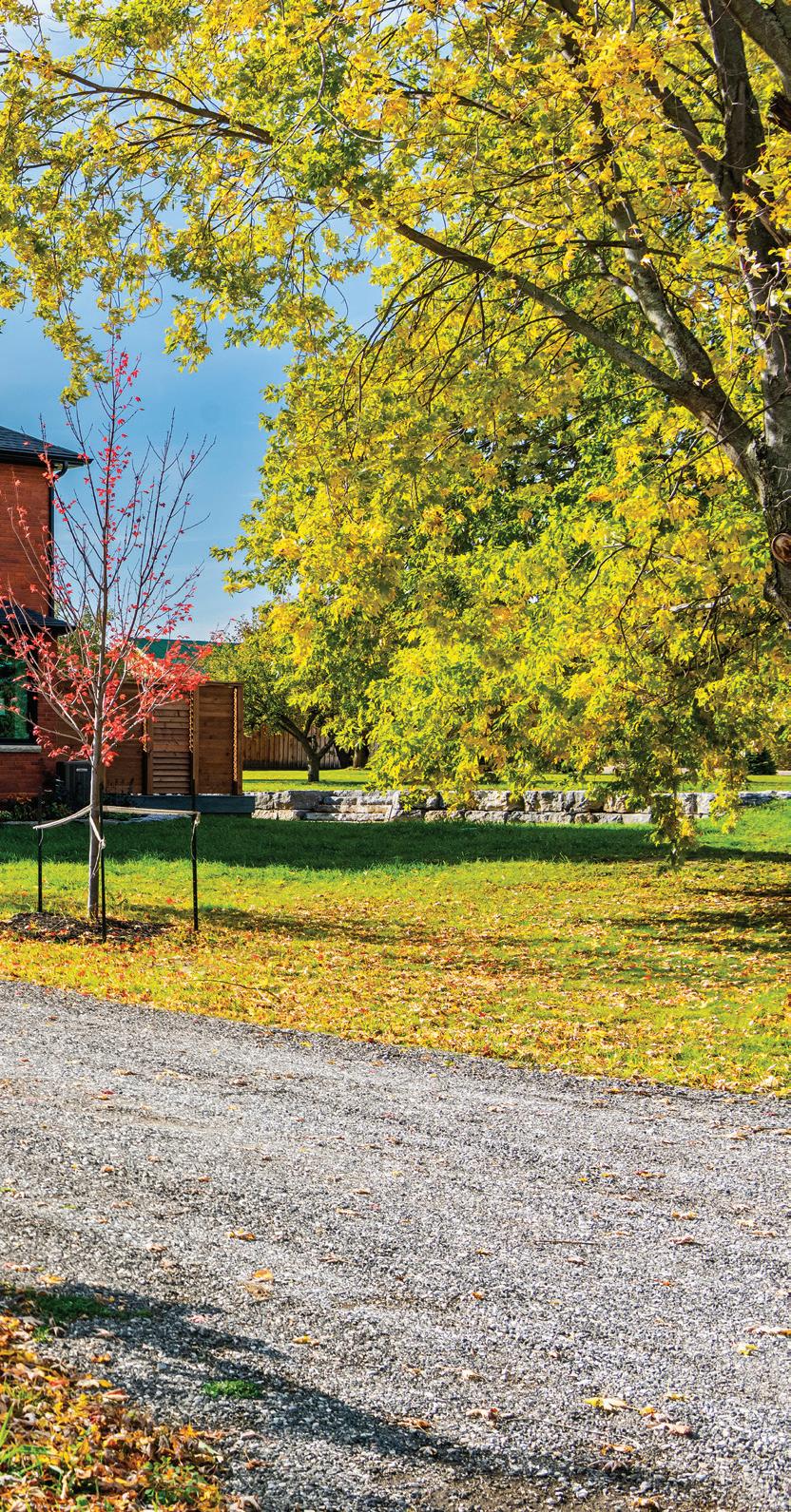
to suggesting solutions that were more cost-effective but still look great, to regular meetings with the architectural designer, to design tweaks, and finally to the permit stage.”
This retired Blue Mountains couple set out to create a quiet retreat far away from the commotion of mountain life, with plenty of room for visiting family. Rather than building a new home from scratch, they bought a 1900 red brick Victorian home and lovingly restored it, transforming it into “The Orchard” – a spacious and elegant family gathering place for future generations to enjoy a refined country life. E
Architect – Klayton Weston
Contractor – Mountain Ridge Custom Homes Inc.
Fireplaces – Chantico Fireplace Gallery Inc.
Millwork – AV Custom Woodworking
Flooring – Muir Concrete Floors Inc.
Landscaping – AJ’s Landscaping
Windows & Doors – Collingwood Home Hardware
Fixtures – Georgian Design Centre
Masonry – D’Alimonte Masonry Contracting Ltd.
Plumbing – Noble Plumbing & Roger Burkholder Plumbing
Drywall – Downey Drywall Plus
Landscaping – Falls Land Services
Alarm & Security – Huronia Alarm & Fire Security Inc.
Building Materials – Hamilton Bros.
Electrical – Lorne Bunn Electric Ltd.
Mechanical – Nottawasaga Mechanical
Tile Work – New Style Tile
Soda Blast Brick & Seal – Ontario Stain & Blast

Trusses – Rob’s Crane Rental Service Inc.
Railings – Stairhaus
Countertops – The Granite Company Inc.





“Rolling Hills” by Philip Craig. Oil on canvas, 48"x40"

Craig Gallery
4 North Sykes St Unit 1 | Meaford 519.538.3671 craiggallery.ca
Classic lantern aesthetics meets modern technology. These weatherproof, builtto-last lanterns with long battery life and a dimmable LED are an ideal indooroutdoor lighting option year-round and make a stunning holiday gift!



Lagom Creemore
172 Mill St | Creemore 705.520.2172 lagomdesignshop.com
Stay in style this fall with one of these miniature crossbody bags. Available in a variety of colours, each bag has multiple compartments and two strap options.

The Rusty Star 408065 Grey Rd 4 | Maxwell 519.922.2010 therustystar.ca
Flowers in Vase Decorative Paper –transform any space with this pretty wall art, 36"x48".

Maggie + Dix Home And Garden
210 Hurontario St | Collingwood maggieanddix.com
Keep an eye on the time with an exclusive range of unique mechanical clocks. Beautiful and functional; a definite conversation piece.

Grey Bruce Design Studio
#5 Main St W | Markdale 519.369.8890 gbds.ca
Experience natural beauty with highquality New Zealand sheepskins. Crafted in Denmark, these sheepskins are renowned for their luxurious thickness and innate lustre. Effortless to care for, they are an investment that promises a lifetime of elegance.

Farrow Arcaro Design (FAD) 51 Hurontario St | Collingwood 705.444.8330 farrowarcarodesign.ca
Locally designed in their home studio; custom engraved location maps including The Bruce Trail feature layers of birch wood and can be scaled to fit any location in your home, 24"x40".

Arbello Creative Colpoys Bay | 905.719.8241 arbellocreative.ca
Welcome Home Signature Line, locally handcrafted pottery olive oil bottle with stainless steel pouring spout. Available in 5 glaze colours. Arthur Cash & Carry 101 Smith St | Arthur 519.848.6320 arthurcashandcarry.com
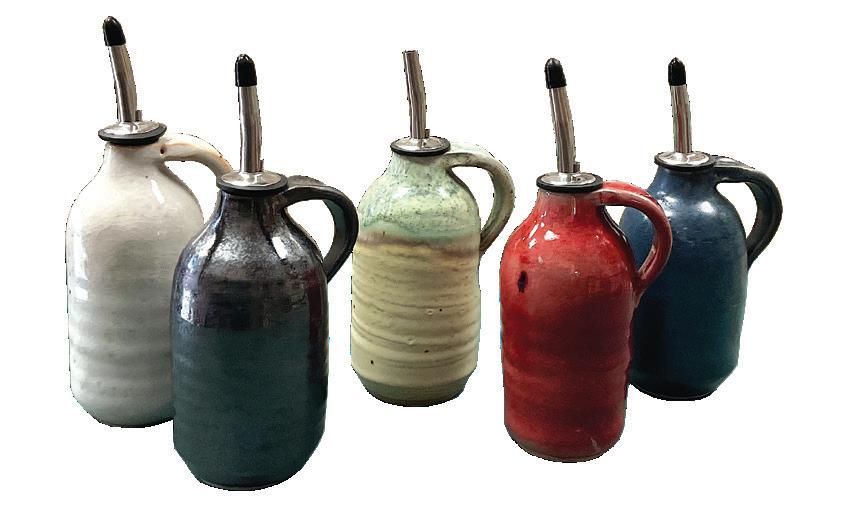
Experience La Cornue and enjoy longest industry warranty, elegant color options, and your choice of Brass or Nickel accents. Induction or Dual Fuel.

Tom The Dreamer Mattress & Appliances 21 Arthur St W | Thornbury 519.379.8440 dreamingtom.com
Elevate your space with the Kalia Effect LED-Illuminated oblong mirror. Choose from sleek black or opulent gold finishes for the metal frame, complementing the frosted strip. This mirror measures 22"x38" Georgian Design Centre 84 High St | Collingwood 705.444.2100 georgiandesigncentre.ca

“Killarney Reflections” by Margarethe Vanderpas. Oil on canvas. Available as a limited edition on canvas and paper.

Margarethe Vanderpas Studio 24 Chetwynd Ln | Lion's Head 519.433.2840 margarethevanderpas.com
Strong and contemporary. Sculptural. Archilog firewood holders are handcrafted in Elmira, Ontario. Each log holder is made to match your modern home or cottage and is available in slate grey or black powder-coated finishes.

Archilog
519.400.6633 | Elmira archilog.ca
Join in for GB Arts’ first annual Decoration Jam on November 18th. Classes will focus on textiles—like these sweet felt houses— clay, metal, glass and printmaking. Register in-person or online.

The Georgian Bay School Of Arts
938 2nd Ave E | Owen Sound gbarts.ca
An oversized piece that will add warmth and dimension to any space, this mirror has a delicate iron frame finished in a warm antiqued gold leaf. Also available in a satin black finish.

Barebirch
920 2nd Ave E | Owen Sound 226.664.2273 barebirch.ca
“Scarcity & Abundance” by Mark Nadjiwan. Pen and ink on illustration board, 14"x18". “Moonlight and Bliss” by Patricia Gray. Acrylic on gallery wood panel, 17.5"x17.5", framed.
Meraki Art

240 East Rd | Lion’s Head 705.475.6248 | threetreesart.com blacksprucestudio.com
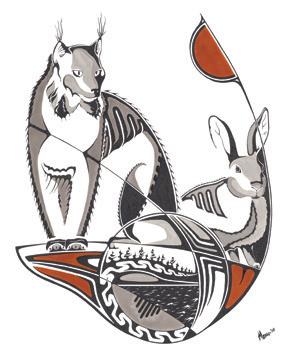

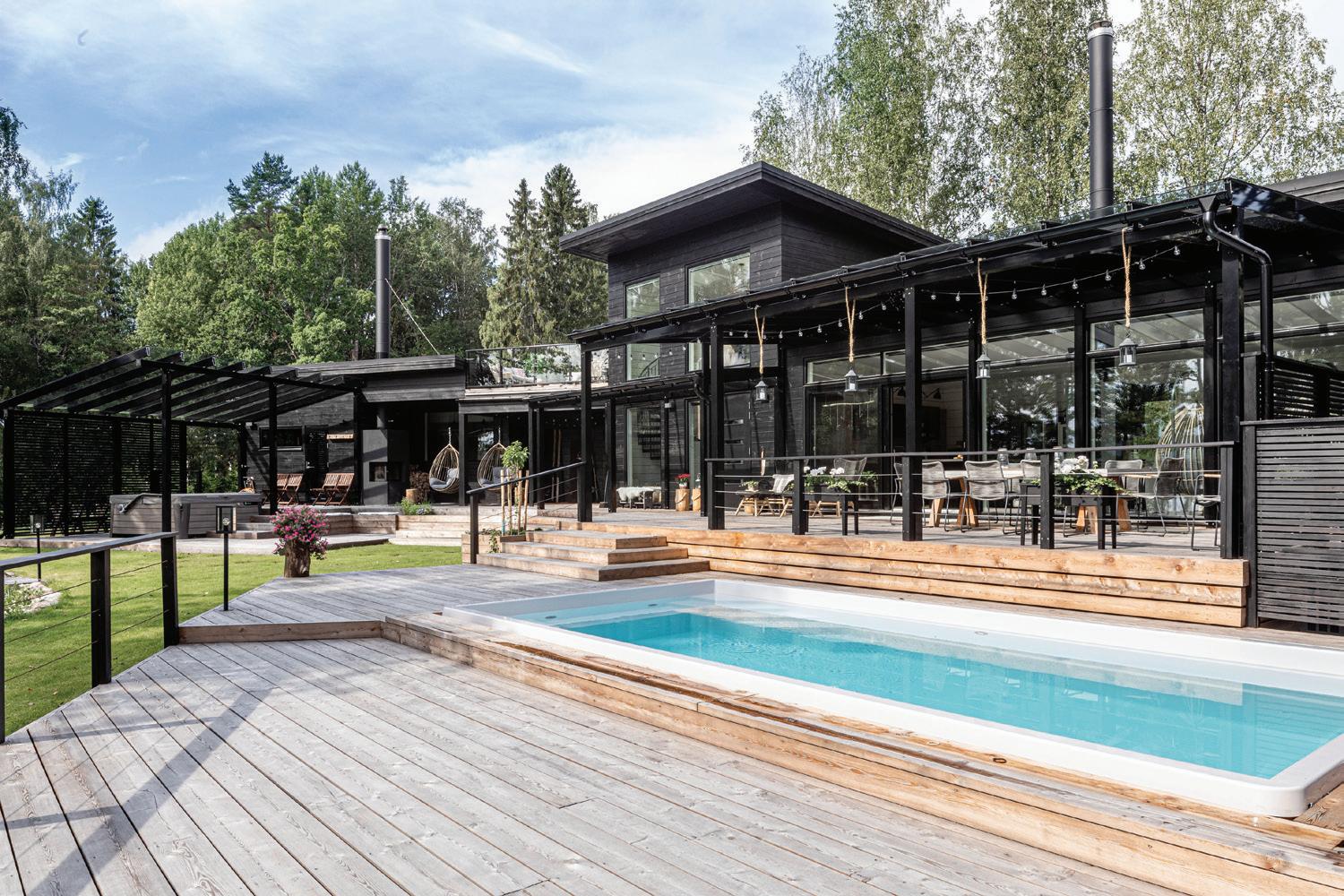



“Crooked Bay Tamarack” by Peter Dušek. Pigment print (photograph), edition 2 of 5, framed, 50"x74".

Peter Dušek Gallery
151 Mill St | Creemore 519.217.7770 | peterdusek.com
As the crisp fall air fills your surroundings, harness the full potential of the Kubota BX to make the most of your outdoor projects this season.

Robert’s Farm Equipment robertsfarm.com
Chesley 519.363.3192 | Lucknow 519.529.7995 Meaford 519.538.1660 | Mount Forest 519.323.2755 Owen Sound 519.376.5880
“Hunter’s Moon” by Lorne McDermott, 40"x40". Loft Gallery

18 Bruce St | Thornbury 647.296.9797 | loftgalleryart.com
Forged iron candlesticks are available in three sizes and three finishes: gold, black and silver.

Aspen & Ivy
322 King St Unit 5 | Barrie 705.721.8585 | aspenandivy.ca

20 18
This lovely pantry door featuring etched glass is a beautiful addition to any kitchen. The custom glass adds a touch of elegance, while the warm hardwood provides a cozy and inviting feel, perfect for entertaining inside during cool fall weather.
Desboro Doors
135830 R.R. #1 Concession 8 | Desboro 519.363.5635 | desborodoors.com
This cooling chip memory foam fill offers an unbeatable combination of support, contouring, and temperature regulation. Enjoy restful nights and wake up refreshed every morning.

Mattress By Appointment
16 17 18 19 21 16 17 19 20 21



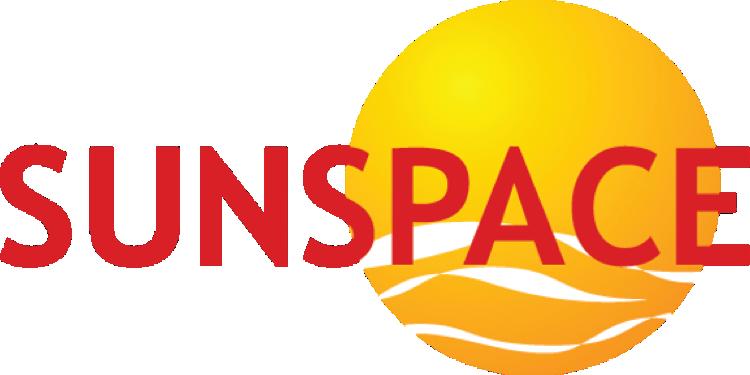



Looking for an elegant yet uncomplicated way to adorn your holiday home? Consider embracing a Scandinavian-inspired theme.
 by Laurie Severn |
by Laurie Severn |
photography by Clay
DolanAs the holiday season approaches, I find myself contemplating the ambiance I want to create in my home come December. There are countless ways to adorn your living space for the holidays, but personally, I draw inspiration from the Nordic countries and their tradition of embracing minimal, natural holiday designs.

You’ve likely heard of “Hygge” in recent years, a Danish concept that revolves around comfort, relaxation, and savoring life’s simple, meaningful moments. This concept heavily influences Nordic design, characterized by its modern yet minimalistic approach, use of lighter wood tones, clean lines, and the integration of functionality without clutter.
It’s important to note that simplicity doesn’t equate to a lack of style or colour. Instead, it involves a deliberate selection of statement pieces and accent colours to craft a warm and inviting holiday atmosphere.
With this philosophy in mind, I’ve compiled a list of ways to infuse Nordic style into your home this holiday season.
Scandinavian decor celebrates the “less is more” mantra. Consider reducing the number of decorations and allowing a few captivating pieces to take center stage. In my own home, I focus on curating standout items that can elevate spaces like the kitchen island, coffee table, or bookshelf. These Norwegian polar bears, for instance, make a delightful choice, especially when paired with elegant wireless lanterns that cast a warm glow during the long winter nights.
Growing up in an era dominated by plastic, I’ve shifted towards decorating with natural materials such as glass, wood, linen, and paper. I wrap my gifts in brown craft paper, tie them with twine, and embellish them with pinecones, evergreen sprigs, or dried oranges. Not only does this look stunning beneath the tree, but it’s also eco-friendly, as everything can be composted.


While many of us lack the time to craft our own decorations, I manage to dry some oranges in the oven each year for use in garlands and table arrangements. The scent while they’re baking is simply heavenly, and I reuse them season after season.






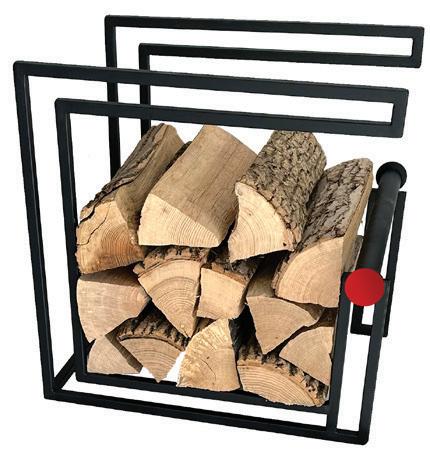



For a table garland, begin with a chicken wire base (wild grapevine works too), then attach small bouquets of cedar, pine, Eucalyptus, and berries. Incorporate rosemary and dried oranges for a naturally fragrant setting.
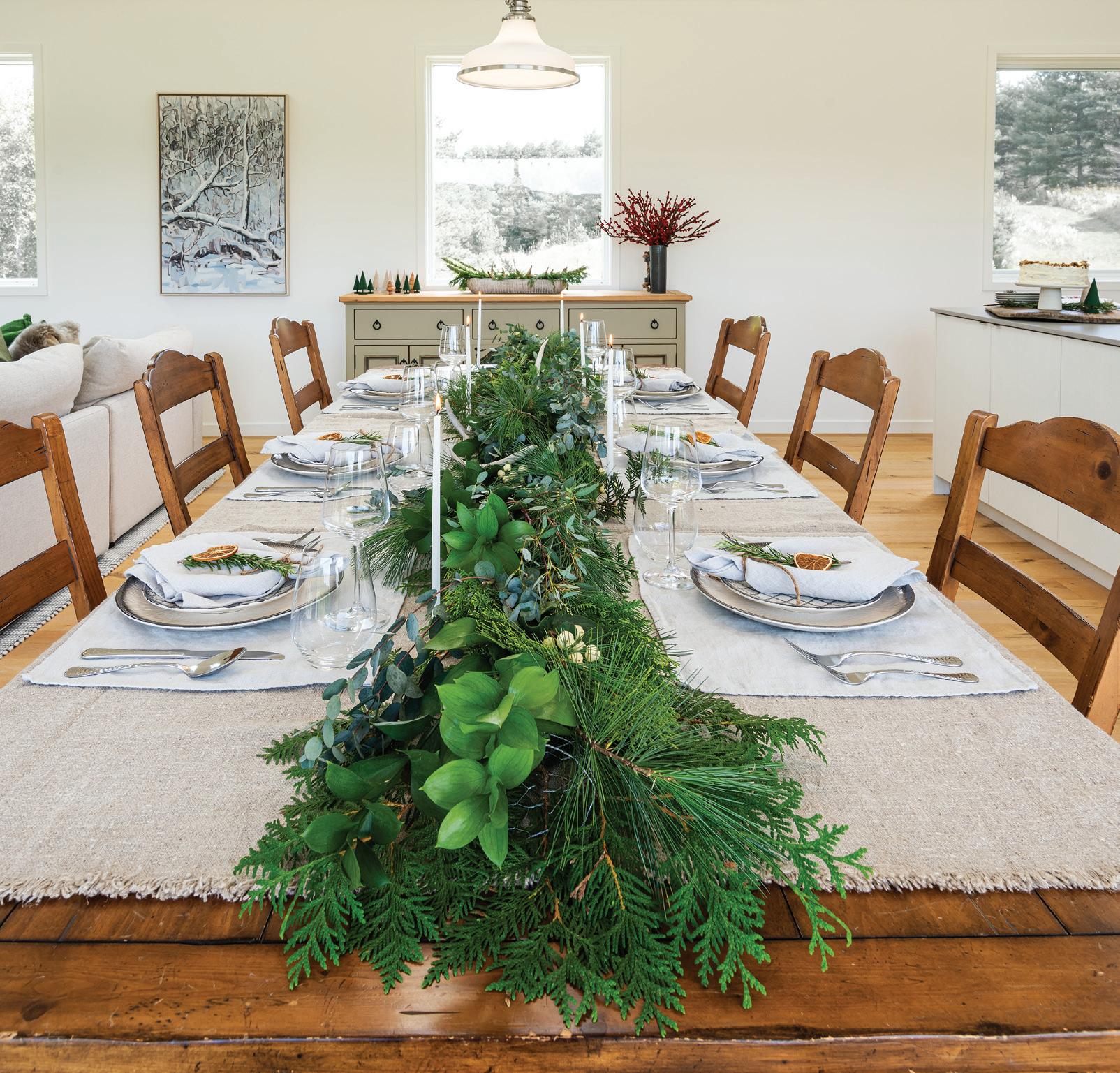
Bring the beauty of the outdoors inside. My top tip is to incorporate as much natural greenery as possible. I forage for cedar, pine, dogwood, and gather various elements from a local greenhouse, such as hypericum (white berries) and different types of Eucalyptus. Hydrangeas from my garden and interesting twigs collected from roadside walks also find a place in my Christmas displays. Get creative – you can craft your garlands and wreaths using abundant foraged grapevine. Enhance faux garlands or wreaths by intertwining natural greens with floral twine.
Every year when I visit Scandinavian countries, I’m struck by the widespread use of candles. They’re not reserved solely for holiday dinner tables; they adorn storefronts, offices, and kitchens. Candlelight exudes a soft and inviting glow, creating a cozy atmosphere. Opt for high-quality candles with extended burn times. I adore cone-shaped candles, which, when grouped on a table, resemble a charming forest. If you have children or pets, place them on a safe surface like a sideboard, front hall console, or kitchen island. While white candles are ubiquitous in Nordic decor, I like to introduce a touch of colour that complements the room’s palette or adds vibrancy to neutral spaces. If you opt for white, cluster them together for a curated look.



Layering natural textiles is key to achieving a beautifully textured look for the holidays. This can be effortlessly achieved by combining different fabrics in similar shades, creating a sense of Nordic coziness. Start by incorporating various textures like sheepskin, wool, linen, and velvet on your sofa or lounge chairs, and don’t forget to add plenty of throws for those chilly evenings.
On the dining table, I begin with linen table linens, placemats, and napkins, combining heavier-weight tablecloths with lighter-weight placemats and napkins. The Swedish have taught me the art of layering different linens, tablecloths, runners, and placemats in complementary colours or patterns.
To prolong the lifespan of your greens, mist them with water every 2-3 days. If placing them in a vase, change the water every other day to keep them fresh. Always ensure greens are away from candles, and if you include candles in your greenery display, never leave them unattended.
Achieving a Nordic winter wonderland in your home is entirely attainable with thoughtful effort. Follow these guidelines for a pareddown, minimalist decor approach, make your selections mindfully, incorporate candlelight, and don’t forget about sustainable greens and foraged branches. E
Laurie Severn, a stylist and retailer, can often be found at her stores, Lagom Design Shop or Heirloom142 in the charming village of Creemore, ready to assist with your decorating projects.





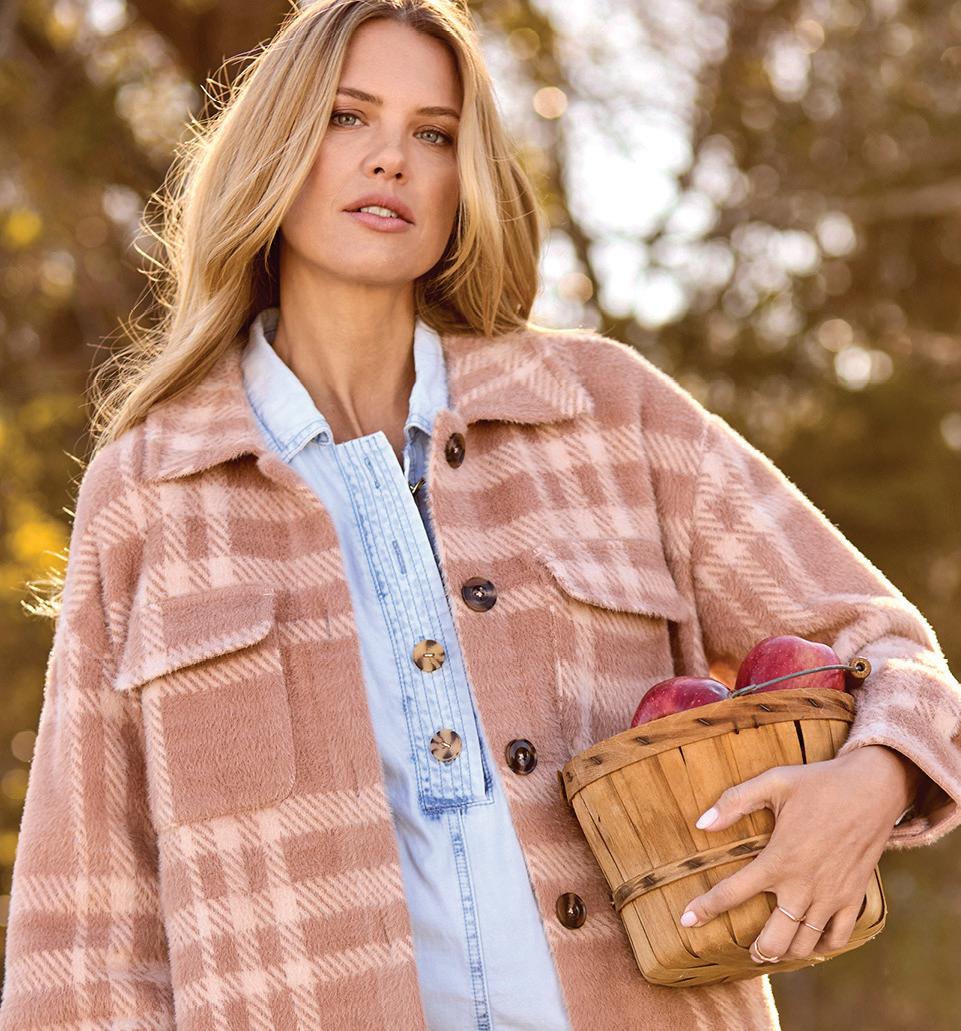






A naturopathic doctor from Creemore, Kathryne is passionate about helping others optimize their health. She and her husband Ryan are avid skiers, and love to spend time with their dog Ricci.


A devoted mother of four, Jordan seeks solace in family adventures like skiing and hiking. With all her kids now in school, she’s excited for the next phase of self-discovery.

Laryssa is a nature enthusiast who loves to travel. Her dream: skiing in Japan, inspired by her Collingwood upbringing.

Clothing, hat, bag, shoes and necklace from Cora Couture, Downtown Collingwood. With Levaero Aviation. JORDAN FLEMING





The iconic Birks collection features a 36-inch sterling silver pearl and rock necklace, layered with a tapered pendant and matching bracelet with stud drops from D.C. Taylor Jewellers, Downtown Collingwood. With Genesis Flight College.
KATHRYNE PETROV




have infused their unique style and vision into the business, curating a selection of pieces they adore. They’ve also rebranded the store and launched a brand-new website to showcase even more of their favorite products.
different and unique compared to other furniture stores in the area.
Bringing California meets modern Hamptons vibes to Collingwood, The Nest is a charming furniture and design store located at 311 Hurontario Street. They offer an extensive range of furniture, both custom and non-custom, home décor items, custom blinds, and top-notch design services.
Although The Nest has been a fixture in Collingwood for five years, a recent change in ownership has revitalized the store. New owners Krista Hay, Jamison Hanna, Krystian Skruch and Jon Farrugia
Krista and Jamie bring their passion for interior decorating and social media expertise, while Jon and Krystian contribute their knowledge in business, accounting, website development, and logistics. Their shared vision and complementary skills make for a harmonious partnership. Their business philosophy revolves around the importance of customer relationships and offering unique, quality products.
What sets The Nest apart is their distinctive aesthetic which brings a fresh and exciting vibe to Collingwood’s interior design and décor scene. They take pride in offering something
The Nest caters to a wide range of customers—whether you’re decorating a new home, looking to refresh your living space, or seeking the perfect hostess gift, The Nest has something for everyone.
The owners express their profound gratitude for the overwhelming support they’ve received since re-opening. Their journey with The Nest has been a dream come true, and they look forward to continuing to serve and delight their customers in Collingwood.
The Nest is more than just a furniture store; it’s a destination where style and community converge, offering a breath of fresh design inspiration in the heart of Collingwood.
311 Hurontario St, Collingwood thenestfurniture.comtransform your backyard into a paradise.
The Rusty Star is your go-to destination for exquisite Mennonite furniture that can be customized to suit your exact needs. Beyond their handcrafted furniture, they offer a wide range of home decor items for every room in your house and outdoor furniture to
The Rusty Star has been a part of the Maxwell community since 2008, offering top-quality furniture and decor to its customers. New owner Santana Moores, hails from Newfoundland and has called Ontario home for over two decades. With a background in retail, Santana brings a wealth of experience to The Rusty Star—the store’s values are rooted in offering exceptional quality, unique products, and exceptional customer service.
What truly distinguishes The Rusty Star is its sprawling 13,000 sq. ft showroom. Every corner of this space is adorned with beautiful, unique, and captivating items, making every visit
an experience. The Rusty Star isn’t just a store; it’s a treasure trove of stories waiting to be discovered. Each piece of furniture and decor item has its own tale, and the store itself has become a beloved part of Maxwell’s history. Santana and her team invite you to explore, shop, and become a part of the ongoing story of The Rusty Star.
Discover the beauty of Mennonite craftsmanship and unique home decor at The Rusty Star, where every visit is an adventure in style and quality.
408065 Grey Road 4, Maxwell therustystar.com
For over a century, the Harrison Park Inn Restaurant has been the heart of Owen Sound, offering a year-round, fully licensed dining experience with an open-concept dining room, a welcoming patio, and even a convenient takeout window.
Known for its friendly service and mouth-watering dishes, the Harrison Park Inn Restaurant has been a popular lunch spot for decades. Favorites include the Park Burger, the Park Clubhouse, and the Park Salad. Daily specials and homemade soups add to the culinary delights, and their Rueben sandwich and hand-battered fish and chips are legendary.
Owner Dave Porter says Sunday
brunch is perhaps the most popular attraction and features options like the Park Breakfast, Eggs Benedict, and the Hungry Hiker Breakfast. “Weekends in general are busy in the park,” says Dave. “There is always something going on that brings people down. It is a great stopping point on the way up the peninsula to get some fresh air and a poutine or an ice cream cone. Visitors to the area can pull off of Grey Road 18 and stop in at Inglis Falls before driving five minutes down the road to the park.”
The Inn has a rich history spanning over a century. Although the original structure was destroyed by fire in 1985, it was reborn as a full-service restaurant in 1987. Throughout its existence, it has remained a place for friends and families to create cherished memories.
“I started working at the Harrison Park Inn when I was 18 years old,” remembers Dave. “It was a summer job, scooping ice cream and bussing tables, before heading off to University. While studying Recreation and Sport Business at the University of Waterloo, he gained
insights into customer service. Having purchased the restaurant during the Covid-19 lockdown, Dave recognizes that the timing could have been better: “Buying a restaurant in the middle of a pandemic was not an easy venture, but knowing that my hard work, and that of my team is appreciated is what continues to drive me towards making this restaurant better every single day.”
Looking ahead, the Harrison Park Inn Restaurant is poised for exciting developments in 2024. Despite the challenges brought about by the pandemic, the restaurant is now wellpositioned to introduce new initiatives. These may include live entertainment, event nights, locally sourced seasonal menu items, showcasing local artwork, and even a heated patio. To stay updated on these exciting changes, follow them on social media and continue visiting this iconic restaurant in Harrison Park.
137 2nd Ave E, Owen Sound harrisonparkinn.comis set to make its mark, with an exciting new location opening late fall this year in Collingwood.
“Fitting is not a regulated industry,” says Kai. “And there are intricacies and complexities regardless of activity. Having spent over 10 years in Europe, we are bringing a World Cup caliber.”
equipment.”
With Stance Performance Fitting, owner Kai Palkeinen brings over 25 years of international experience to the forefront, having operated across the globe. This wealth of experience underscores the commitment to excellence that defines Stance.
Established in 2015, Pulse Boot Lab in Revelstoke marked the first step in Kai’s journey. In 2020, Kai sold the business while actively supporting the new owners and moving to Collingwood to open another location. Now, Stance
Kai grew up skiing on the slopes of the Escarpment, and he understands the community’s passion for outdoor activities and sports. Stance Performance Fitting adheres to a straightforward business philosophy: prioritize the skier, skiing, the team, and the community.
With cutting-edge scanning systems, tools for shell manipulation, and biomechanics-based 3-D printing, Stance stands out as a specialist in knee-down activities. “Athletic footwear is, and any activity, the most important piece of
Stance serves a diverse clientele. Firstly, they cater to individuals who invest significant time in skiing, biking, playing sports, or a combination thereof. Secondly, they provide solutions to those who’ve grappled with comfort and warmth issues, always maintaining the delicate balance between comfort and performance.
Kai and his team welcome you to drop by and ask questions—information and assessments come at no cost. More often than not, Stance can enhance setup, fine-tune performance, or address comfort and warmth concerns. Their goal is to enhance the experience of skiing, cycling, golfing, or tennis for every visitor.
142 Hurontario St, Collingwood stanceperformance.com

Ontario’s real estate market was on fire. Sales volumes and average sale prices had reached historic highs.
For example, in the greater Toronto region the average sale price had increased to $1,334,000 and sales volumes were trending well above historic norms, reporting more than 10,000 sales in March.
What the past year has clearly demonstrated is that the most influential factor in Southern Ontario’s resale market, whether residential, recreational, or waterfront, is the Federal Government’s monetary policy. Specifically, the decisions made by the Bank of Canada are crucial, as they relate to its views on inflation and, correspondingly, its benchmark rate. The metaphorical expression ‘a rising tide lifts all boats’ can be rephrased and reversed
as ‘rising Bank of Canada benchmark rates sink all real estate markets’.
During the pandemic, starting in 2020, the Bank of Canada continued to lower rates in order to keep the Canadian economy liquid and stimulated. And it succeeded, beyond anyone’s expectations. By February of 2022 the Bank rate was a mere 0.25 percent. Notwithstanding protocols and restrictions on viewings and showings in order to avoid the transmission of the Covid-19 pandemic, southern
In Ontario’s cottage country (Muskoka, Haliburton, Lake of Bays) the average sale price had reached $1,016 394, 24 percent higher than 2021 and 142 percent higher than 2020. Waterfront properties in the same region were also posting very strong numbers. The average sale price came in at $1,266,284, 18 percent higher than February of 2021, and 132 percent higher than 2020.
The numbers were just as impressive along southern Georgian Bay (Collingwood, Meaford, Blue Mountains, Wasaga Beach). In February 2022 the average sale price had been driven up to $1,132,000, 44 percent higher than 2021, and 95 percent higher than 2020. The numbers were even more eye-popping for the region’s
This secluded hillside retreat boasts awe-inspiring vistas that embrace Georgian Bay, The Beaver Valley, and The Blue Mountains. Situated on a sprawling 6.5-acre parcel, it exudes the essence of California’s mid-century allure with a profound emphasis on harmonizing indoor and outdoor living spaces. MLS# 40488843 Price $4,695,000

This exquisitely crafted, custom home, is located in the mature east side of Lora Bay in Thornbury. This spectacular home features just over 4650 sq. ft of finished living space and is set on a private, mature treed lot that is one of the largest in the neighbourhood. The interior aesthetic is refined and purposeful with defined spaces serving both form and function. MLS# 40470889 Price $2,799,000



This spectacular home features luxurious finishes throughout that are sure to impress even the most discerning buyer. The private, oversized lot has been meticulously landscaped for your enjoyment. Centrally located in the charming town of Thornbury.
MLS# 40477107 Price $2,099,000







waterfront sales. The average sale price came in at $2,084,000, 53 percent higher than February 2021 and an incredible 191 percent higher than 2020. As an aside, February’s average sale price was 264 percent higher than prices achieved in February of 2019.
The incredibly elevated prices were all a result of the Covid pandemic and the Bank of Canada’s monetary policy, which led to the lowest interest rates in Canadian history.
Since the spring of 2022 the Bank of Canada has relentlessly increased the benchmark rate at an unprecedented rate. It is currently 5 percent. It was 0.25 percent in early March 2022, an increase of 1,900 percent in 17 months.
Interestingly, the effects of this 1,900 percent increase in the bank rate have not been uniformly felt. In the greater Toronto area, the exorbitant bank rate has dramatically caused both sales volumes and average sale prices to plummet. In July of 2023 the greater Toronto area resale market registered only 5,250 sales, a decline of more than 50 percent compared to the 10,861 properties sold in March of 2022. The 5,250 reported sales were consistent with the number of sales registered in July of 2000 when the population of the greater Toronto area was almost one half of what it is today. Prices have similarly been impacted although not quite so dramatically. In the spring of 2022 the average sale price for the region was $1,334,000. In July of this year it had dropped to $1,118,000, a decline of more than 16 percent.
Neither the Muskoka region market place nor the southern Georgian Bay market place have reacted identically to the implementation of the punishing benchmark rate increases, although both have been negatively impacted. Looking at what has happened in the Muskoka region, in 2023 (to July) we see that the residential sales market has declined by more than 20 percent compared to the same period in 2022. The decline in the waterfront sales volume is just over 15 percent. Remarkably, and distinctly
different than the greater Toronto experience, average sale prices have not only remained strong but compared to 2022 have actually strengthened. The average sale price for residential sales to the end of July increased by 2 percent as compared to 2022, and waterfront prices have increased by almost 3 percent. In the Muskoka Lakes region, which includes Muskoka’s big lakes, Lake Rousseau, Muskoka, and Joseph, compared to 2022 the average sale price is higher by almost 10 percent, coming in at $2,734,000, although sales, like other regions are down by almost 13 percent compared to the period, June to July, of 2022.
The Southern Georgian Bay market has also shown dissimilar performance compared to the greater Toronto area market, both in terms of residential and recreational properties. On the residential side sales volumes have declined by more than 20 percent year-to-date compared to the same period last year, yet notwithstanding this large decline, the average sale price, like in the Muskoka region, has strengthened by 2 percent to $1,029,000. In a somewhat surprising turn of events, the waterfront market place has experienced a mild decline in sales volume (-2.8 percent) but a massive decline in average sales price, coming in year-to-date at $1,141,067, or almost 25 percent. This is the deepest decline in average sale price in
any of the markets explored in this report.
What this tells us is that the southern Ontario marketplace, both residential and recreational, is very sensitive to declining or rising Bank of Canada benchmark rates. The Bank’s decisions have a direct impact on affordability, particularly in urban, metropolitan areas where real estate decisions are most often driven by necessity, unlike purchases of recreational waterfront property, which are discretionary. Rising mortgage interest rates have made purchasing real estate in the greater Toronto area, the Muskoka region or southern Georgian Bay less affordable, and even though waterfront sales have managed to keep sale prices from declining, sales numbers are down because fewer buyers can afford this very expensive real estate.
These resale numbers make it unequivocally clear that the Bank of Canada, and the Bank alone, will determine how the southern Ontario resale market performs for the remainder of 2023 and beyond. At time of writing, the Bank made the important decision to hold its benchmark rate. If rates continue to hold through 2023 we will see a strengthening of the market, albeit marginally, as buyers adjust to a less volatile environment. An increase in the benchmark rate will see all real estate markets, like the ships in harbour, sink lower as the financial tide goes out. E































Serenity surrounds this gorgeous 2.63-acre property with a historical triple red brick century home, circa 1842, an orchard of beautiful pear and apple trees, as well as a lovely creek right on the border of the property. This home features original pine floors, a country kitchen, extra wide pocket doors opening into separate dining room. Across the large foyer and hallway is a spacious living room, den and main bathroom. Beautifully trimmed 5’10”x3’2” windows, crown moulding, oversized baseboards and 10’ ceilings are featured in most main floor rooms. A lovely banister leads you up to the 2nd floor where you will find 4 oversized bedrooms.

“We were so impressed with Janet’s knowledge of the market, staging and marketing, and we are thrilled with the result of our sale!
We highly recommend Janet Piotrowski to anyone considering buying or selling in the Southern Georgian Bay area. She made everything easy!”



$1,675,000
359280 GREY RD 15
OWEN SOUND
Waterfront! Minutes from Owen Sound’s popular East side, you’ll find this gorgeous 3+1 bdrm home on the beautiful shores of Georgian Bay. Docking for small boats, sail boats, jet skis, kayaks and canoes. This home is a must see. MLS #40425736


LET

$699,000
102699 GREY COUNTY RD 18
OWEN SOUND

Location! Minutes from Owen Sound, this fabulous 4 bedroom, 2.5 bath home has a large detached garage and spacious backyard.
MLS #40475564

$1,399,000
314839 HWY 6, WEST GREY 50 acres, mixed hardwood, 11 acres workable, large shop w/ hoist. Beautiful landscaped yard, pond and greenhouse. Bright spacious 3 bdrm, 2 bath and large open concept. This property is calling all hobby farmers and recreational property seekers.
 Shannon
Shannon
MLS #40454096
Deckers
Sales Representative
shannon@shannondeckers.com 519.375.5120

B u y i n g o r S e l l i n g ? C o n n e c t w i t h o u r t e a m f o r a l l y o u r r e a l e s t a t e n e e d s T o v i e w a l l o u r l i s t i n g s v i s i t o u r w e b s i t e :


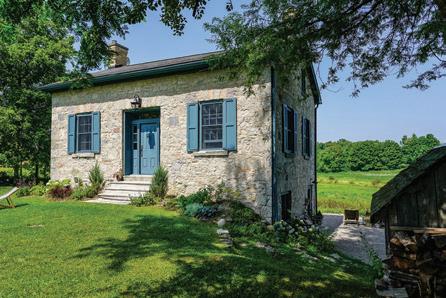
v a n t a g e R e a l t y G r e y B r u c e . c o m






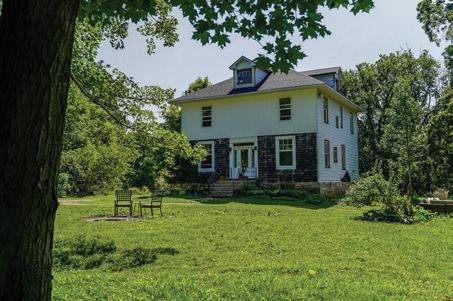






40479947

Located in the heart of Thornbury, steps to downtown and minutes to the harbour.



$1,499,000 • MLS®40478869
Sprawling 3 acres featuring 3 bed, 2 bath family home large shop, fire pit with outdoor dining area and beautifully landscaped gardens.


$2,485,000 • MLS® 40473925


110 Scotts Court, The Blue Mountains
4 bdrm 3 bath, 3750 Sq/ft ranch bungalow. Private backyard oasis awaits you, walkouts from principal rooms w/ flagstone tiered decks and perennial gardens.

$1,895,000 • MLS® 40461734
Rupert’s
28 Ramblings Way #38, Collingwood
Second floor, 2 bed, 2 bath condofully renovated and shows beautifully!
$554,900 • MLS® 40468250
5 Waterside Lane, Collingwood
WATERFRONT in the highly coveted, luxurious Shipyards Community, 3 bed, 3 bath, 3,700+ sq ft.

$1,975,000 • MLS® 40419151
214 Hidden Lake Road, The Blue Mountains
7 bed, 6 bath + guest suite . Views of the Bay and Alpine ski hills, minutes from great beaches and trails.


$3,100,000 • MLS® 40478450
185 Timmons Street, The Blue Mountains
Bright and spacious 3 bed retro property on a double lot, close to golf, skiing, the bay and more.

$999,000 • MLS® 40472093
Just 5 minutes outside of Collingwood. Spacious 5 bed, 3 Bath, 2,400+ sqft. $1,250,000 • MLS® 40410198



6 Brandy Lane #201, Collingwood
Beautifully upgraded 3 bed, 2 bath end unit with stunning hill & trail views and a year round pool.

$650,000 • MLS® 40455746

Beautifully designed one-story house, 3 Bed, 2 Bathhome offering convenient main floor living. Recently remodeled.
$649,000 • MLS® 40455327
150ft Pristine Georgian Bay Waterfront. Stunning Custom Built Normerica Post & Beam. 5 Bed, 3.5 Bath, 3-Season Room, Gym, 2-Car Garage, Finished Lower Level, Landscaped, Chipping Green & Sport Court.


Lake Eugenia - 95 ft North Facing Sandy Beach Waterfront. Beautiful 4 bed, 2.5 Bath Walk-out Bungalow, Stunning views from almost every room Large wrap around deck. Detached 1-car Garage.


Blue Fairway – Gorgeous Upgraded End Unit steps to the Cranberry Golf Course. 5 beds, 3.5 baths, main floor laundry, single car attached garage w/ driveway. Visitor parking, Rec Centre & Pool all nearby

Waterfront - Gorgeous home located in the private Blue Water enclave. Spectacular Georgian Bay views 4 Bedrms, 3.5 Bathrms, Main floor primary suite w/ walk out to deck that overlooks the Bay

Georgian Peaks Ski In Ski Out - Stunning 5 Bed, 5.5 Bath home backing into the Escarpment near Minute Mile Chair Fully renovated 2020, 4 bedrms have ensuites & dedicated ski tuning room in lower level


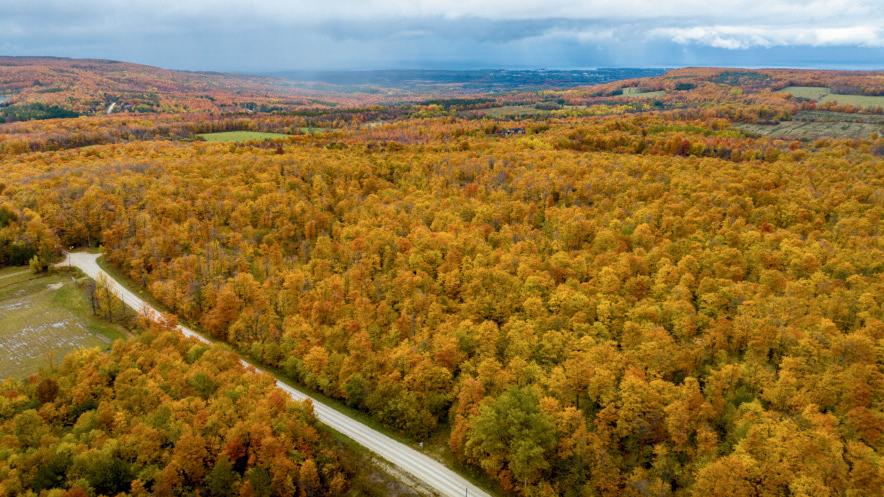

Cranberry/Living Stone Resort - Fantastic 2-bed, 1 5bath townhouse located in a quiet pocket. Very well maintained, electrical panel updated in 2020, newer appliances and freshly painted throughout.

In-Town Clarksburg - Cute 3 Bed, 2 Bath Bungalow on Quiet Street. Perfect for contractors/first-time buyers. Separate Art Studio/Family room. Beautiful Gardens & outdoor space. Estate sale, being sold As-Is

ABOUT THE PHOTOGRAPHER
Chris Monette has worked in image creation for over 20 years, specializing in documentarystyle content marketing. He relies on instinct, immersing himself in the moment to capture scenes without overthinking.
ABOUT THE PHOTO
During the Beaver Valley Fall Road Classic, Chris wielded a 300mm lens, opting for a wide-open aperture at f/2.8 and precisely configuring the shutter speed to around 1/500th of a second. This approach allowed him to capture the majestic rolling hills of the Escarpment and the splendour of the fall foliage.







